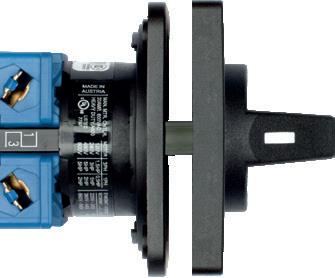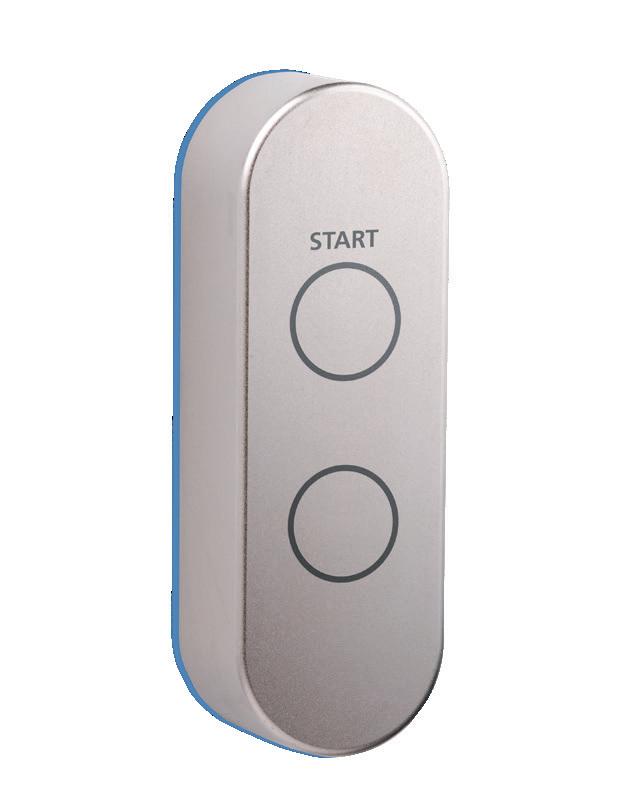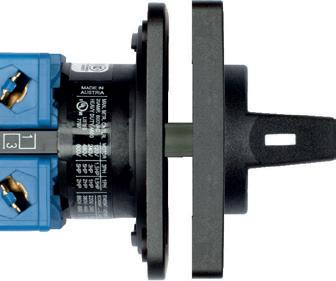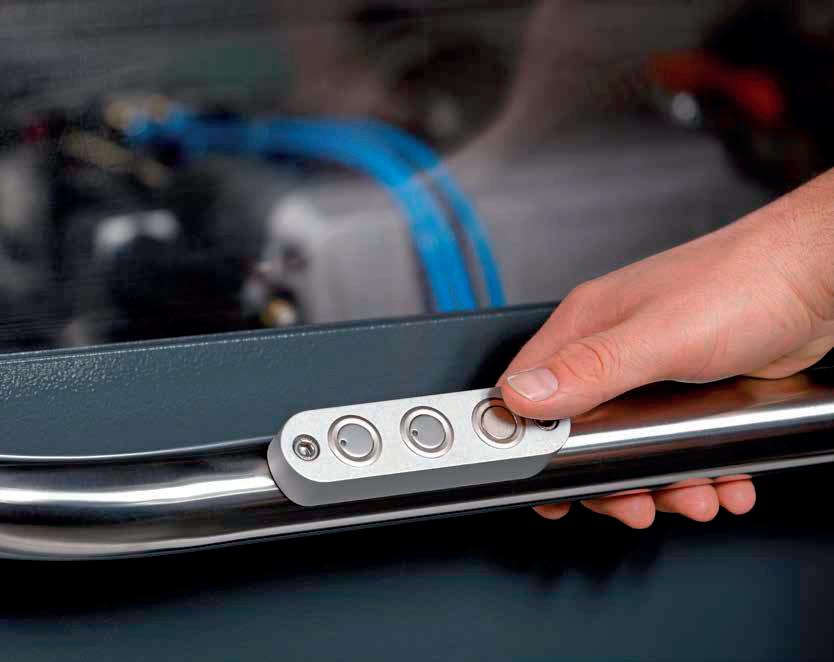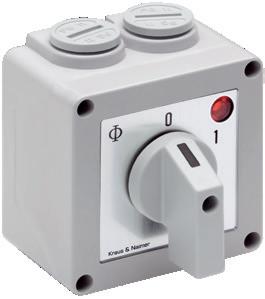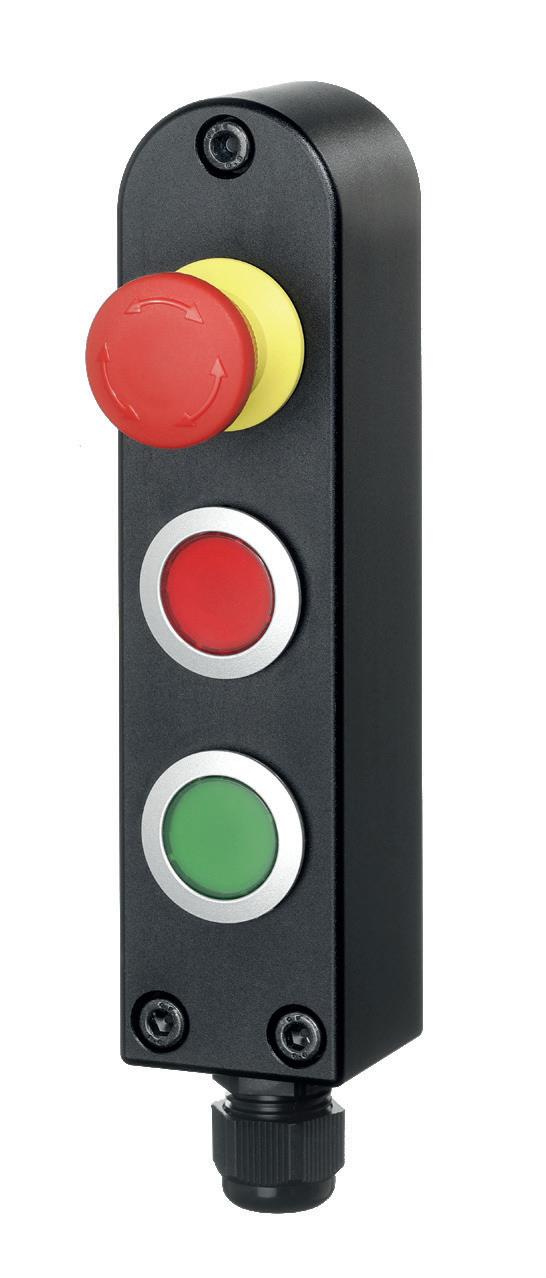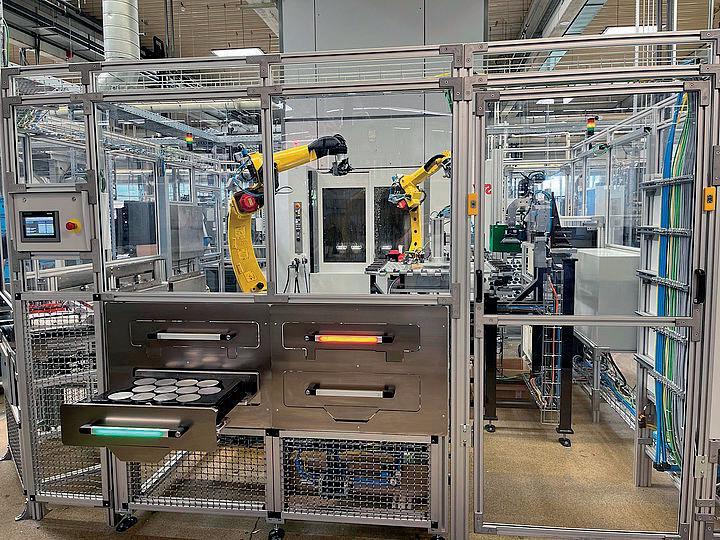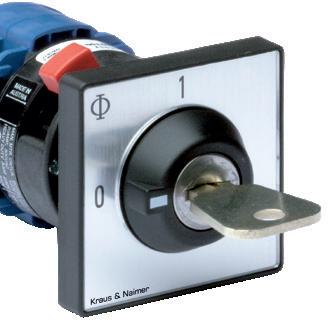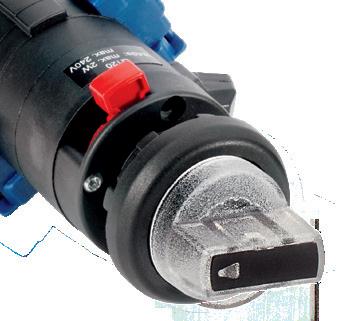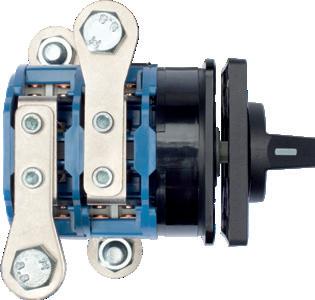






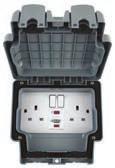
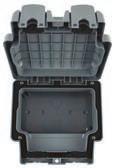












GreenBrook is entering an exciting new chapter: ‘GreenBrook Reimagined’. This is far more than just an updated look; it’s a profound commitment to redefining support and service for the electrical professional. As the article inside explains, GreenBrook is enhancing every touchpoint to empower contractors and wholesalers, from physical interactions to a completely revitalised digital experience.
The company’s commitment includes a strategic re-evaluation of its product solutions, ensuring contractors have the optimal tools for both intelligent installations and essential everyday needs. Expect to see familiar, trusted names alongside innovative offerings, all designed for efficiency and reliability.
But the company’s vision extends beyond products. GreenBrook is dedicated to championing industry advancement through information and collaboration. It believes in strengthening partnerships and facilitating vital conversations that shape the future of electrical contracting.
Ultimately, GreenBrook’s mission is to deliver comprehensive support that enables electrical contractors to thrive, therefore remaining informed, sustainable, and consistently profitable. It’s truly the professionals’ choice.

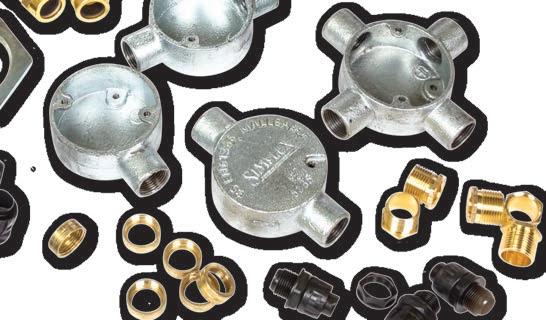


Advanced PIR motion sensors designed by industry professionals, for industry professionals.

Our PIR sensors provide exceptional sensitivity and accuracy at various heights. Ideal for offices, education, industrial units, residential applications, warehousing, sports halls, and more. IP65 versions also available.
Bluetooth® built-in
Configurable as standalone or networked using our dedicated app.
Colour choice
Available as standard in white or black.

7-year warranty
Market-leading warranty for added peace of mind.
Made in Britain UK manufacturing using premium components with high specifications.
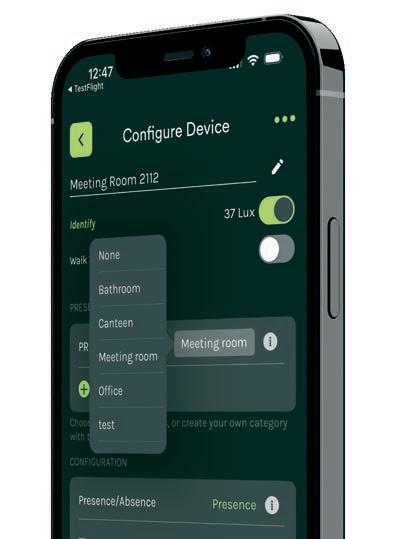

Visit our website www.cucumberlc.co.uk or call us on 03330 347799 for more information
A look at how SolarEdge technology has benefitted
Stacey Lucas of the BCIA argues that the time to ensure a greener future is now
ECN speaks with Electrical Engineering Consultant, Dale Fisher, about his career to date
A chance to win Wi-Fi Ceiling Speakers and a Wireless Micro Subwoofer, courtesy of Lithe Audio

A
Jeff House of Baxi assesses the
Chaz Andrews of Doepke UK explores whether or not we should follow safety recommendations made in product standards 40 Leigh Picton of Kiwa looks at the implications of the company broadening the scope of its service for certifying new products
When Eribé Knitwear required enhanced fire protection, it turned to Advanced for an appropriate solution
Sponsored content from across the sector
Jake Green of Scolmore Group looks at the key changes in the recently updated BS 5839-1: 2025 standard 46 Mathew Jones of Carl Kammerling discusses why supplying trusted tools is an essential step in helping customers to achieve safe isolation 47 NVC Lighting explores the ways LED solutions are transforming workspaces, schools, and healthcare estates
Chris Anderson of Ansell Lighting looks at how strip lighting has moved from a niche design accent to a key player in contemporary lighting schemes

Martin Russell of Marshall-Tufflex provides guidance on cable tray specification and installation
Mike Jackson of Unicrimp looks at the important role the humble cable clip has to play in electrical installations

David Goddard of LEDVANCE explains the role of lighting in relation to the circular economy
ECN looks at how and why low voltage lighting from Aldous Systems is proving increasingly popular
Peter Alexander of LEDVANCE discusses exactly what to look for when specifying a bulkhead 54 Paul Stearman of Greenlight Connexions assesses the future trends and best practices in LED lighting 58 Lighting innovations from Ovia have created a brand new ambience for the JiuJitsu Academy sites in the West Midlands
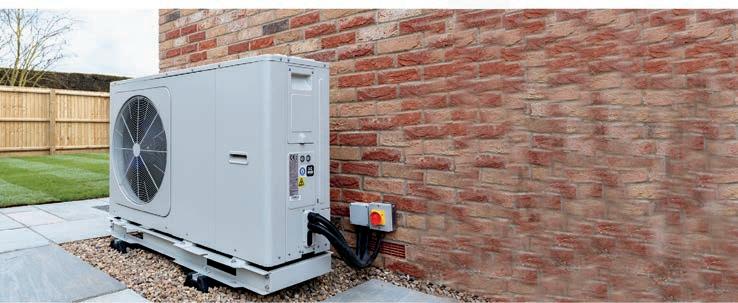



Welcome to the August issue of ECN!
With the ongoing skills shortage continuing to cause concern across all corners of the electrical contracting sector, it’s been heartening to see a renewed focus on this industry issue since we last went to press. Organisations across the sector are definitely playing their part in nurturing a new generation of electricians entering the industry, and with such a concerted effort from so many of the industry’s key players – including various initiatives being launched to help tackle the issue – the future does indeed look bright.
Let’s hope that the recent World Youth Skills Day in July, the formation of new open days connecting employers with future apprentices, and a new raft of contests showcasing the best emerging talent in the electrotechnical sector, among other initiatives, will all pay dividends.
Continuing this theme, our special supplement alongside this month’s issue is devoted to all
things skills – and while it takes a detailed look at the training courses available to those entering the industry, it also provides a comprehensive overview of the latest courses that are helping existing contractors upskill their capabilities to enhance their offerings in a myriad of ways.
Before I sign off, I’d just like to remind you about the upcoming ECN Awards, which are returning for a third consecutive year and will be taking place on 27 November. Once again returning to The Heart of England Conference and Events Centre in Coventry, the countdown is officially on, and with 24 awards up for grabs, we’d strongly encourage you to submit product entries for any of your innovations that have made a significant impact on the sector over the past 12 months.
Head on over to electricalcontracting.news. com/awards for further information, and be sure to have a read through of our preview in this month’s issue as we officially reveal the dozen judges who will be in charge of determining this year’s many winners. Entries close on 5 September, so we’d encourage you to get your entries in sooner rather than later!
Enjoy the issue, and see you next month!
GROUP EDITOR: SIMON ROWLEY
T: 01634 673163
E: simon@allthingsmedialtd.com
DEPUTY EDITOR: JOE PECK
T: 01634 673163
E: joe@allthingsmedialtd.com
SALES DIRECTOR: KELLY BYNE
T: 01634 673163
E: kelly@allthingsmedialtd.com
STUDIO: MARK WELLER
T: 01634 673163
01634 673173
E: mark@allthingsmedialtd.com

CEO: DAVID KITCHENER
T: 01634 673163
E: david@allthingsmedialtd.com
MANAGING DIRECTOR: IAN KITCHENER
T: 01634 673163
E: ian@allthingsmedialtd.com
ACCOUNTS
T: 01634 673163
E: susan@allthingsmedialtd.com
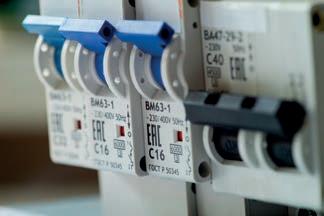

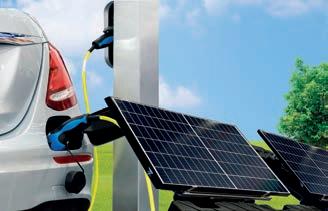
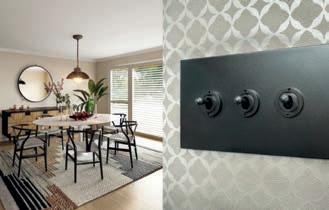
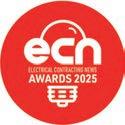



2-COMPONENT ERGONOMIC HANDLE DESIGN
For better grip and comfort
ANTI-SLIP HORNS
For greater protection INDUCTION-HARDENED JAWS WITH C.K OPTIMISED GEOMETRY
For increased cutting performance
DROP FORGED ALLOY STEEL For strength and durability
NEW LANYARD TETHER POINTS
For safety in and out of hand

www.ck-tools.com
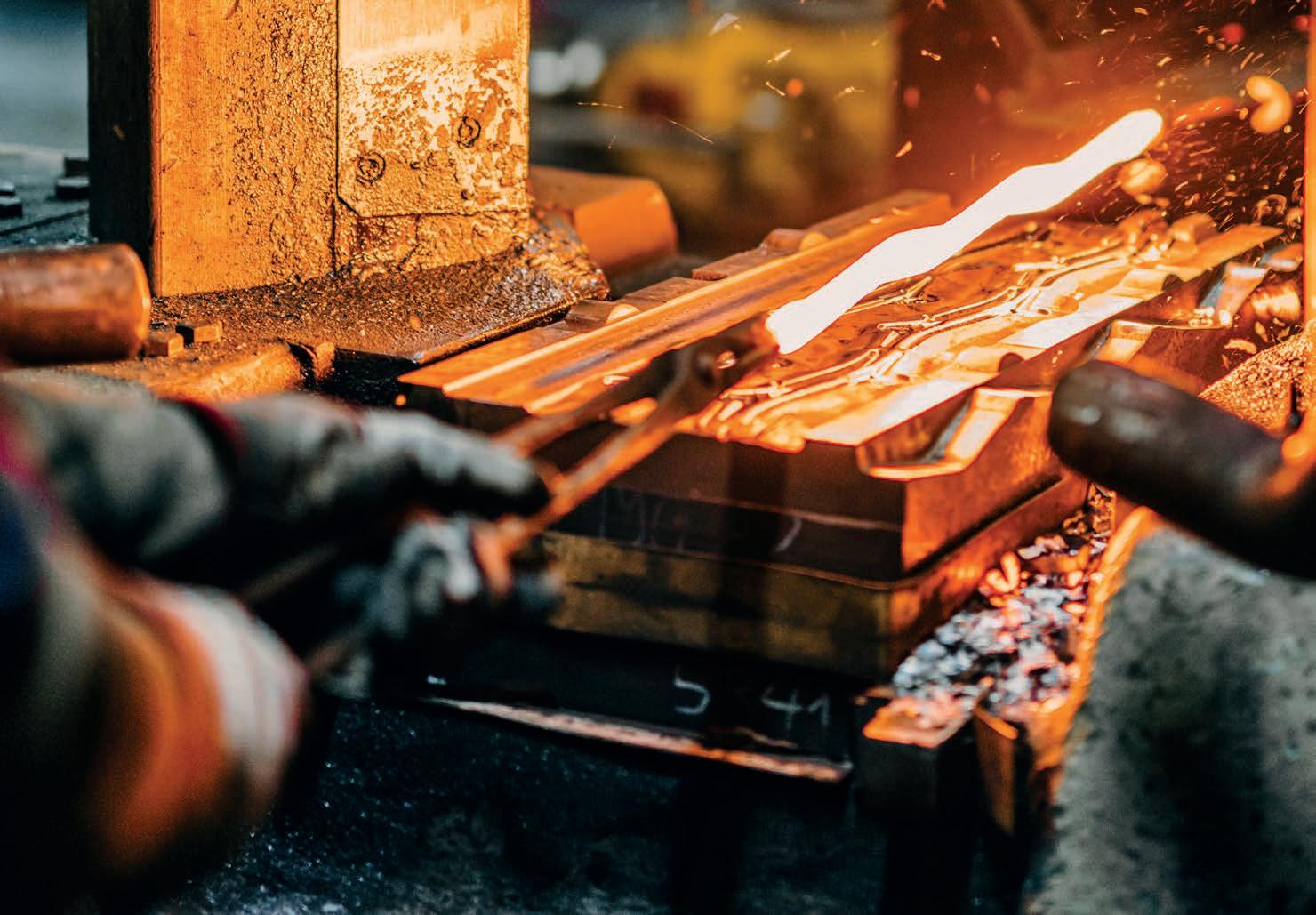
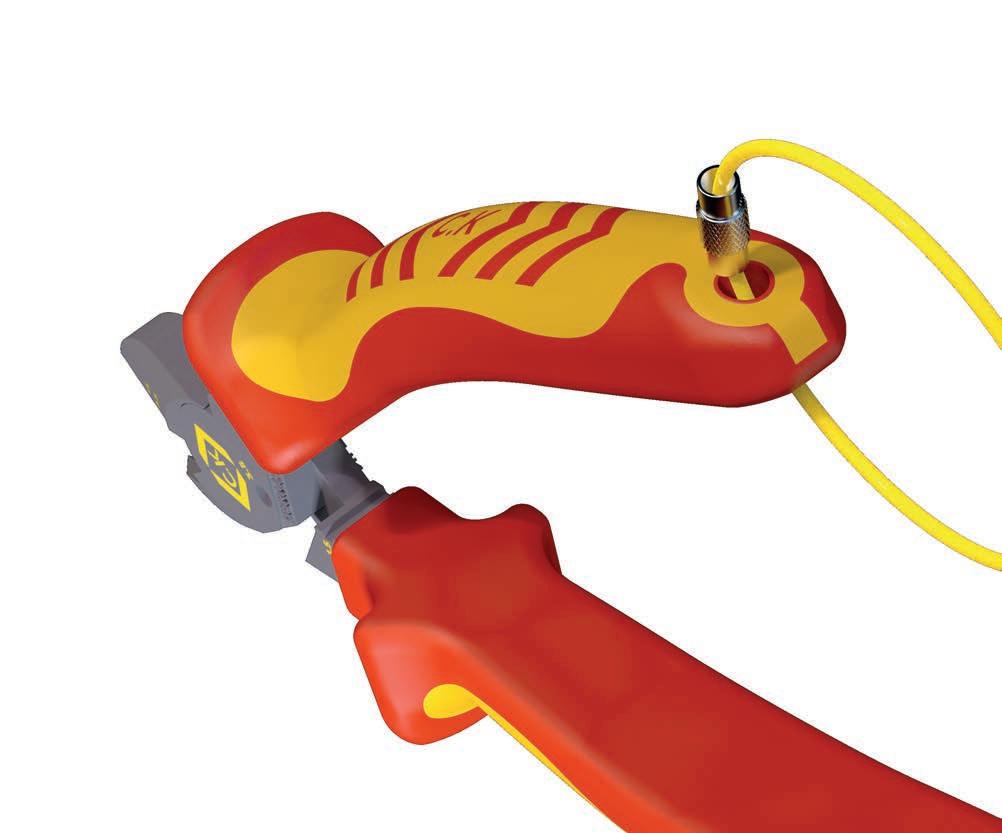
VDE APPROVED
Tested to 10,000V
Drayton, a UK-based manufacturer of heating controls and smart home systems, has released the first episode of its new Sofa Sessions series, which will explore pressing topics in the housing sector, share insights, and highlight pivotal talking points for housebuilders and social housing providers.
Backed by 75 years of experience in designing and manufacturing products for energy-efficient domestic heating systems, Drayton is to release a further session on its YouTube channel this summer, with the sessions covering topics ranging from fuel poverty, funding schemes, decarbonisation, the new build market, and Boiler Plus legislation.
During each episode, all aimed at professionals within the housing industry, the Sofa Sessions will take a deep dive into these themes as part of a discussion with industry experts.
Viewers will have access to expert opinions and insight on areas including how the health and wellbeing of residents can be improved through warmer homes, the necessity to achieve net zero by 2025, and future home standards, as well as funding availability through schemes and specific legislation.
Andrew Baines, National Sales Manager at Drayton, comments, “We’re thrilled to launch the Sofa Session series as a continuation of Drayton’s commitment to sharing knowledge and educational content throughout the industry. The topics have been specifically selected to ensure each episode reflects relevant talking points, drives conversation around these areas, and offers those in the industry a reliable source of expert advice and information.”
Drayton, draytoncontrols.co.uk
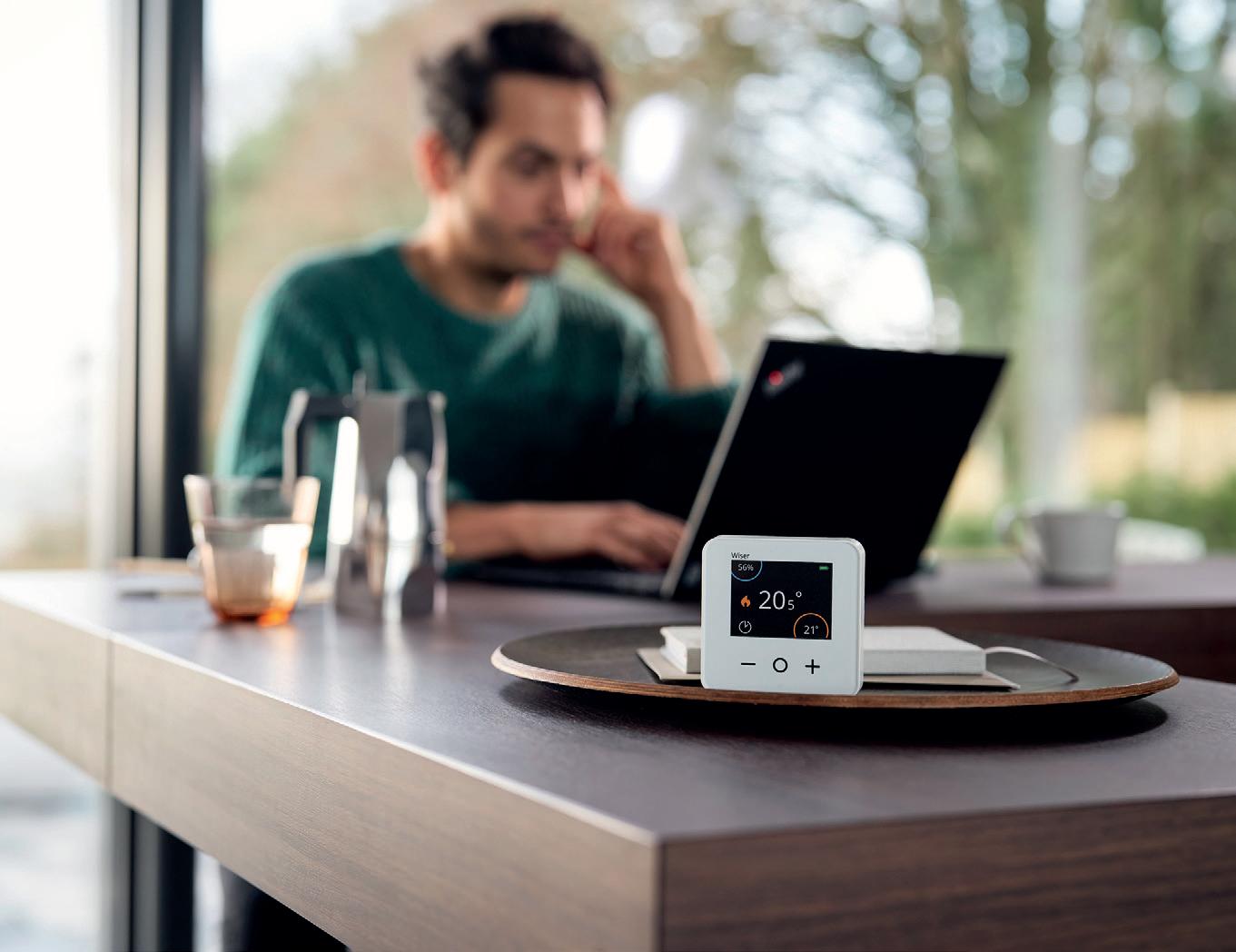
According to UK engineering consultancy Egis the success of the government’s vision for a clean energy future hinges on its ability to address the growing skills gap.
This follows the news that ‘shovel-ready’ wind and solar farms will be prioritised for grid connections, a move that replaces the longstanding first-come, first-served approach, which has led – Egis argues – to “unviable schemes holding up clean energy projects ready to plug in.”
The company has welcomed this decision, recognising it as a crucial step in unlocking the nation’s renewable energy process and accelerating towards net zero.
Yet the business has also warned that for communities across Britain to ‘benefit from good jobs and investment in the clean energy economy,’ the industry needs to see the shortto medium-term government initiatives that will be taken to close the estimated shortfall of 200,000 workers.
“We applaud the government’s commitment to accelerating clean energy development,” comments Joanne Moran, Director for Water, Environment, Energy Transition, and Nuclear at Egis UK & Ireland.
“But the success of this vision depends on more than just expediency and infrastructure –it requires people.
“While businesses like Egis are adopting various initiatives to attract and retain talent, such as apprenticeships and graduate programmes, we need a national roadmap to develop the specialist skills required to drive this transition forwards.”
Egis believes that a coordinated approach will attract further private investment into the sector, helping the government meet its goal of almost fully powering the country with clean electricity by 2030.
Egis, egis-group.com
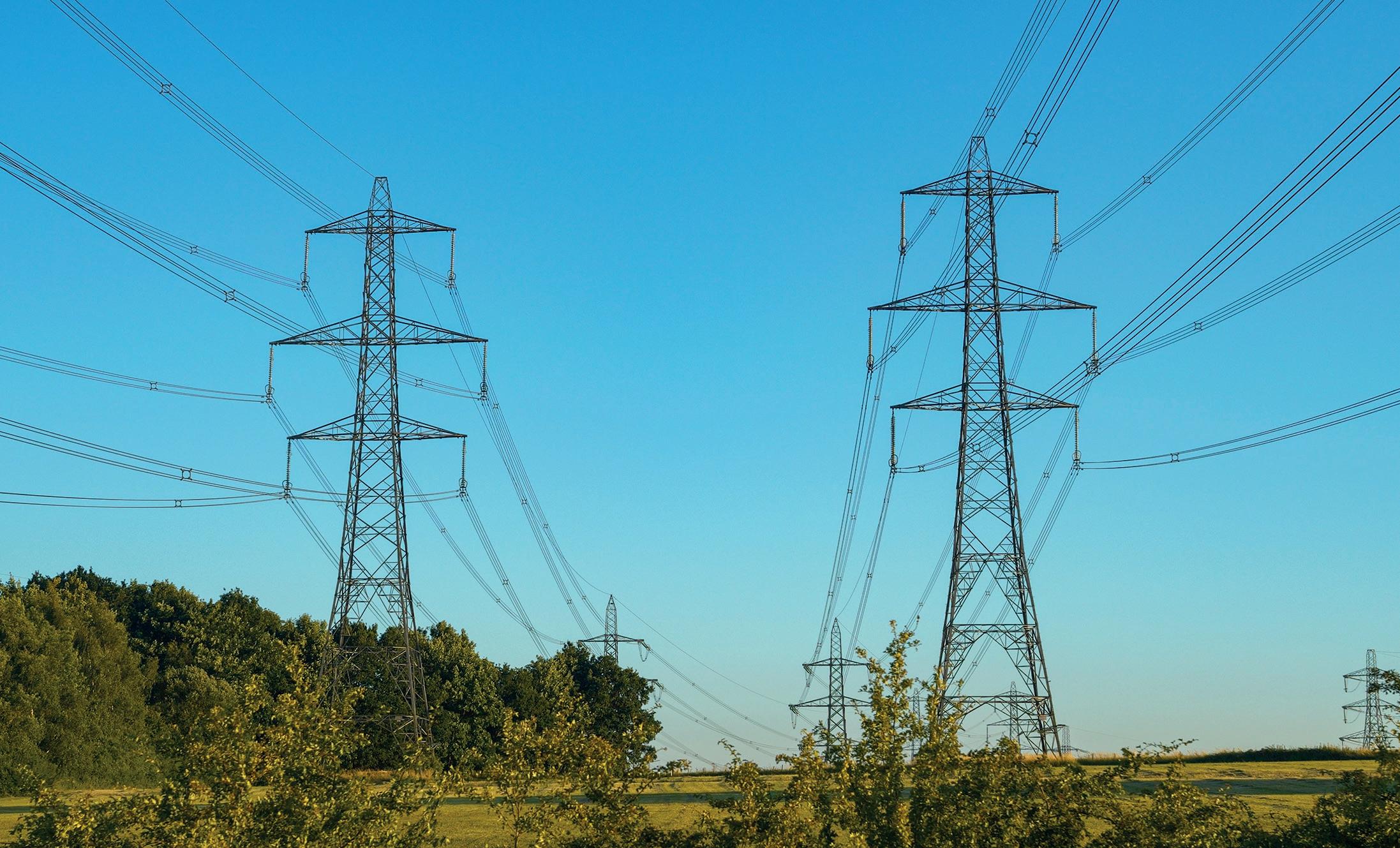

Football legends helped officially launch the EFL (English Football League) and electrical wholesaler Rexel and Denmans’ two-year partnership at a colleague event in July.
Sky Sports’ Michelle Owen led a fireside chat with John Barnes (pictured) and Clinton Morrison around the importance of grassroots and community in football, as well as career highlights and how they can ‘power dreams’ of the next generation of footballers.
Rexel and Denmans’ two-season deal will see the electrical wholesaler highlight its commitment to football across the EFL’s three divisions until the end of the 2026/27 season.
The partnership with EFL is Rexel and Denmans’ first foray into English professional football and will see investment in grassroots football and strengthening of community ties.
Initiatives planned for 2025/26 season include ticket giveaways, kit donations to grassroots football clubs, chances to win match balls, and other experiences.
Natalie Moss, Chief Digital Marketing & Transformation Officer, Rexel UK, comments, “We’re incredibly proud to deepen our commitment to football through these significant partnerships.
“This collaboration goes far beyond the pitch. It’s about investing in the heart of our communities, nurturing talent, creating unforgettable experiences, and ultimately powering the dreams of individuals and families who live and breathe the game.”
As an ‘Official Supporter’ of the EFL, Rexel and Denmans will have a presence at the EFL’s five Wembley finals, in addition to exposure on the EFL website, and digital and social media channels. Rexel UK, rexel.co.uk


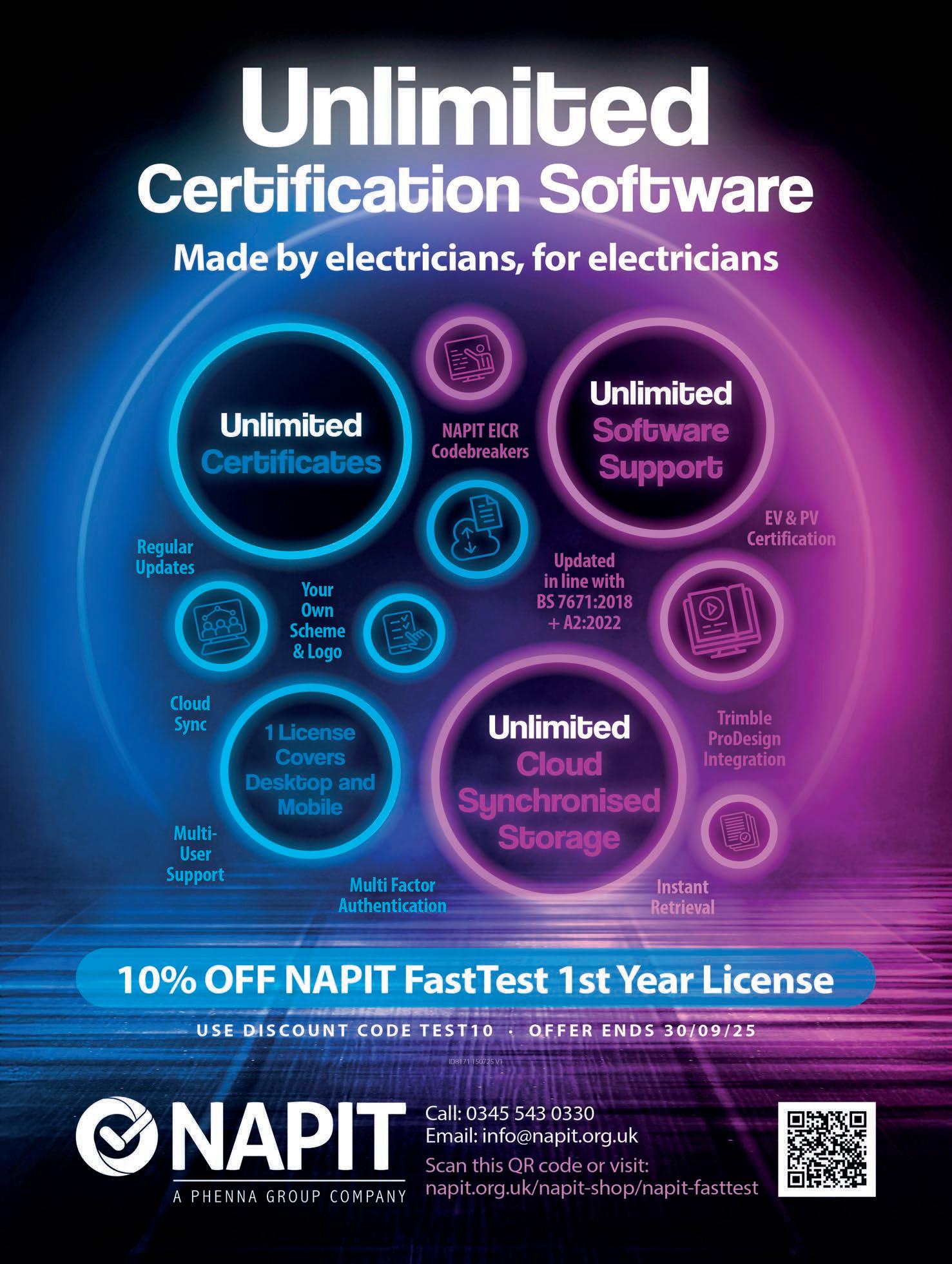
This summer marks five years since the introduction of mandatory Electrical Installation Condition Reports (EICRs) for private rented homes in England.
NICEIC, a certification and training body for the electrical industry in the UK, is encouraging contractors to check their records to confirm whether there are properties they conducted EICRs on in 2020 due for renewal.
Under legislation introduced in June 2020, landlords must have electrical installations in privately rented properties inspected and tested at least every five years by a qualified and competent person. With the fifth anniversary now here, many properties will require updated reports.
Paul Collins, Technical Director at NICEIC, says, “We’ve reached a key milestone, with five years now having passed since the introduction of The Electrical Safety Standards in the Private Rented Sector (England) Regulations.
“Now is the time for contractors to check their records and support clients by identifying EICRs that are due for renewal. This is not only about compliance, but also ensuring ongoing safety for tenants and properties.
“Contractors can play a vital role by reminding landlords of their legal responsibilities and offering timely support. This presents an opportunity for NICEIC-certified businesses to strengthen

The Electrical Safety Roundtable has launched new guidance on how to find a Competent & Qualified Person for Landlord Electrical Safety Checks. The guidance, published on 30 June, is a checklist that aims to support landlords in finding a competent and qualified person.
In England, Wales, Scotland and Northern Ireland, it is a legal requirement to have an electrical inspection and test of the electrical installation within a privately rented property undertaken by a suitably qualified and competent person at least once every five years.
For non-rented domestic properties, it is recommended that these are carried out every 10 years. This test is called Periodic Inspection and Testing, and an Electrical Installation Condition Report (EICR) is produced.
To ensure safety and compliance, landlords must use a competent and qualified person for electrical safety checks and to issue the EICR. The Electrical Safety Roundtable’s Electrical Safety in the Home Group has launched this new checklist to help landlords and homeowners find a competent and qualified person for electrical safety checks.
The checklist, titled How to Find a Competent & Qualified Person for Landlord Electrical Safety Checks, breaks down the necessary checks to be undertaken when selecting a competent person.
The checklist includes the certification, qualifications, insurance, and experience that demonstrate the electrical inspector and tester are a Competent Person to carry out electrical safety checks.
View the guidance at the website below. ESR, electricalsafetyroundtable.co.uk

relationships with their customers and demonstrate leadership and commitment to safety and compliance.
“Helping your customers stay compliant is a real value-add. NICEIC-certified businesses are ideally placed to lead the
Martindale Electric, a manufacturer of electrical test equipment, has announced it is formally linking up with the ECA, the UK’s foremost trade association for electrotechnical and wider engineering services industry.
The partnership sees Martindale Electric become an ECA Commercial Associate, opening the door to closer engagement with ECA’s Member businesses that represent a combined annual turnover of over £6 billion. They range from small and medium-sized enterprise (SME) electrical firms to nationwide engineering services businesses across England, Wales and Northern Ireland. ECA Members undertake a range of electrotechnical design, installation, inspection, testing, monitoring and maintenance work.
This package also includes access to a range of ECA content, including best practice guides and research, the latest technical and industry news, and use of the ECA Commercial Associate logo.
“The opportunity to engage further with the ECA and its highly accomplished membership was an absolute no-brainer,” says Steve Dunning, Managing Director at
way in maintaining standards across the private rental sector.”
NICEIC-certified businesses can check their records using the NICEIC Online Certification System.
NICEIC, niceic.com
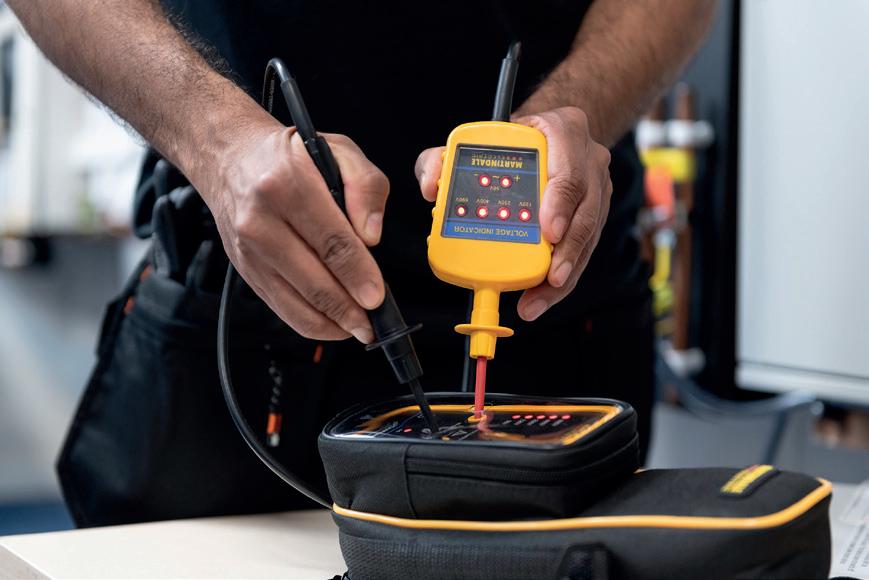
will be utilising our ECA associate status to help our business grow and ensure the industry delivers best practice and high standards.”
With this new partnership, Martindale Electric aims to further strengthen its relationships with contractors and specifiers, while championing the safe working practices that have defined its reputation for nearly a century. Martindale Electric, martindale-electric.co.uk
The Electrical Safety Roundtable (ESR), an industry forum uniting electrical safety experts with the goal of improving electrical safety, has launched new guidance entitled How to Find a Competent & Qualified Person for Landlord Electrical Safety Checks.
The guidance, published on 30 June, is a checklist that aims to support landlords in finding a competent and qualified tradesperson.
It is a legal requirement in England, Wales, Scotland, and Northern Ireland to have an electrical inspection and test of the electrical installation within a
privately rented property undertaken by a suitably qualified and competent person at least once every five years.
For non-rented domestic properties, it is recommended that these are carried out every 10 years. This test is called ‘Periodic Inspection and Testing,’ through which an Electrical Installation Condition Report (EICR) is produced.
The ‘Competent Person’ undertaking this EICR should be a skilled individual, registered with a Full Scope Electrical Competent Person Scheme or Registration Body who monitors and regularly assesses the
electrician/inspector to demonstrate their competency and ensure they hold Public Liability and Professional Indemnity Insurance.
ESR’s checklist breaks down the necessary checks to be undertaken when selecting a competent person.
The checklist includes the certification, qualifications, insurance, and experience that demonstrate the electrical inspector and tester is a competent person to carry out electrical safety checks.
Recolight, recolight.co.uk






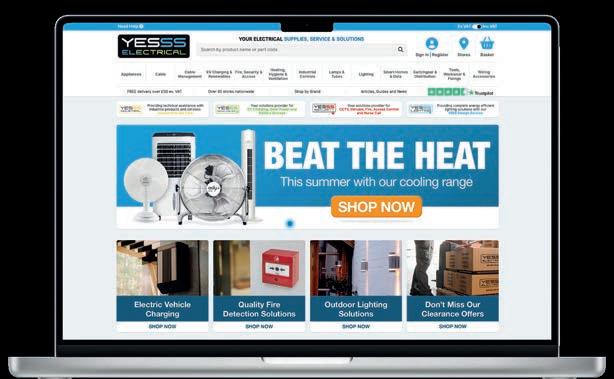



Screwfix has announced that registrations are now officially open for Screwfix Live 2025. The event will once again return to the Farnborough International Exhibition centre from Friday 26 until Sunday 28 September.
Now in its 12th year, Screwfix Live continues to grow in popularity, offering customers the opportunity to interact with 200 leading trade brands and get hands-on with the latest tools, products, and innovations.
The show will include exclusive, event-only offers and giveaways, live product demos, hands-on experiences, expert Q&A sessions, and more. Screwfix Live is free to attend and visitors can register now to secure their place and a free goody bag worth over £40.
Building on the success of last year’s event, Screwfix Live will have more tills, more free parking, and extra seating space for customers to make the most of their day at the show.
Screwfix Live will also host the final of Screwfix Top Tradesperson 2025. Ten finalists will face a panel of industry experts before the worthy winner takes home the ultimate £20,000 trade bundle of tools, tech, and training.
Max Britten, Screwfix Managing Director, says, “Screwfix Live is a real highlight of the year and a fantastic opportunity to bring the trade community together under one roof.
“Whether you’re a seasoned professional or serious DIYer, there’s something for everyone at Screwfix Live. We look forward to seeing you in September!” Screwfix, screwfix.com
Scolmore Group, a provider of wiring accessories, circuit protection, lighting, fire and security systems, and cable accessory products, has donated of a range of electrical accessory products to Telford College to support students pursuing careers in electrical and engineering fields.
The donation includes an assortment of products from across the Scolmore Group of companies, including Click switches and sockets, Elucian distribution boards, and Unicrimp cable accessories.
These products will be integrated into the college’s practical training programmes, giving students hands-on experience with industry-standard materials.
“We are passionate about investing in the future of the electrical industry,” says Neil McManus (pictured right), Technical Engagement Engineer, Scolmore Group. “By providing these essential products to Telford College, we hope to inspire and equip the next generation of skilled professionals who will drive innovation and excellence in our sector.
Luke Foster (pictured left), Environmental Technology Lecturer at Telford College, adds, “We are incredibly thankful for this support from Scolmore Group. Access to up-to-date and industry-standard equipment is vital for

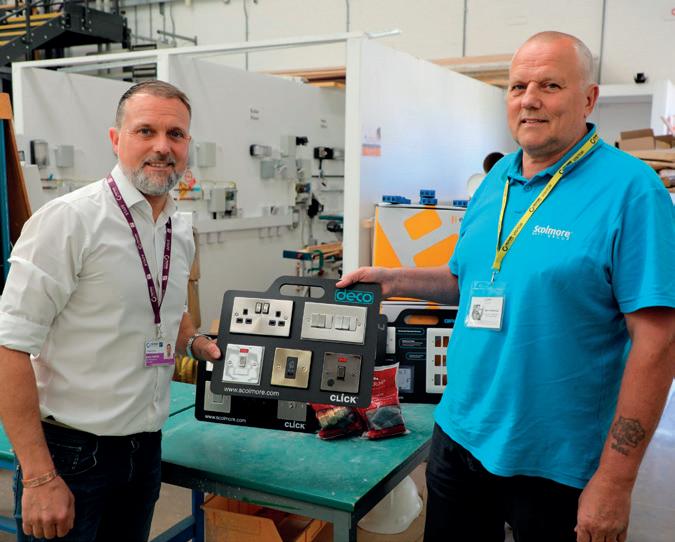
our students, and this generous donation will make a real difference in their training and readiness for the workforce.
“It will be used by our current electrical installation students, our electrical installation and maintenance apprentices, and our introduction to basic electronics adult course, keeping their studies as up to date as possible.
“Some of the equipment we’ve been given, such as the Ovia Click Flow system for lighting, introduces new installation methods and will give students a huge advantage when starting their careers in the electrical industry.
Scolmore Group, scolmore.com
Exterior lighting manufacturer CU Phosco has promoted Nihal Najeem to the role of Laboratory Manager, less than a year after joining the business as Laboratory Assistant. Nihal brings a strong understanding of lighting standards and product compliance to the role.
Electrical Contracting News is excited to announce that NAPIT will be joining the impressive sponsor line-up at the ECN Awards 2025. The company will sponsor the entertainment at the event, which takes place on 27 November 2025 at the Heart of England Conference and Events Centre in Coventry.
As a fast-growing government-approved and UKAS-accredited membership scheme operator in the building services and fabric sector, NAPIT is committed to raising standards and safety with a friendly and common-sense approach. What better way to demonstrate this than by partnering up with the ECN Awards to help raise the profile of those who are making a difference in the industry through enhancing safety, efficiency, and sustainability.
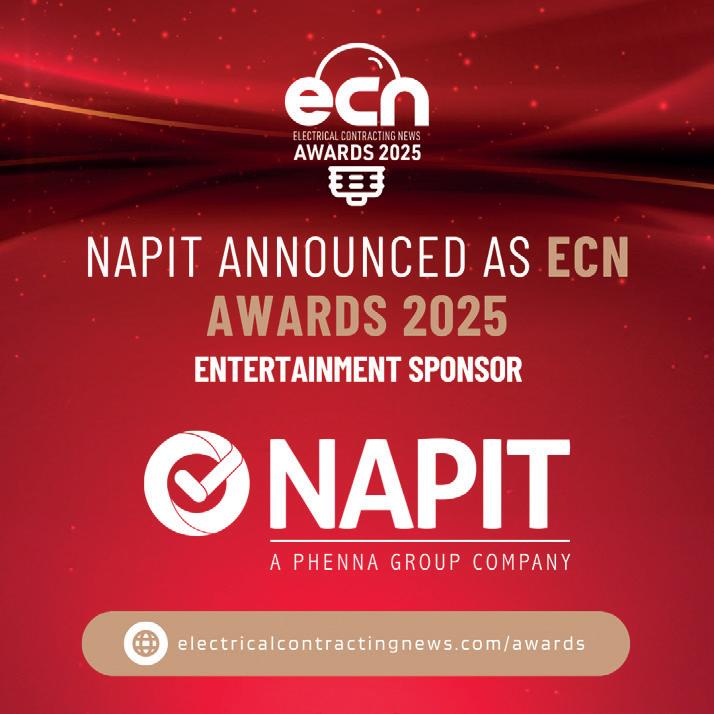
NAPIT tells us that the company is proud to support a fantastic evening of entertainment which recognises those who have dedicated themselves to enhancing the electrical contracting industry.
Furthermore, NAPIT looks forward to seeing the best of the industry at the event in November, while celebrating what will have been a remarkable year of progress in the industry with regard to safety, sustainability, and growth. NAPIT, napit.org.uk | electricalcontractingnews.com/awards
Kevin Vidal, a qualified air conditioning technician with more than 15 years’ experience in the HVAC sector, has been appointed Technical Service Manager at LH-plc Kevin will be responsible for providing clients with advice and quotes on further works identified following engineer visits.
FireAngel, a manufacturer of smoke, heat and carbon monoxide alarms, has introduced a dedicated Wholesaler Support Team. Regional Account Managers, Beth Christmas, Lewy Fardon, and Dan Grimsdell will work with customers to navigate evolving legislation, optimise stock availability, and strengthen their fire safety offering.




With the increasing scope of refurbishment projects and the widespread adoption of net zero, and smart and sustainable technologies, who do we truly depend on? The professionals, of course.
Electrical contractors play a pivotal role in the growth of the construction sector here in the UK. Therefore, by association, what products and suppliers they choose can make a significant difference to their own ability to secure work and to grow their own businesses. GreenBrook recognises its obligation (in fact, its duty) to provide the very best choice for its customers, so that the company can do exactly that – grow and prosper.
For many years GreenBrook has been a partner of choice within the electrical industry, but things are about to change as the company presents the new look GreenBrook.
So, this is just GreenBrook repacked, right? Wrong – this is GreenBrook Reimagined.
As Managing Director Peter Ratcliffe explains, “This is very definitely not just a quick design makeover; this is a completely redefined brand proposition that will deliver an unparalleled customer experience. We recognise that our focused interaction with customers, be that physically in-store or digitally, is key in us delivering our ‘best in class’ promise.
“We are in the process of re-developing our website which will offer significant additional features offering an immersive workspace that provides resources, industry intelligence, product information and loyalty programmes, that will ultimately empower each and every customer that comes into contact with GreenBrook products.”
Of course, GreenBrook knows that all customers value their time, so it’s important that they find the very best products as efficiently as possible. Acknowledging the sheer amount of choice that wholesalers and contractors have, GreenBrook has taken the opportunity to completely redefine its product solutions by presenting a simplified PRO Series and CORE Series.
The PRO Series contains all of the company’s ‘intelligent and wired-in’ products, such as the circuit protection ranges, timers, occupancy detectors, heating solutions, wiring accessories, etc. The CORE Series contains all the commodity ranges that are not electrified – such as the cable management products, dry lining boxes, connectors, conduit fittings, ladders, etc.
Whether it’s GreenBrook’s Pro Series or Core Series, both ranges have a selection of well-known ‘flagship’ brands, such as Powerbreaker, MK Circuit Protection (previously known as MK Sentry), Inchronox Timers, Safetysure and Orion Occupancy Detectors.
As Peter says, “At GreenBrook, our ethos is simple – to be better today than we were yesterday – and our mission is to become a leading name for electrical products and solutions to wholesalers, contractors and property developers/specifiers; not only from our product offering, but for the information we bring to market.”
But GreenBrook tells us that it can’t do this alone.
Peter continues, “Forming partnerships is part of our ongoing promise to deliver an exceptional service to our customers and the industry as a whole. Whether it’s electrical contractors,

specifiers or wholesalers, we believe the real value is the investment in working jointly with all stakeholders to help push our industry forward.
“We’re working closely with eminent bodies and strategic partners within our industry to bring useful information to the industry. By way of our new podcast series, The Perfect Contact, we’ll bring conversations with strategic partners, such as BEAMA, the EDA, and our wholesale partners to discuss issues that are currently affecting our market. This will include legislation, government issues, environmental discussions and a general understanding of undertakings in our industry from all the people involved.
“Ultimately, our aim is to positively impact the industry by not only manufacturing and supplying quality products, but to also provide innovative resources that enable our customers to be better informed, more sustainable and, above all else, continually profitable.
“In conclusion, our role is to support you, our valued electrical contractors –after all, it’s The Professionals’ Choice that counts most”.
GreenBrook Electrical, greenbrook.co.uk


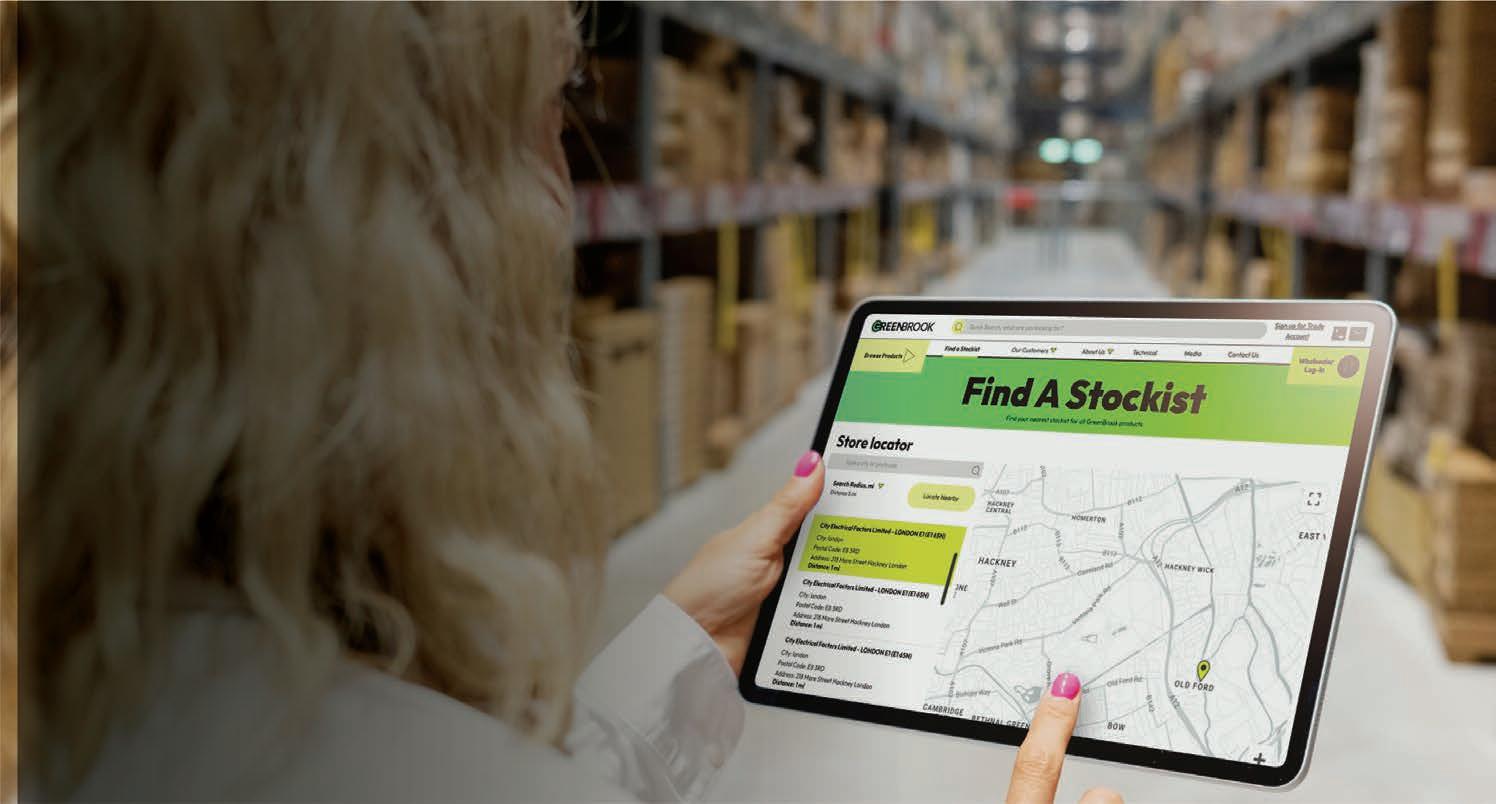



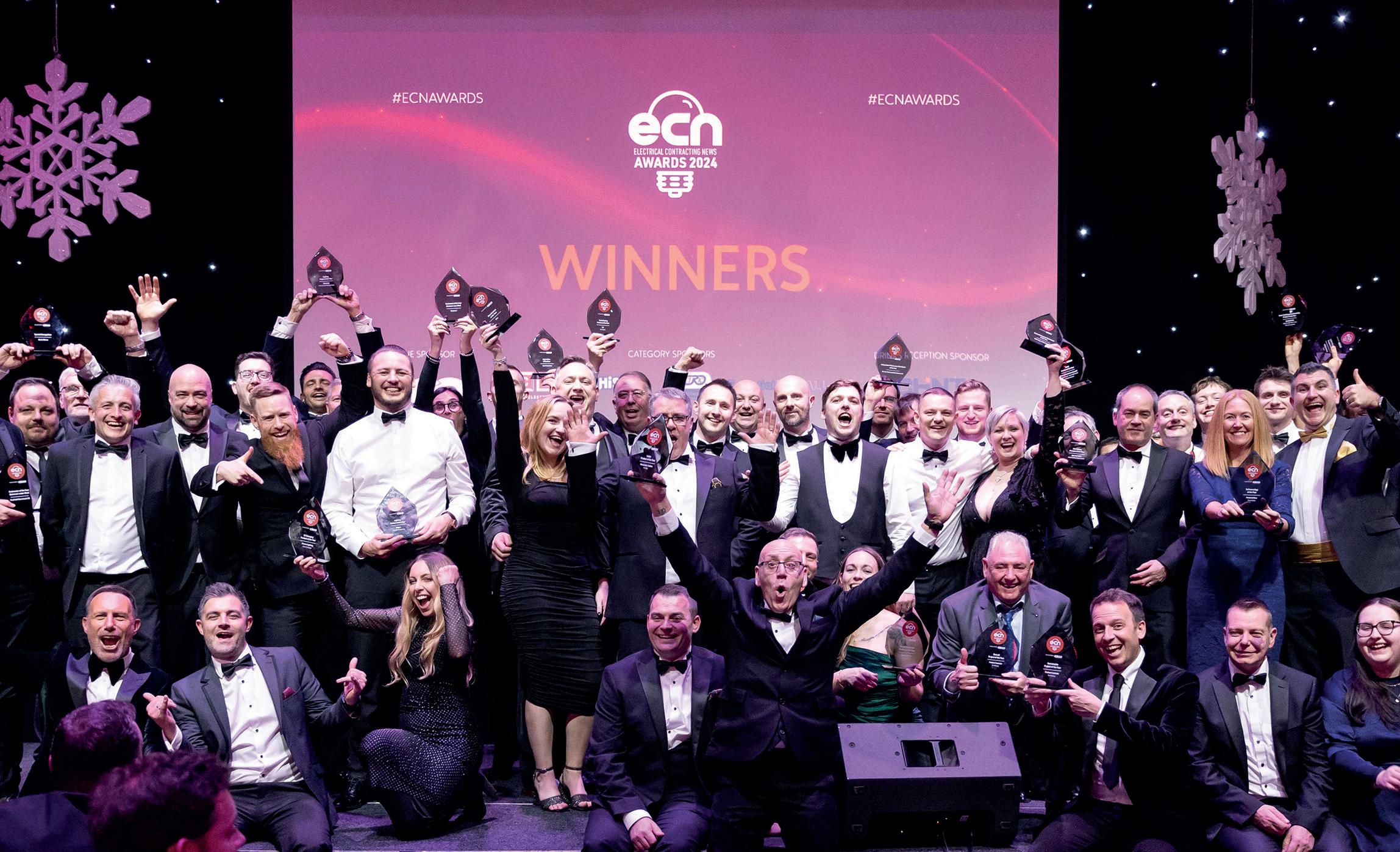
Ahead of the third annual ECN Awards 2025 taking place this November, ECN provides a special look at what attendees can expect, complete with details of the judges who will be involved in selecting this year’s award winners.

After the success of the ECN Awards in 2023 and 2024, the ECN Awards are back, and are already shaping up to be bigger and better than ever before!
The ECN Awards celebrate the best of the electrical contracting industry, and on 27 November 2025, deserving products, companies and people will take home a coveted ECN Award.
The ECN Awards will once again be hosted at the Heart of England Conference and Events Centre in Coventry, following fantastic feedback from attendees. The event will be a wonderful celebration of our industry, with delicious food and drink, entertainment, and a fabulous after-party!
Leading the charge in innovation, companies in the electrical contracting industry are dedicated to enhancing safety, efficiency and sustainability across all sectors, and it is vital to acknowledge their remarkable efforts and accomplishments. If you believe your product, company or project is worthy of an ECN Award, we encourage you to enter today.
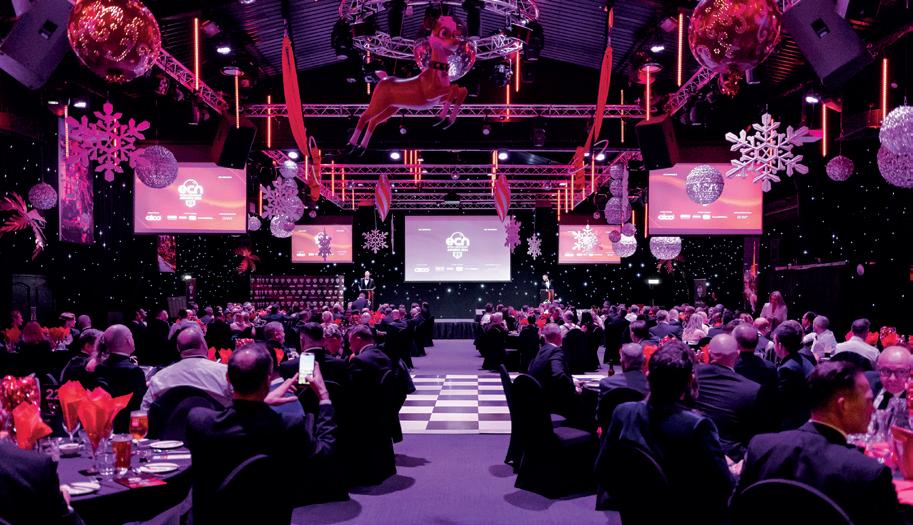
Visit electricalcontractingnews. com/awards-entries for the full list of categories. The deadline for entries is 5 September 2025.
To purchase tickets for this year’s awards, visit electricalcontractingnews. com/tickets, or call Kelly Byne on 01634 673163. Alternatively, you can email Kelly at kelly@allthingsmedialtd.com.
We can’t wait to celebrate the best of the industry with you at the ECN Awards 2025 – see you there!
ECN Awards 2025, electricalcontractingnews.com/awards
ECN would also like to extend a very special thanks to each of this year’s Awards sponsors:
• Aico, sponsoring the Projects category
• CEF, sponsoring the Sustainable Products category
• Chint Shield, sponsoring the Training category


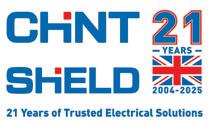
• Contactum, sponsoring the Drinks Reception at the ECN Awards
• Hispec, sponsoring the Companies category
• NAPIT, sponsoring the Entertainment at the ECN Awards



ECN is also delighted to announce the panel of expert judges for the ECN Awards 2025!
All 12 judges are specialists within their field, and we are thrilled that they are sharing their expertise with us in judging the 24 prestigious awards up for grabs at this year’s ECN Awards.
The dozen judges involved in this year’s ECN Awards are as follows:

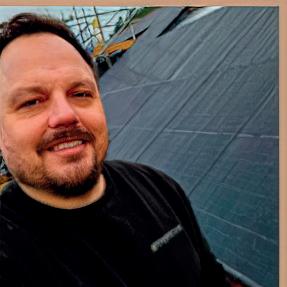










,
of Member Services and Head of Building Electrical Systems at BEAMA
, Electrical Lecturer at Riverside College
Parker Senior Technical Manager at ECA
Head of Technical Solutions at CEF
For more information on the judges we have selected for this year’s ECN Awards, along with detailed biographies on each of the above individuals, visit electricalcontractingnews.com/judges.


Following the huge success of the 2024 ECN Awards, we have added new awards for 2025. There are 24 awards up for grabs, covering all areas of the electrical contracting industry.

PRODUCTS
• Cable Management Product of the Year
• Cable Product of the Year
• Circuit Protection Product of the Year
• Fire Safety Product of the Year
• HVAC Product of the Year
• Lighting Product of the Year
• Software/App of the Year
• Test Equipment Product of the Year
• Trade Tool of the Year
• Wiring Accessories Product of the Year
SUSTAINABLE PRODUCTS
• EV Charging Product of the Year
• Power (including Solar PV) Product of the Year
• Smart Buildings/Sustainability Product of the Year
PROJECTS
• EV Project of the Year
• Lighting Project of the Year
• Sustainable Project of the Year
• Overall Project of the Year
TRAINING
• Training Provider/Initiative of the Year
• Apprentice of the Year
COMPANIES
• Manufacturer of the Year
• Independent Wholesaler/Distributor of the Year
• Chain Wholesaler/Distributor of the Year (three stores or more)
• Contractor of the Year (turnover under £5m)
• Contractor of the Year (turnover over £5m)




CBG Light Perceptions recently worked on the restoration of the Blenheim Palace Orangery by designing an updated and efficient lighting scheme on a project that has received a prestigious 2025 RIBA South Award.
The Orangery, a refined and luxurious dining area in Blenheim Palace, is now once again open to the public for an authentically British experience. Well known for hosting one of Oxfordshire’s most elegant afternoon teas, the space also serves as an exclusive private venue for fine dining, weddings, and other special occasions.
This significant two-million-pound project on the Grade I listed building involved the replacement of the 19th-century glass roof with a solid insulated steel and slate design.

CBG Light Perceptions was tasked with overhauling the previous lighting design, which was known to generate glare and excessive brightness. Working closely alongside the client’s team, Historic England, the council, architects and interior designers on the comprehensive refurbishment, CBG needed to consider a new lighting scheme that enhanced both the practicality and the exquisite atmosphere of the space.
The design delivered significantly improved lighting throughout the Orangery while also providing a sustainable, low-energy approach. The new scheme ensures flexibility for a wide range of uses,
After suffering from years of poor heating performance, the owner of a five-bedroom, barn conversion property located in Newquay, Cornwall, decided it was time to switch out their existing heat pump system for a new Ariston NIMBUS Pocket 150 air source heat pump (ASHP) – which was installed by Ariston partner, BoilerTech.
The installation process involved a complete rehaul of the old ASHP, including a rewiring of the system, set-up of zoning in the house and the installation of the new Ariston ASHP and associated controls.
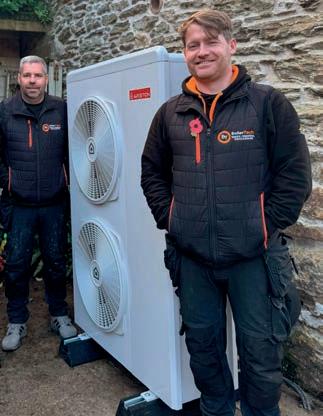
BoilerTech, a long-standing Ariston partner covering the whole of Cornwall, was called in to take on the project.
The NIMBUS Pocket M NET R32 was the heat pump of choice due to its high efficiency and low environmental impact. Its modern and innovative design is the result of thorough consultation with professionals and allows for flexibility when it comes to diverse installation needs. Using Eco Refrigerant R32, it produces low noise levels up to 53dB(A), a power range between 1.7 to 17.7kW and can be remotely managed with the Ariston NET app.
The property will now benefit from better heating performance and excellent thermal comfort for the family. The efficiencies gained from the right installation and zoning mean the homeowner could expect to see energy and cost savings of up to 20% when compared to the old system.
Andy Griffiths (pictured left), Heating Engineer for BoilerTech, comments, “This is our first installation of an Ariston heat pump system. We were extremely impressed with how easy the whole process was, and the homeowner was really pleased with the final installation.” Ariston, ariston.com/en-uk
with discreet spotlighting allowing for tailored setups during events, and a simple, pre-set dimming system enabling staff to effortlessly adjust lighting levels depending on the occasion.
The result is a sophisticated lighting solution that showcases the architectural fabric of the Orangery. The recognition
of the overall project at the RIBA South Awards, held at the Bombay Sapphire Distillery in Hampshire in May 2025, is a testament to the care and collaboration invested in every element from all those involved.
CBG Light Perceptions, lightperceptions.co.uk
A landmark of Edinburgh’s skyline since 1901, the Granton Gasholder has been reimagined as a striking public space thanks to a £20 million restoration and regeneration project.
Now at the heart of Granton Gasholder Park, this 165-foottall, listed structure has been transformed from an industrial relic into a vibrant community focal point – complete with dynamic lighting designed and delivered by Thorn Lighting

Working closely with landscape architects Optimised Environments (OPEN) and consultancy Tetra Tech, Thorn was tasked with creating a lighting scheme that would enhance the visual impact of the restored gasholder, while respecting its historic character and listed status.
The result is a bold yet sensitive lighting design that celebrates the structure’s unique industrial beauty, provides safe and welcoming navigation through the park, and offers programmable flexibility to support community events and public art.
Thorn specified a trio of architectural lighting solutions to bring the design vision to life. Eroa inground luminaires were chosen to illuminate the gasholder’s Corten lettering that says GASHOLDER1. With their 3,000K output and available in multiple lengths, Eroa provides a powerful, even wash of light capable of reaching heights beyond 12 metres.
Contrast RGBW floodlights, mounted strategically on the gasholder itself and controlled via a DMX system, add depth and versatility to the structure. With a consistent modern design and wide choice of beam angles, Contrast units allow precise highlighting of structural details while enabling a multitude of colour-changing scenes for events and seasonal displays.
To enhance the user experience throughout the park, Aerie column luminaires were installed along key pathways. Their soft, unobtrusive glow delivers high visual comfort and safety, helping to reduce energy use.
Thorn Lighting, thornlighting.com



Charge up to 4 vehicles at 22kW


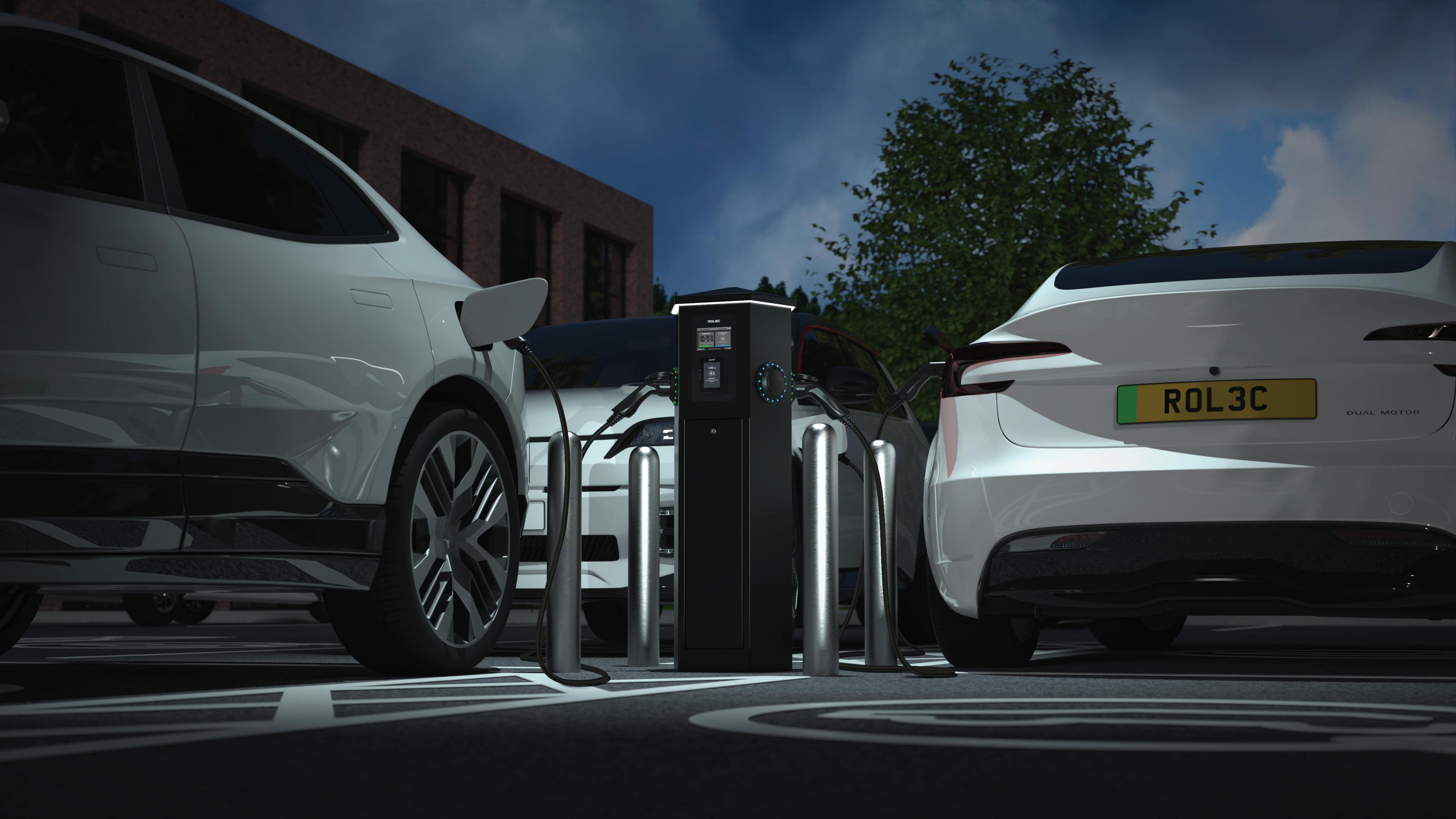

ROLEC’s latest intelligent EV charging pedestal is engineered to minimise groundworks and streamline installation. Its compact, robust steel construction maximises space e ciency and features integrated LED amenity lighting, ideal for commercial, workplace, and public car parks. HEX is available in dual and quad outlet models, with the quad design perfectly suited for centrally positioned parking bays.
TRILUX has partnered with Sweco UK, a sustainable engineering and design expert, to deliver a circular lighting upgrade at the consultancy’s Maidenhead office. By refurbishing and upgrading the existing fluorescent luminaires, the project significantly reduced waste and improved the quality and efficiency of lighting in the open-plan workspace.
The project involved upgrading old fluorescent luminaires installed in multi-service chilled beams on the first floor, bringing a more sustainable, energy-efficient, and visually comfortable lighting to the space.
The collaboration was underpinned by shared values around climate responsibility, circularity, and the creation of better environments. Both Sweco and TRILUX are committed to the United
Nations Sustainable Development Goals and see the transition to a circular economy as key to addressing climate and resource challenges. This shared ambition shaped the project’s approach –from minimising waste through luminaire refurbishment to enhancing lighting quality and workplace wellbeing.
TRILUX’s innovative approach to circular economy enabled Sweco to retain and upgrade many of the existing luminaires, avoiding unnecessary waste and delivering significant carbon savings compared to a full luminaire replacement.
A successful mock-up helped secure the project, with TRILUX presenting a customised trial luminaire that modernised the appearance and performance of the original fittings. Outdated louvres were replaced with micro-prismatic diffusers, enhancing glare
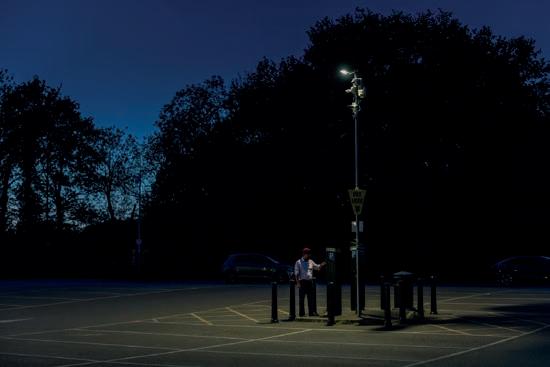
Set beside the scenic Ruislip Lido, Acrospire has delivered a sensitive, low-energy lighting upgrade for the Lido’s main car park. Working with the London Borough of Hillingdon, the project involved installing compact Sprint Micro luminaires with PIR sensors – ensuring the lights only activate when needed.
Nestled on the edge of Ruislip Woods, Ruislip Lido is a popular destination for families and visitors alike. However, as visitor numbers continue to rise, the Lido Car Park on Reservoir Road becomes a vital access point. With 153 standard bays and 10 disabled spaces, the car park plays a crucial role in accommodating guests heading to the Lido’s attractions. However, with residential housing close by and long periods when the car park is not in use – particularly during winter evenings – the London Borough of Hillingdon required a sensitive lighting system that would provide security and visibility without causing light trespass.
Appointed through the Lighting Engineer at LB Hillingdon, Acrospire was commissioned to deliver a smart lighting scheme using its compact and efficient Sprint Micro luminaires in a 4000K neutral white. Designed to be affordable yet powerful, the Sprint Micro offers optical performance in a discreet housing, which is ideal for locations requiring subtle, targeted lighting.
To further reduce energy usage and eliminate waste light, each Sprint lantern was fitted with a PIR sensor, meaning the lights only activate when movement is detected. Once triggered, the lights remain on for just seven minutes, providing sufficient illumination for cars and pedestrians before automatically switching off.
This ensures that the car park is lit only when needed – improving safety for users while keeping the area dark and peaceful for local residents when not in use. The result is a low-glare, low-energy lighting scheme that balances operational efficiency with community comfort.
Acrospire, acrospire.co
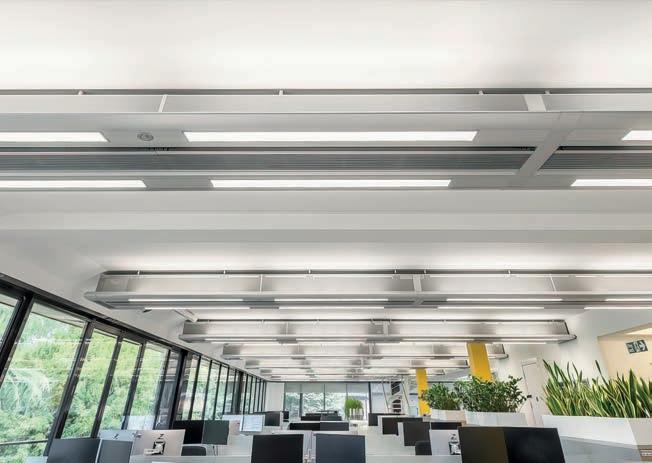
control and visual comfort while preserving the architectural integrity of the space.
The refurbishment marks another milestone in TRILUX’s mission to support
clients in making the shift towards a circular economy.
Trilux, trilux.com/uk
An NHS Trust delivering vital services to thousands of patients across Herefordshire and Worcestershire has been supported in its continued drive towards running a more energy-efficient estate by lighting manufacturer, NVC Lighting Herefordshire and Worcestershire Health and Care NHS Trust provides a range of mental health, community, and learning disability services across the region. In recent years, the Trust has been actively working on improving energy efficiency across its facilities, backed by financial support from the NHS Energy Efficiency Fund (EEF). This included being awarded £90,000 from the NHS EEF to upgrade lighting across the whole Trust, in line with the NHS’s goal of becoming net zero by 2040.
After carrying out a vendor screening process, the Trust contracted Adam Masters, Profit Centre Manager at electrical wholesaler, Edmundson Electrical, to execute the lighting works. Adam in turn reached out to Aaron
Chandi, Business Development Manager at NVC Lighting, for support with product selection and delivery from a trusted partner.
The project focused on seven older buildings from the Trust’s estate, and the plan was to move from older light fittings in need of replacement to more modern, energy-efficient lighting products from NVC Lighting, provided by Edmundson Electrical.
A bespoke, people-centric approach was taken in order to ensure that the products specified were fit for purpose and attributed to creating the correct atmosphere at each site, taking into consideration on the ground feedback from staff.
Products selected include Yale Pro, which offers UGR<19 low glare and is ideal for use in corridors and high footfall areas. Other products included the IP65 and IK10 rated Columbus, Portland bulkheads, as well as Washington recessed downlights and Texas battens.
NVC Lighting, nvcuk.com
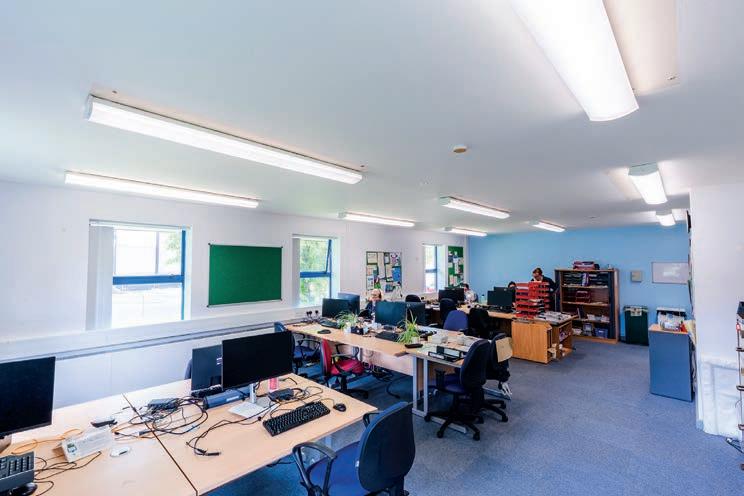


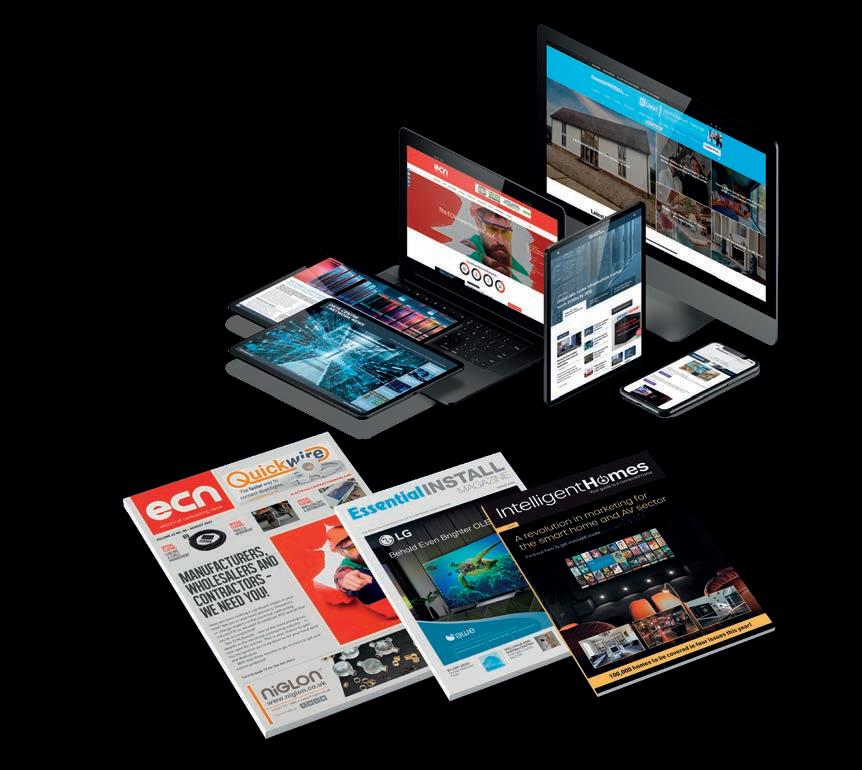
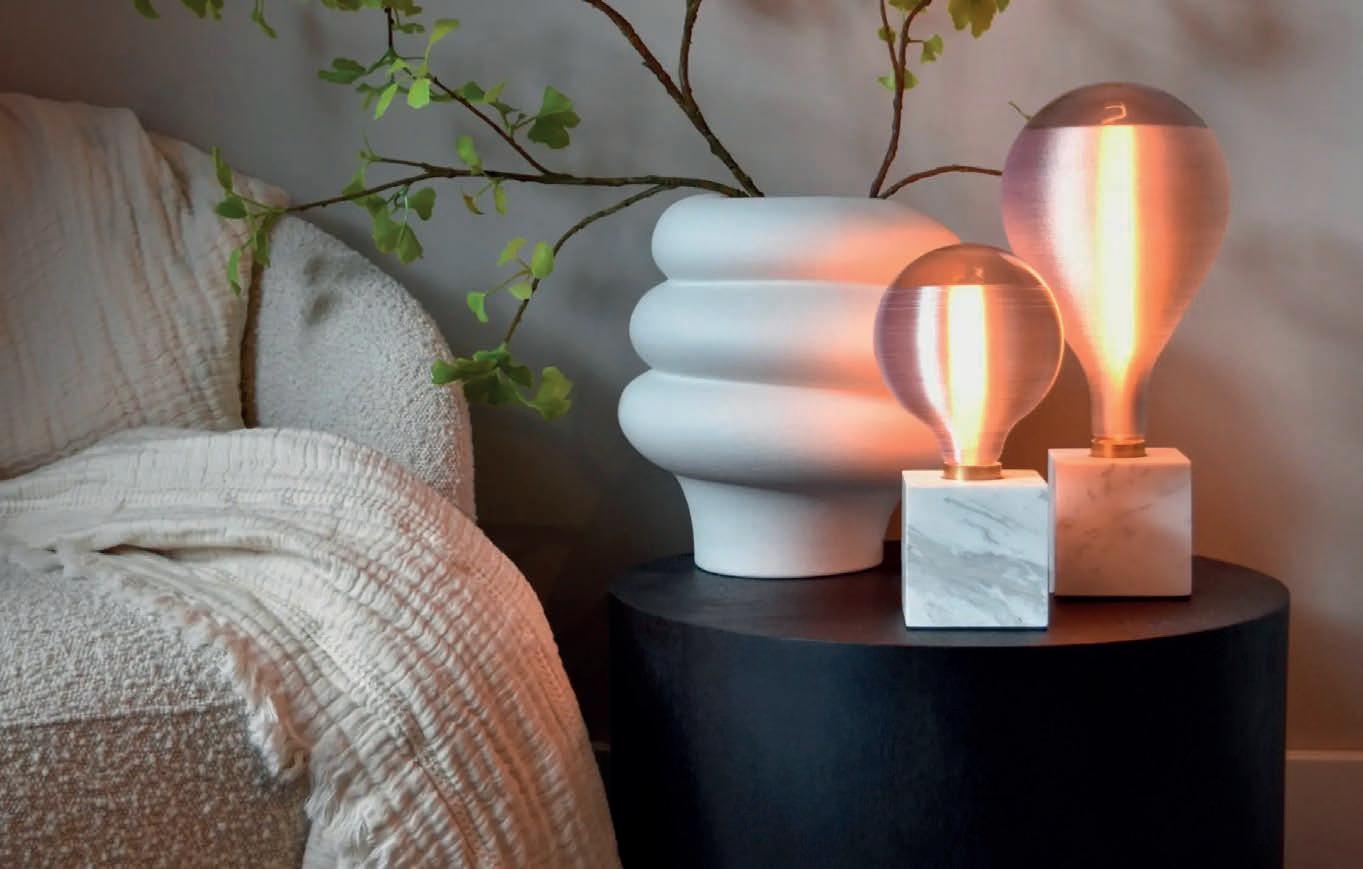

JTL, a training provider for electrical apprenticeships across England and Wales, will host an Open Day at its Birmingham Training Centre on Saturday 16 August, from 10am to 2pm.
The event is part of the organisation’s new nationwide campaign, Powering Apprenticeships. Fuelling Your Career, aimed at encouraging school leavers to consider skilled trades as a career path.
The Open Day will offer prospective apprentices and local employers the chance to tour the centre’s workshops and classrooms, meet JTL’s staff and tutors, and take part in interactive sessions.
A dedicated Employer-Apprentice Match Area will allow businesses to connect directly with potential recruits, while a mini trade fair will provide further networking opportunities.
Attendees will also hear from JTL Chief Executive, Chris Claydon, and Birmingham Delivery Team Manager, Neil Hammersley, with guidance available on apprenticeship funding, onboarding, and training support.
JTL, jtltraining.com
Scotland’s largest construction trade association, SELECT, has welcomed a new agreement which strengthens the ongoing relationship for electrical apprentice training in Scotland.
The Scottish Joint Industry Board (SJIB) and National Electrotechnical Training (NET) have signed a memorandum of understanding (MoU) which cements their longstanding arrangement for assessment of apprentices and adult trainees.
The agreement confirms the bodies’ roles and responsibilities for the Final Integrated Competence Assessment (FICA), which the SJIB operates under licence from NET at three recognised training centres across Scotland.
Catherine Gillon, SJIB Secretary and Director of Employment Affairs at SELECT, says, “We are delighted to have signed this important memorandum, which confirms our ongoing working relationship with our fellow training professionals at NET.
“The FICA is an integral part of the Modern Apprenticeship in Electrical Installation, and this MoU reinforces the message that the final assessment can only be taken at a centre approved by the SJIB to ensure learners receive the required level of experience.”
NET is a registered UK charity that owns, manages and develops end point assessments and assessments of occupational competence for the electrotechnical industry. These are the AM2 in England and Wales and the FICA in Scotland.
SELECT, select.org.uk
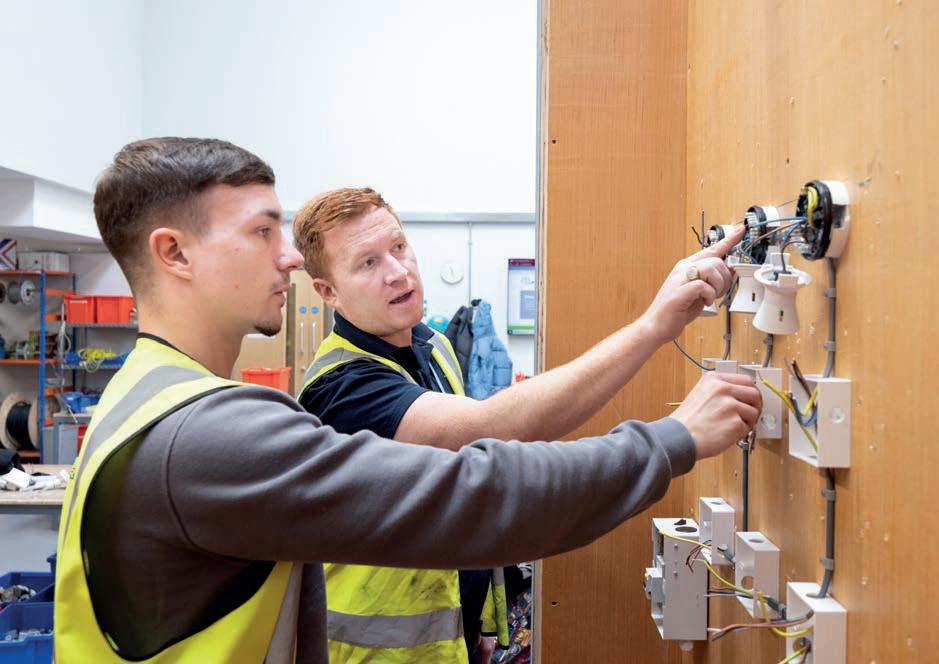
Domestic Electricians who have qualified via the Domestic Electrician apprenticeship or Experienced Worker Assessment will soon have a new training route to broaden their skillset and become recognised as an Installation/ Maintenance Electrician.

The Electrotechnical Skills Partnership (TESP), a not-for-profit organisation that provides skills training and development programmes for the electrotechnical industry, is currently working with awarding organisations and NET on a process that will involve Domestic Electricians completing a series of bridging units covering knowledge and practical assessments, involving robust workplace experience to develop occupational competence across the full scope of installation and maintenance activity, before undertaking a NET end assessment of competence.
It will not be a shortcut to becoming an industry-recognised Installation/ Maintenance Electrician, neither in time, scope of work, nor quality, and it will be fully mapped to ensure parity of standards and content. TESP will oversee the process to ensure eligibility checks and rigour at all stages.
Access to this upskilling route will only be available to those who have qualified to the industry standard through the Domestic Electrician apprenticeship in England or the Domestic Electrician Experienced Worker Assessment.
“Domestic Electricians are now rightly recognised as industry professionals in their own right with a dedicated occupational standard, apprenticeship programme, and aligned experienced worker assessment route,” says Ruth Devine MBE, TESP Chair.
“This bridging process will provide a progression pathway for those with the opportunity to undertake a broader scope of work, following a robust, tailored upskilling route benchmarked against the same standard as the Installation and Maintenance Electrician apprenticeship.”
There will be industry consultation on this new bridging process during the last quarter of 2025, with delivery planned from early 2026. The Electrotechnical Skills Partnership, the-esp.org.uk
Certification and training body, NICEIC, is offering a 10% discount on all virtual and e-learning training courses until the end of September.
The offer is intended to support electrical professionals seeking flexible options to upskill alongside work and personal commitments.
The organisation’s training portfolio includes courses in electrical installation, renewables, fire detection and alarms, and emergency lighting.
Both live, interactive sessions and on-demand modules are available, allowing learners to choose a format that suits their schedule and preferred style of learning.
“We know how important it is for professionals to stay ahead in a fast-evolving industry,” says Alex Robinson, Head of Product Development at NICEIC.
“Our summer offer makes high quality training more accessible, whether you’re brushing up on the latest regulations or upskilling in new areas like EV charge point installation.”
NICEIC-certified businesses can also apply their existing 10% discount code on top of the current offer, effectively doubling the discount on all qualifying virtual and e-learning courses.
NICEIC, niceic.com




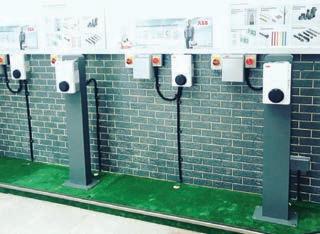
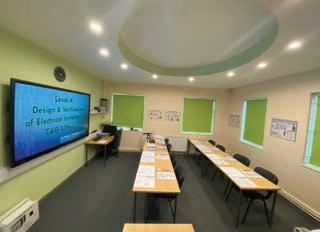


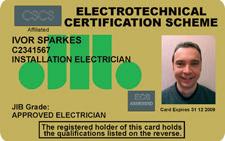




Following the
Government’s
Spending Review, Jeff House, Director of External Affairs and Policy at Baxi, comments on the key points of interest for the heating industry.

It is great news to see confirmation of the full £13.2bn funding earmarked for the Warm Homes Plan, which will see vital investment in the rollout of heat pumps and other measures to improve efficiency in homes, lower bills and reduce emissions from heat. The industry remains committed to playing its part in the decarbonisation of buildings and homes, and Baxi will continue to prioritise delivering the solutions, training and support services to help heating engineers and their customers make the switch.
Whilst we await the full detail of the Warm Homes Plan later this year, we understand that the headline funding figure will support an extension and increase of the Boiler Upgrade Scheme out to 2030, additional funding for the Warm Homes Social Housing Fund, and significant funding to deliver heat network schemes.
It is promising to see this alongside other announcements promoting the rollout of heat pumps, such as changes to the permitted development rights in England and the upcoming Future Homes Standard which will require low carbon heating in new builds.
Making a success of delivering low carbon heating and hot water into the future means developing the skilled workforce capable of meeting demand. We know a key part of this is encouraging the next generation of engineers and installers into the industry, so it is promising to see £1.2bn of investment in the wider skills system to support over one million young people into high-quality training and apprenticeships. We await with interest the upcoming strategy for Post-16 Education & Skills to provide more detail.
Our last annual Skills Survey found, much like in previous years, some reticence to take up heat pump training from those installers nearing retirement – a demographic that makes up a significant proportion of the workforce.
A perceived lack of practical training, complex government incentives and lack of consumer demand were the key barriers cited by respondents. As newly qualified installers enter the industry, we expect to see more embrace the latest technologies. The government and industry, however, must collaborate further to address these barriers to training and make a career in heating more attractive to build the workforce needed to make a success of the energy transition.
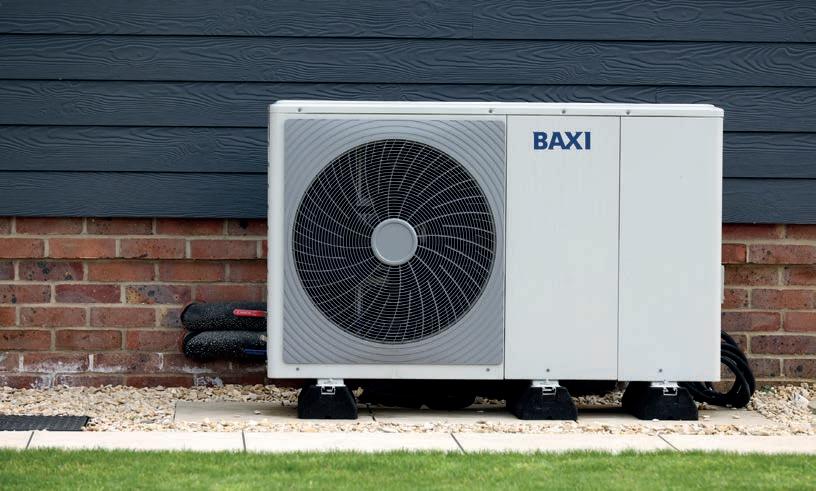
Key to this is demonstrating the value of a career in engineering as early as possible, which is what Baxi has been doing through its partnership with Primary Engineer.
The government has continued its focus on prioritising funding for affordable and social housing through the £39bn earmarked to support the sector with reaching housebuilding targets over the next 10 years. The funding for local authorities, private developers and housing associations joins the £2bn for the development of 18,000 new affordable homes announced in March – half of which is allocated for social housing –and the existing Warm Homes: Social Housing Fund, already in place to retrofit existing social housing and improve energy efficiency.
It is of vital importance that social and affordable housing is not left behind in the transition to clean heat. All of this investment is central to rolling out low carbon heating solutions, such as heat pumps and heat networks that deliver on comfort, efficiency, sustainability and cost in the long-term for tenants.
To support the rollout of low carbon heat in social and affordable housing, Baxi is working with local authorities, private developers and housing associations to deliver long-term plans to meet the different needs of their building stock.

It is promising to see the government commitment to the Schools Rebuilding Programme, providing around £2.4bn per year over the next four years, to rebuild over 500 schools. A further increase in annual maintenance investment will see additional funding to improve the condition of the school estate.
There are, however, challenges in this space that must be addressed. Research in our report, Decarbonising heat in schools: challenges and opportunities, uncovered that, while the majority of schools strongly support heating decarbonisation, more than a third of UK schools continued to grapple with key challenges in achieving it.
The survey uncovered that technical difficulty and electrical capacity requirements were the top barriers to installing low carbon heating. The study also revealed a slight preference for hybrid heat pump systems over standalone heat pump solutions.
Baxi is calling for four steps that we believe the Government must take to ramp up the decarbonisation of schools:
1. Include heating system upgrades for schools within existing public sector support schemes
2. Include hybrid heating systems more openly within existing support schemes
3. Address the imbalance in price between gas and electricity
4. Address the skills gap to help deliver clean energy projects.
Baxi, baxi.co.uk






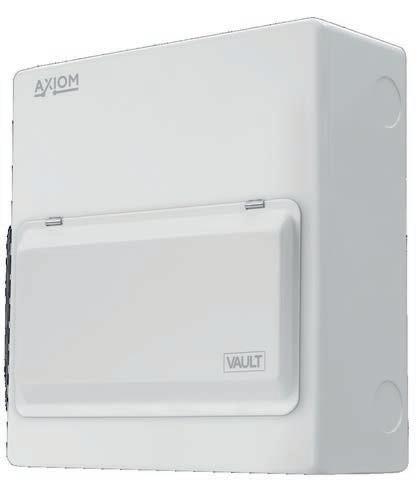





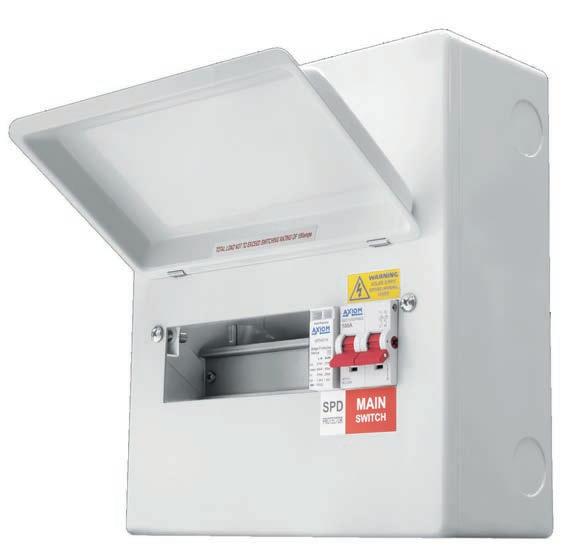






ECN
provides a detailed look at how SolarEdge technology has provided a wealth of environmental and financial benefits for the Thomas Telford University Technical College.
Thomas Telford University Technical College (UTC) has cut its annual electricity costs by 66% with the installation of an innovative DC-optimised rooftop solar system.
Designed and installed by renewable energy specialist, Kembla, using SolarEdge technology, the system is helping the college to meet its high energy demands while also serving as a powerful educational tool for students.
Thomas Telford UTC is situated in the historic Grade II listed building of the former Springfield Brewery in Telford. The solar system was installed as part of a £12.6 million expansion project aimed at creating an energy-efficient campus for students aged 11-19 years.
Funded by a loan from the School Capital Funding Scheme, the system generates approximately 277 MWh of renewable energy annually. Most of this energy is used on-site to power the school’s operations, while any surplus produced during weekends and holidays is sold to the grid, generating additional revenue for the school.
Richard Rhodes, Buildings and Fabrics Manager at Thomas Telford UTC, comments, “As a school specialising in environment, design and build, the solar installation has become an invaluable asset. It not only significantly reduces our electricity costs but also generates new revenue, allowing us to invest more money in student education, upgrading equipment and maintaining our facilities. Beyond the financial benefits, it aligns perfectly with our commitment to sustainability and curriculum enrichment, providing students with an engaging learning tool.”
Kembla was selected for the project based on its successful solar installations at other schools within the Thomas Telford

Multi-Academy Trust. The 318.86 kWp solar system includes 733 solar panels, upgraded to smart panels with SolarEdge Power Optimisers, and three 90 kW SolarEdge inverters. Power optimisers are installed on each pair of panels to ensure they operate at peak efficiency, even if some panels are shaded or soiled. This advanced technology also provides greater flexibility in panel layout, optimising energy production by adapting to the roof’s design.
Declan Adams, Managing Director of Kembla, explains, “Thomas Telford UTC was keen to maximise the savings generated by the solar system, but, like many educational facilities, the site’s varying roof angles presented a challenge. Conventional, non-optimised solar systems limit panel placement due to the need for uniform tilt and equal string lengths, which restricts energy production.

The SolarEdge system removes these constraints, enabling a customised layout and increased energy output.”
Safety was the college’s top priority.
The SolarEdge system incorporates embedded safety features such as arc-fault detection and SafeDC, which is designed to reduce voltage levels in solar arrays to a touch-safe 1V, providing safe roof access for maintenance personnel. Additionally, two SolarEdge Firefighter Gateways are integrated with the school’s fire alarm system. These are designed to automatically shut down the solar array if the alarm is triggered, ensuring firefighters can quickly and safely access the roof.
The system’s advanced safety features, combined with the installation of permanent edge protection to eliminate the need for temporary scaffolding during maintenance, created an added benefit for the college: a secure rooftop area that students can safely use to observe the solar system firsthand.
Richard Rhodes continues, “Our students have shown tremendous interest in the solar installation. It’s great that we have a safe space on our roof to demonstrate the panels and the equipment involved in the generation of solar power. Additionally, we use the SolarEdge app to show students the benefits [of solar energy] and how it is distributed across our site.
“Thanks to Kembla’s expertise and SolarEdge’s advanced technology, we had full confidence in our decision to invest in solar. That decision is not only benefitting our school today, but it will continue to support both our campus and students for years to come.”
SolarEdge, solaredge.com


The solar system generates approximately 277 MWh of renewable energy each year, cutting Thomas Telford’s annual energy bill by 66%


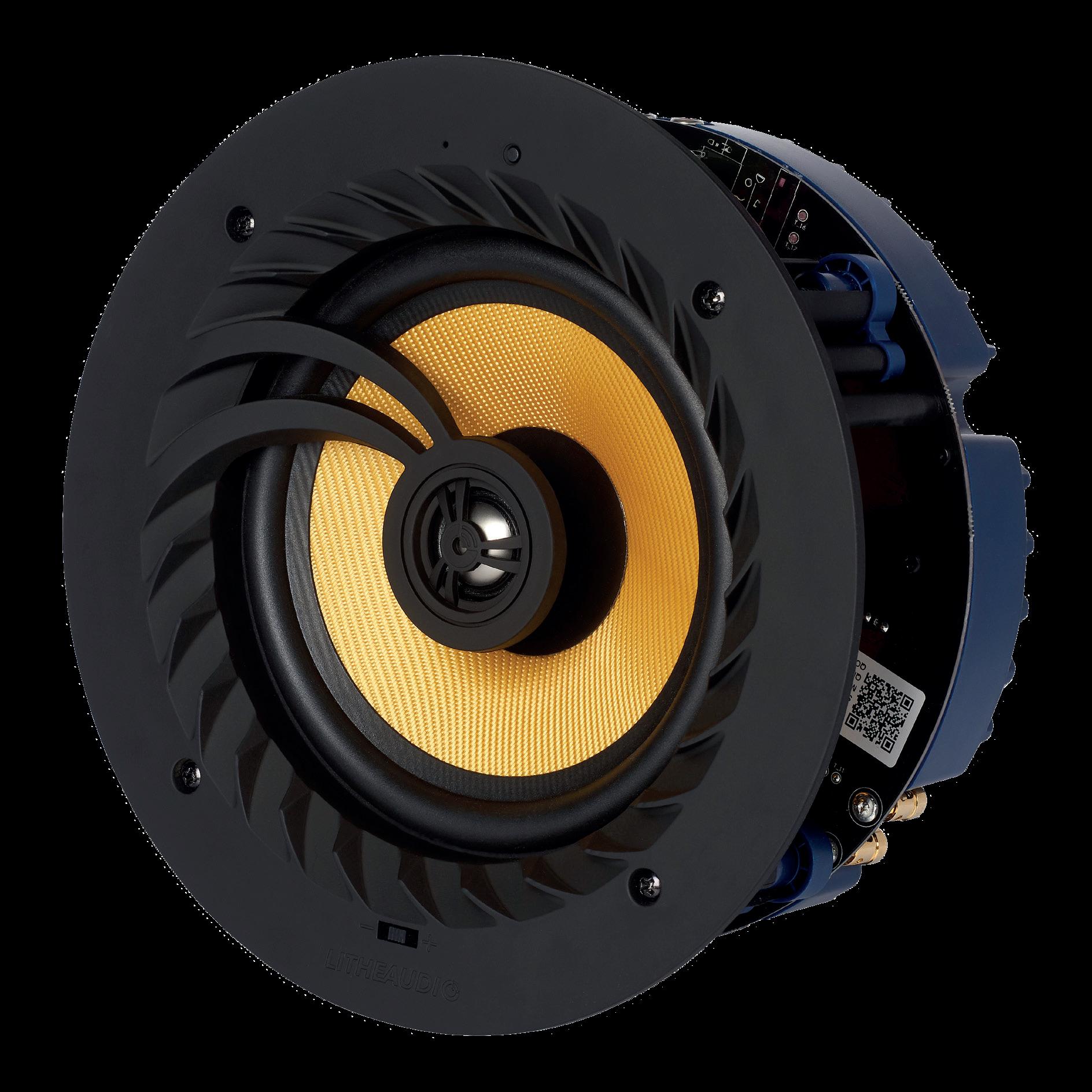


Stacey Lucas, President of the Building Controls Industry Association, argues that the time to ensure a brighter and greener future is now.

With the UK
seeing a surge in business owners prioritising sustainability and adopting new technologies, the building energy management systems (BEMS) sector is ideally positioned to take advantage. However, while businesses across the UK are increasingly investing in sustainability initiatives and technologies, there is still a lack of understanding and awareness of the pivotal role building automation can play in reducing carbon footprints and enhancing energy efficiency in commercial buildings.
While the increased adoption of new technology is encouraging for the built environment as a whole, the need for better education on the sustainability benefits of building automation is reflected in reports that commercial buildings in the UK account for around 40% of the total carbon emissions.
Therefore, Net Zero Week, which ran from 5-11 July, is the perfect reminder of the need for the building controls industry to increase awareness of the important role BEMS can play in decarbonising the built environment and helping the UK reach net zero by 2050.
The sector needs to do more to illustrate the energy efficiency and wellbeing benefits of utilising BEMS, Stacey argues
Thankfully, in this technologically-advanced age there is now a multitude of useful documentation and information available to help increase awareness of the importance of taking advantage of technology, such as BEMS.
However, despite its accessibility, this information isn’t always the easiest for people outside of the sector to understand. So, it’s important to utilise infographics or animations to explain the benefits of building automation in a concise and clear manner.
Additionally, the development of training programmes to help building owners or facility managers understand the capabilities of BEMS, and how to most effectively use them to monitor and manage energy performance, could play a crucial role in demystifying building automation.
The sector also needs to do more to illustrate and emphasise the energy efficiency and wellbeing benefits of utilising BEMS, such as the improved air quality and reduced carbon emissions.


Highlighting the importance of building automation through online platforms, industry events, and case studies can go a long way towards increasing awareness and understanding for those both inside and outside the sector.
With many business owners under the misconception that implementing building automation is a costly endeavour, providing analysis and data that demonstrates the cost savings, operational efficiency improvements, and return on investment opportunities of BEMS will help address any concerns.
Additionally, the sector should consider the encouragement of collaboration and knowledge-sharing between building owners, facility managers, and those in the building automation sector to enable the sharing of best practices and the targeted promotion of BEMS adoption.
Of course, highlighting the role of BEMS in attaining sustainability targets and ensuring compliance is crucial. However, this impact will be entirely influenced by how well the sector works alongside policy makers and the government to shape the future.
As the only association in the UK specifically for the building controls and automation sector, the BCIA engages with ministers and other key stakeholders, such as the Climate Change Committee, to set out a case for greater policy support.
Additionally, it is essential that industry leaders and business owners also help to raise awareness of the importance of building controls among policy makers by developing relationships with local MPs, who may never have heard of BEMS and how they can be used to improve energy consumption. Ultimately, this could help those in the sector to generate greater understanding of building controls and increase adoption of this highly effective technology.
While the need for reduced energy consumption is rapidly aligning with the increasing demand from building owners and facility managers for sustainable practices, there are many who still don’t fully understand the crucial role building automation can play in decarbonising UK building stock. Now is the ideal time to change that.
The Building Controls Industry Association, bcia.co.uk


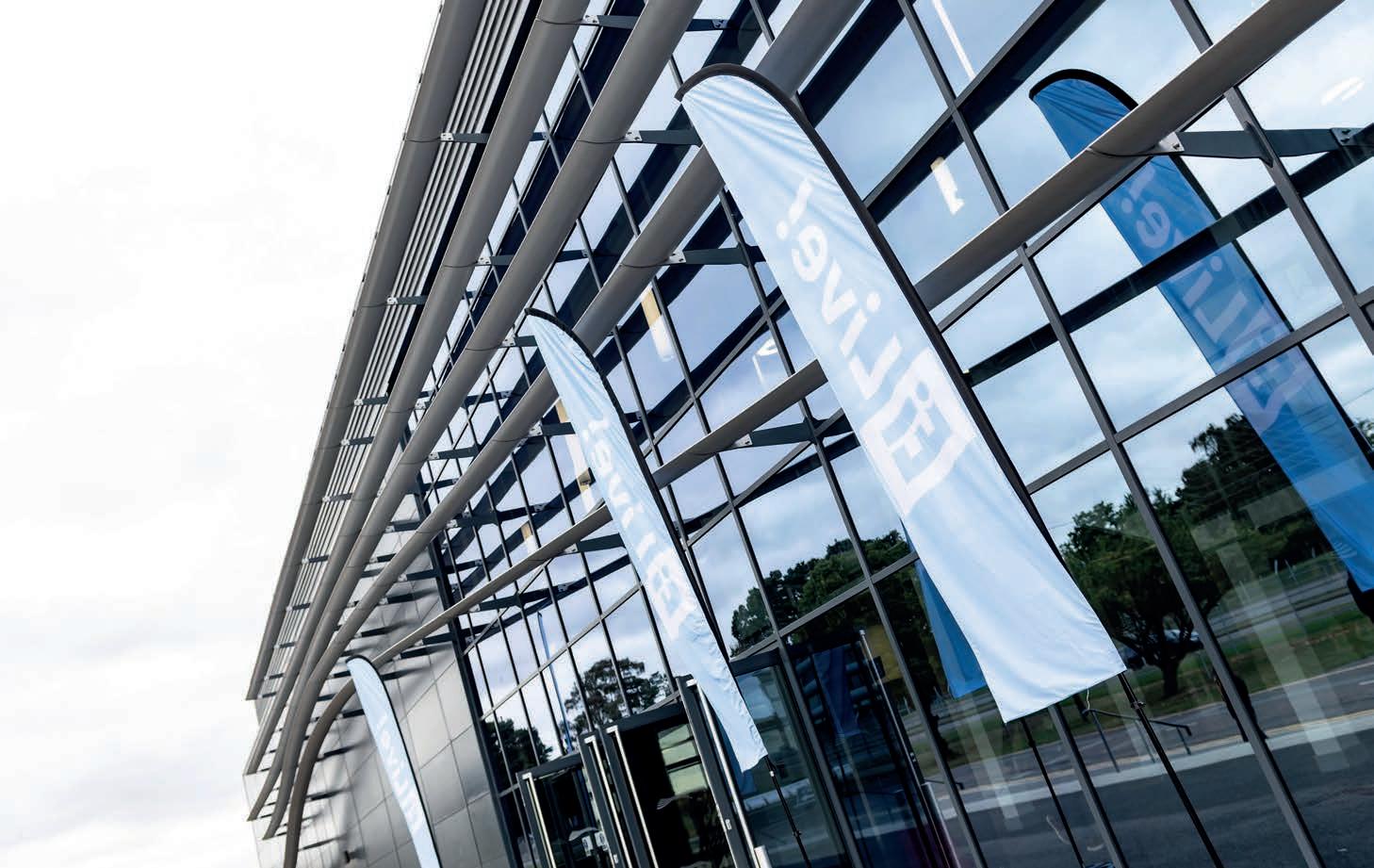
EI Live! 2025 – the UK’s only dedicated AV and smart home trade show – is once again returning to the Farnborough Exhibition Centre on 17-18 September 2025. In this exclusive preview, ECN looks at some of the many attractions, demonstrations and insights of interest to those in the electrical contracting sector.
If you are an installer of home automation/AV systems, work in the commercial automation/ AV world, or are an electrical contractor looking to tap into smart utilities, EI Live! 2025 is an absolute must-visit.
The exhibition – which is hosted by our sister publication, Essential Install – will provide the crucible within which the UK smart and AV sectors will be forged for the coming years.
No other show in the UK offers access to such a varied choice of options for those involved in the industry to discover fresh insights about companies and systems they already work with; while also finding new, exciting, and profitable opportunities to move towards.
Here is a round-up of the exhibitors and stands that will be of particular interest to ECN readers.
• Combining premium products, one-toone service and specialist know-how, Webro (Stand 45) offers the expertise that many integrators rely on to get AV and CI projects up and running.
From new products to longstanding favourites, Webro has got a full line-up of cable products for visitors to choose from, which are capable of meeting all smart building project needs. All products are available for next day delivery – either cut to length, on reels, or in pull boxes.
For added reassurance, Webro is fully committed to working to The Construction Products Regulation (CPR), which is key to the safety of infrastructure and people, and have products to meet current legislation up to B2ca.
As a Smart Building Awards winner, the company aims to build peace of mind into all of its products, working in partnership with CEDIA, HDBT, KNX, and CAI. Webro is also proud to support Together for Cinema.
For those who like a challenge, visitors to the Webro stand can play the ‘Webro Picture Puzzle’ game, with those solving it in the fastest time winning some high-performance Bowers & Wilkins earbuds. There will be one winner each day, but nobody leaves the stand empty-handed, as visitors can enjoy a complimentary bag of freebies that includes a stick of Webro rock!
17–18 SEPTEMBER 2025 FARNBOROUGH EXHIBITION CENTRE
• The future of AV belongs to the well-supported installer argues Joe Wilks, Sales & Commercial Director at OneAV (Stand 15).
As the AV landscape continues to evolve, today’s installers are faced with a dynamic challenge: how to keep up with an ever-expanding ecosystem of products, protocols, and expectations, while still delivering seamless, reliable installations
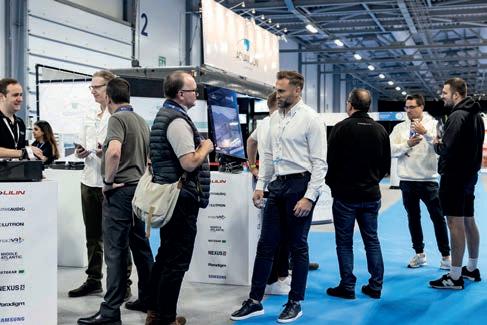


that meet the exacting demands of both residential and commercial clients.
OneAV understands that challenge, and the company is able to help installers turn it into an opportunity.
That’s why OneAV’s team is looking forward to this year’s EI Live! where it will be exhibiting at Stand 15, strategically positioned next to HDA and uControl, and directly across from the Monitor Audio lounge – a prime location for anyone serious about next-generation AV.
• Offering some choice selections from the brand family available through Pulse Cinemas (Stand 46), show visitors can expect insight into special dealer packages, products and design support services.
With the increase in demand for easy-to-fit media room solutions and home cinemas, the Pulse Cinemas team has pulled together products from some of its leading brands to deliver a package that really delivers on a new and growing category. Using the Leica Cine 1 as the viewing engine, the Pulse team has combined products from Paradigm, Anthem and MaxLight to offer an all-in-one short throw projection package that delivers on convenience of install and performance.
The powerful Leica Cine 1 offers 4K/ Dolby Vision for intense colour depth and sharp contrast, as well as Bauhaus-style looks. The combination of triple RGB-laser technology, Leica Image Optimisation (LIO), Leica Summicron lens, as well as the 4K resolution and up to 3,000 ANSI Lumens, delivers serious image quality allowing the unit to cope with areas of high ambient light. The Cine 1 comes with multiple intelligent functions and a wide range of assets, including the smart TV interface and Filmmaker Mode.
Visitors will also be able to discover more about the company’s projection screens, audio products, cabinet innovations, and more.
• Digital solutions designed by Fracarro (Stand 72a) for signal distribution within buildings will also be showcased at EI Live! 2025.
Based on the client’s needs (residential, business, institutional) and the structure (condominium, hotel,
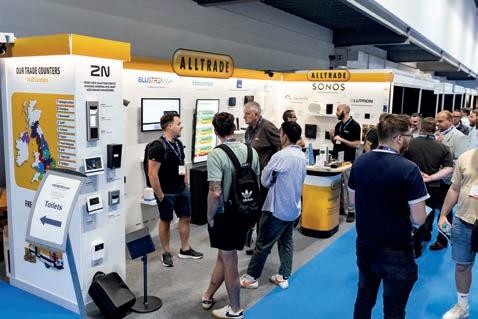


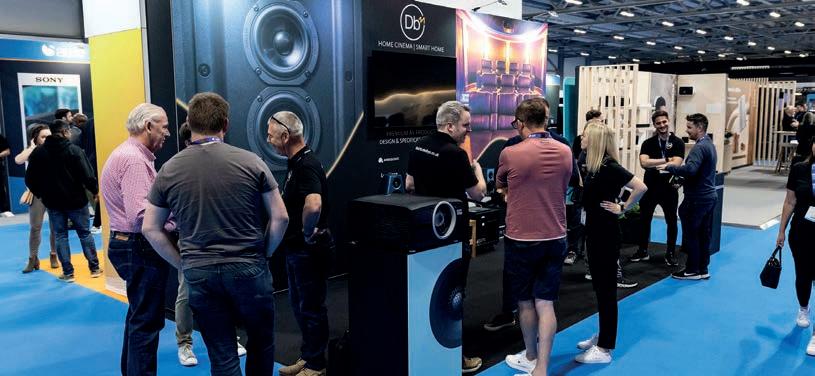
campus, commercial), Fracarro offers a suitable solution to create an intelligent infrastructure (GPON, Ethernet, WiFi, FTTH) to integrate and distribute services from the access or reception point (SAT, DTT, Internet, IPTV, etc.) to the terminal point.
For EI Live! 2025, the team will focus on networking via passive fibre optic solutions for the integrated distribution of IP services in multi-user systems, with a complete range of products for structured cabling and GPON (Gigabit Passive Optical Network) systems.
Providing multiservice solutions for the distribution of all services such as TV, satellite and data for residential buildings, MDUs (new and renovated) will be up to standard only if equipped with ultra-broadband digital fibre optic systems to provide connections and services in step with technological evolutions. Visitors to the Fracarro stand will be able to learn more about this notion.
Also featured will be the Wide Fibre series of optical transmitters and receivers, entirely designed and manufactured by Fracarro. These systems are able to manage the signals available from satellite or digital TV antenna, exploiting the potential of Wideband technology.
Also of interest will be the Home Fibre series of optical transmitters and receivers, also designed and manufactured by Fracarro, which allow the distribution of up to four satellites over a single optical fibre with CWDM technology. They allow the transmission of the entire TV band, including radio signals (DVB-T + FM + DAB + Full satellite), and an entire orbital position over a single fibre.
Meanwhile, the transmitters and receivers of the OPT-MBJ family exploit the potential of the passive fibre optic network (PON) to create a plug and play system capable of transporting TV and SAT (IFIF) signals to the terminal user with the highest quality.
The company will also showcase innovations for the centralised distribution of satellite, digital terrestrial, or data television services within hospitality settings, including hotels.
• Indigo Distribution (Stand 16) is back at EI Live! 2025 showcasing a wide range of brands and innovations that give installers the tools they need to deliver outstanding AV projects.
The team is excited to be highlighting some of the latest additions to the line-up, including Cornered Audio – a unique speaker range designed to fit snugly into corners, on walls, or under ceilings, offering discreet, high-performance sound. The distributor will also be featuring Netgear AV, now part of the portfolio, offering pro-grade networking built specifically for the demands of AV over IP.
Indigo will also be showing key brands, including Klipsch Audio, QMotion Shading, Rako, Nice Home Management, Integra and WiiM. Visitors who stop by the stand can catch up with the Indigo team, check out what’s new, and see how they can support your next project.
EI Live! 2025, eiliveshow.com

Farnborough Exhibition Centre was once again selected to host EI Live! due to the fact it is highly accessible, has great transport links, and acres of free parking, without the hustle and bustle of the city.
Farnborough is well-connected, just 35 minutes from Central London by train, 30 minutes from Heathrow and within easy reach of the M3 and M25. The site offers drive-in access and free parking for up to 3,500 vehicles on a secure site, all alongside the TAG Farnborough Airport.
Contemporary in design, the venue reflects pioneering innovation and sophistication – all fitting for world-class events.
Simon Rowley speaks with Dale Fisher, Associate Director and Electrical Engineering Consultant at BSE|FM, about his career to date and why Dale considers this to be a pivotal time to be in the electrical engineering sector.

SR: To start with, could you tell us about yourself and the electrical apprenticeship you did that got you started in the sector?
Dale: Professionally, I’m a committed learner and strong believer in continuous development. I entered the electrical industry in 2004 through a day-release apprenticeship – four days on site with a contractor, and one day in college. It was a three-year Level 3 Certificate in Electrotechnical Technology. That apprenticeship gave me the foundation I needed to build a meaningful and lasting career in the industry.
SR: How important are apprenticeships such as these, and would you recommend others taking this route into the industry?
Dale: Apprenticeships are vital. They offer a practical, hands-on route into the industry and provide invaluable real-world experience. I absolutely recommend them to anyone considering a career in the sector.
That said, there’s still work to do. Employer funding remains a major barrier, and if we truly want to strengthen the workforce, we need to make it easier for businesses to support and mentor the next generation. The industry has made great strides in promoting apprenticeships over the last 20 years, but the funding model must evolve.
While apprenticeships can help bridge the skills gap, we’re still seeing a big mismatch between the volume of retiring professionals and the number of new engineers entering the field. More needs to be done – and fast.
SR: Can you give us an overview of your current role and the work you’re doing? What does your normal working day consist of?
Dale: I’m an Associate Director and Electrical Engineering Consultant. My role involves leading on technical designs, advising clients and colleagues, and staying actively engaged in the industry through events and networking. For me, relationships matter – trust, transparency, integrity, empathy, and respect are at the core of how I approach everything.
As a parent, there’s no such thing as a ‘normal’ day. My mornings start early – around 6am – and after dropping my son at nursery around 7.45am, I use my drive commute to listen to podcasts and regroup. At the office, I start with emails

– supporting clients and contractors with the technical guidance they need to keep projects moving. Then I dive into design work or peer reviews. My day includes meetings with various parties and stakeholders from architects, project managers, clients, investors, and our internal teams.
SR: What are the best parts of your role, and what are the most challenging?
Dale: The best part is making a real impact. Clients trust me to guide them through complex, high-stakes projects, and it’s a great feeling to know that my advice brings clarity and reassurance –especially when major investments are involved. Working on landmark buildings is also a real privilege and something I don’t take for granted.
The biggest challenge is balancing that professional responsibility with parenthood. The industry still leans heavily on traditional expectations – early meetings, last-minute site visits, and long travel – all of which can clash with nursery schedules or parental duties. And with both my partner and I working full time, and no extended family close by, flexibility isn’t just helpful – it’s essential.
The sector has a long way to go in embracing what true flexibility looks like
for working parents. We’re not asking for shortcuts, just a shift in mindset.
SR: As your career has progressed, how has your work evolved over the years?
Dale: My work has evolved significantly – technically, professionally, and personally. I started out on the tools, learning hands-on in the field during my apprenticeship. That experience gave me a solid understanding of how buildings go together and how systems function in the real world. Over time, I transitioned into design, where I now use that practical background to inform smarter, more efficient engineering solutions.
As I’ve developed, so has the complexity and scale of the projects I’m involved in. I’ve gone from supporting roles on smaller jobs to leading multidisciplinary teams on high-profile buildings. I’ve also stepped into more of a mentoring and advisory role – both formally within my company, and informally with clients and junior engineers.
Beyond technical growth, I’ve learned that soft skills are just as critical: communication, empathy, and emotional intelligence can make or break a project.
Building trust with clients, managing expectations, and supporting my team is where I now focus a lot of my energy.


Sustainability is no longer a bolt-on or a value-add; it’s a core design principle, Dale explains
ENHANCE, UPGRADEDMORE FINISHES, MORE STYLE!
Explore our elegant new finish to our Enhance Decorative range
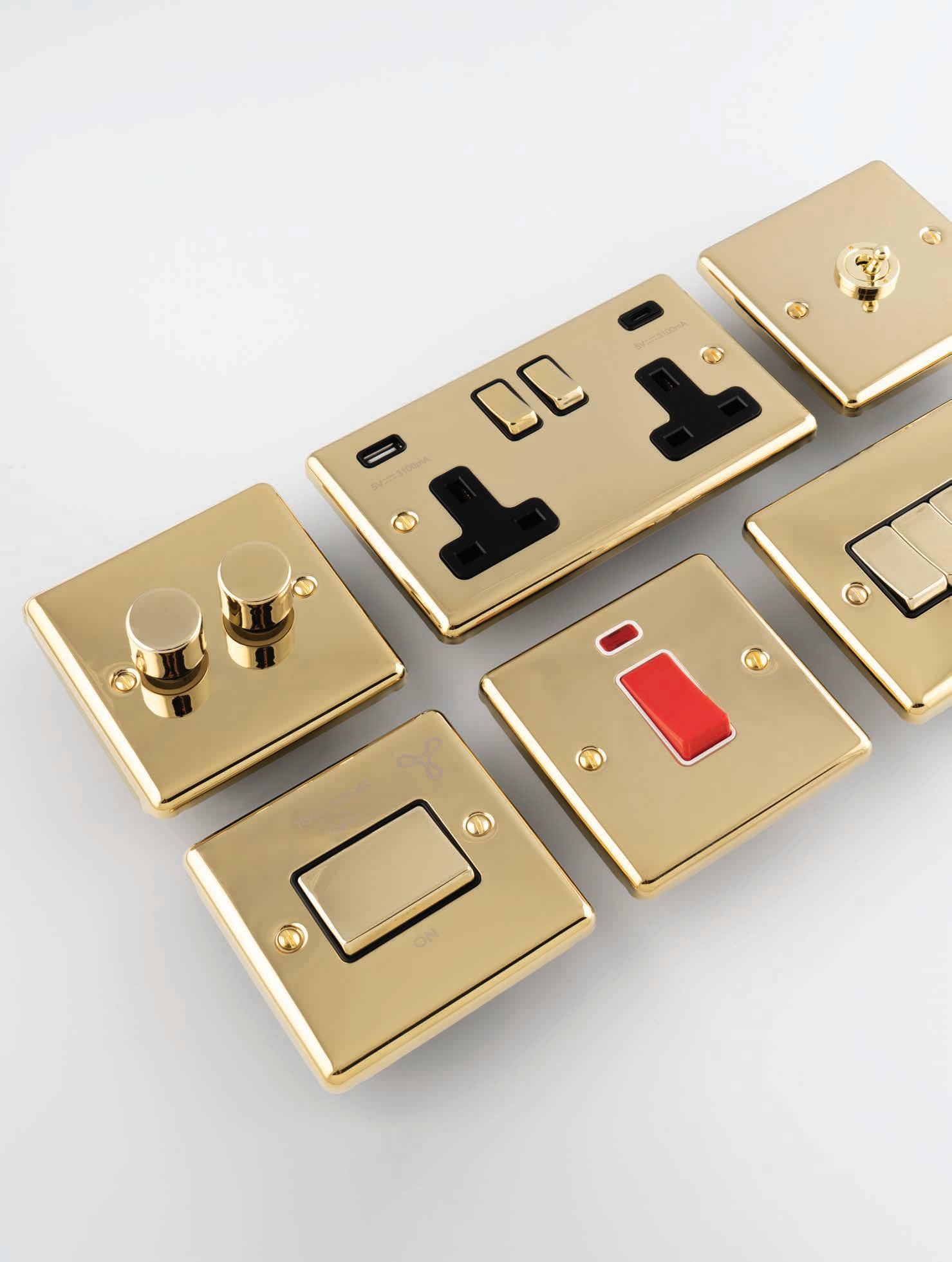
This new addition brings warmth, luxury, and timeless appeal, perfect for both classic and contemporary interiors.


SR: What are some of the biggest challenges and opportunities for electrical engineers at present?
Dale: The industry is at a really interesting crossroads right now. One of the biggest challenges is keeping up with the pace of change – particularly around sustainability, decarbonisation, and smart technology integration. Clients and regulators are pushing for greener, more efficient buildings, and rightly so; but that means we, as electrical engineers, need to stay ahead of the curve with our knowledge, design approaches, and skill sets.
At the same time, there’s a huge opportunity here. We’re in a position to influence real, long-term change –designing systems that don’t just meet today’s standards, but help shape a more sustainable future. Whether it’s integrating renewables, battery storage, EV infrastructure, or advanced building automation, our role is becoming more strategic and more essential.
However, the skills shortage is a major issue. There’s a growing demand for experienced engineers, but not enough new talent entering the pipeline. That makes knowledge-sharing, mentoring, and investment in training more important than ever.
In short, the challenges are real, but the opportunities are even greater. It’s a pivotal time to be in electrical engineering.
SR: In what ways are the latest regulations and legislations impacting the industry, in your view?
Dale: The regulatory landscape has become much more rigorous in recent years, and rightly so. In the wake of high-profile safety failures and increasing pressure around sustainability, there’s been a real shift in how buildings are designed, constructed, and maintained.
We need a grid that’s flexible, intelligent, and future-ready, Dale tells us
systems, and data-driven energy optimisation means electrical systems are no longer just passive – they’re active tools for efficiency, safety, and user comfort.
SR: Is more investment needed in areas of the grid? Does there need to be more resilience?
Dale: Absolutely – more investment in the grid is not just needed, it’s essential. The existing infrastructure was never designed to support the demands we’re now placing on it. With the rapid rise of electric vehicles, renewable energy generation, heat pumps, and smart technologies, the strain on the grid is growing fast.
We need a grid that’s flexible, intelligent, and future-ready. That means investing not only in capacity, but in digitalisation, smart controls, and localised energy solutions. The traditional centralised model doesn’t suit a world where power can be generated, stored, and consumed at a local level.
For electrical engineers, the impact is two-fold. First, there’s a far greater emphasis on compliance, accountability, and traceability. We’re no longer just designing to meet a spec – we’re being asked to evidence how our decisions align with safety, performance, and sustainability objectives. That’s added pressure, but it also raises the standard across the board.
Second, regulations around energy performance, net zero goals, and building safety – such as the Building Safety Act – are driving a deeper, more integrated approach to design. We’re being brought into projects earlier, working more closely with architects, fire engineers, and sustainability consultants to make sure the building performs holistically.
It’s a positive shift, but it does require engineers to stay constantly informed and proactive.
SR: What are some of the biggest growth areas within the electrical sector, from your perspective?
Dale: There are several exciting growth areas right now that are reshaping the future of the electrical sector. One of the most obvious is the push towards renewable energy integration – solar PV, battery storage, and grid decarbonisation. These technologies are becoming central to new developments, and electrical engineers are at the heart of making them viable, scalable, and safe.
Electric vehicle (EV) infrastructure is another major growth area. With the ongoing transition to electric transport, there’s a huge demand for intelligent, future-proofed charging solutions – especially in urban environments, commercial developments, and retrofit projects.
We’re also seeing rapid advancements in smart building technology and automation. The rise of IoT, building management

Resilience is a huge part of the conversation. As we’ve seen from recent extreme weather events and energy price fluctuations, our grid needs to be robust enough to handle disruption – whether that’s demand spikes, cyber threats, or generation issues. Distributed energy resources (DERs), battery storage, and microgrids are all part of the solution –but only if supported by a modernised national infrastructure.
SR: How is the drive towards net zero and sustainability impacting the ways electrical engineers work?
Dale: The push towards net zero is fundamentally changing the way we work, and rightly so. Sustainability is no longer a bolt-on or a value-add; it’s a core design principle. As electrical engineers, we’re being asked to think differently, plan holistically, and design with far greater responsibility.
We’re now expected to consider whole-life carbon impacts, operational efficiency, and how systems integrate across an entire building; not just how they perform in isolation. Technologies like heat pumps, solar PV, EV charging, energy storage, and smart controls are no longer specialist features – they’re becoming standard parts of our design toolbox.
It also means we need to be involved earlier in the project lifecycle. Decarbonisation isn’t something you can solve with a product at the end of a job, and it has to be embedded into the early conversations around building form, orientation, system strategy, and user behaviour.
Sustainability is also pushing us to collaborate more closely with architects, structural engineers, and sustainability consultants. It’s no longer about siloed roles; it’s about integrated thinking, shared goals, and evidence-led design decisions.
On a personal level, I think it’s made our work more meaningful. We’re not just solving technical problems – we’re contributing to a much bigger mission. And that’s both a challenge and a privilege.

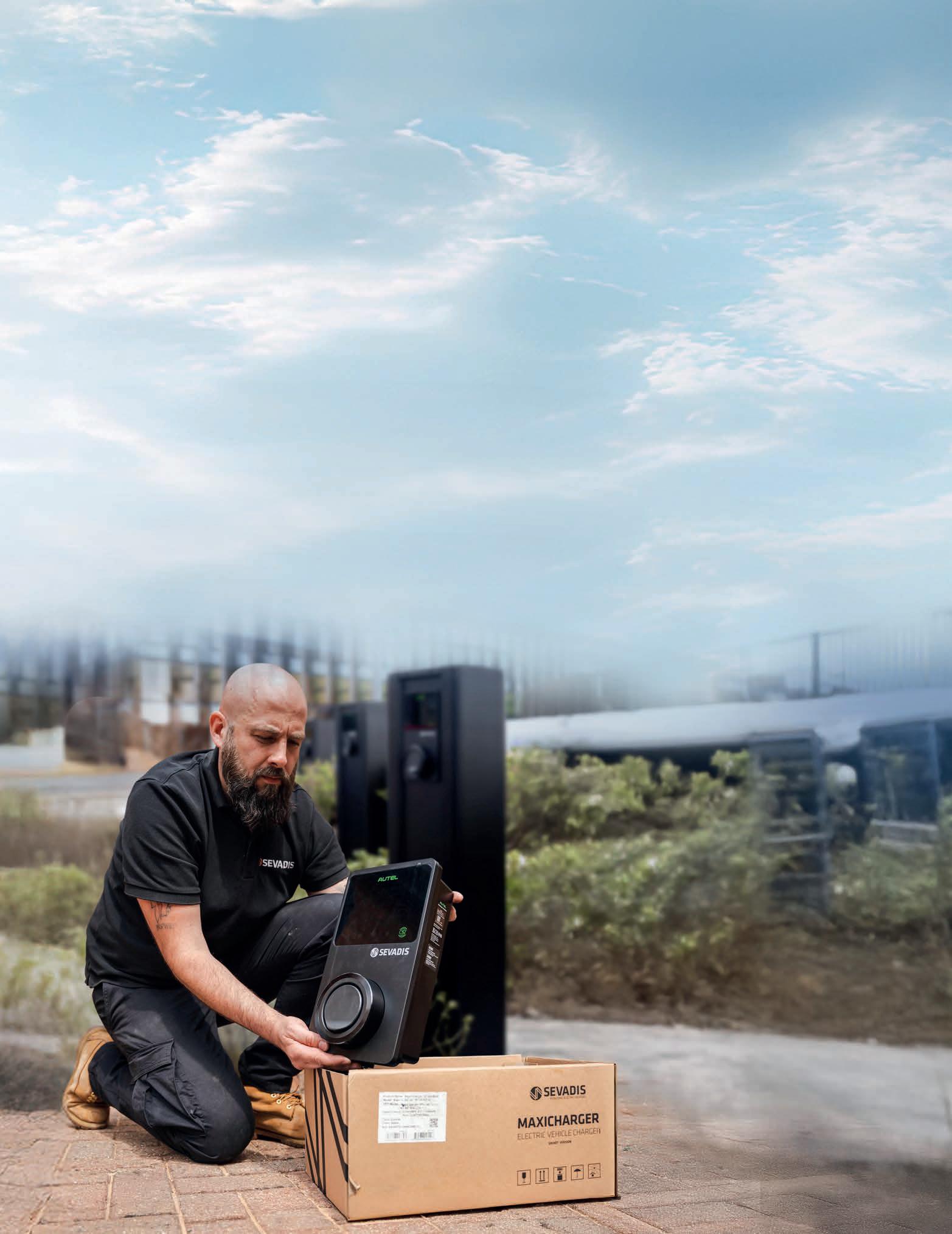
Half day in person course
• Practical, hands-on learning with charge points
• Commercial EVCP installations focus
• Hardware installation & software configuration
• Load balancing and connectivity
• Back-office management
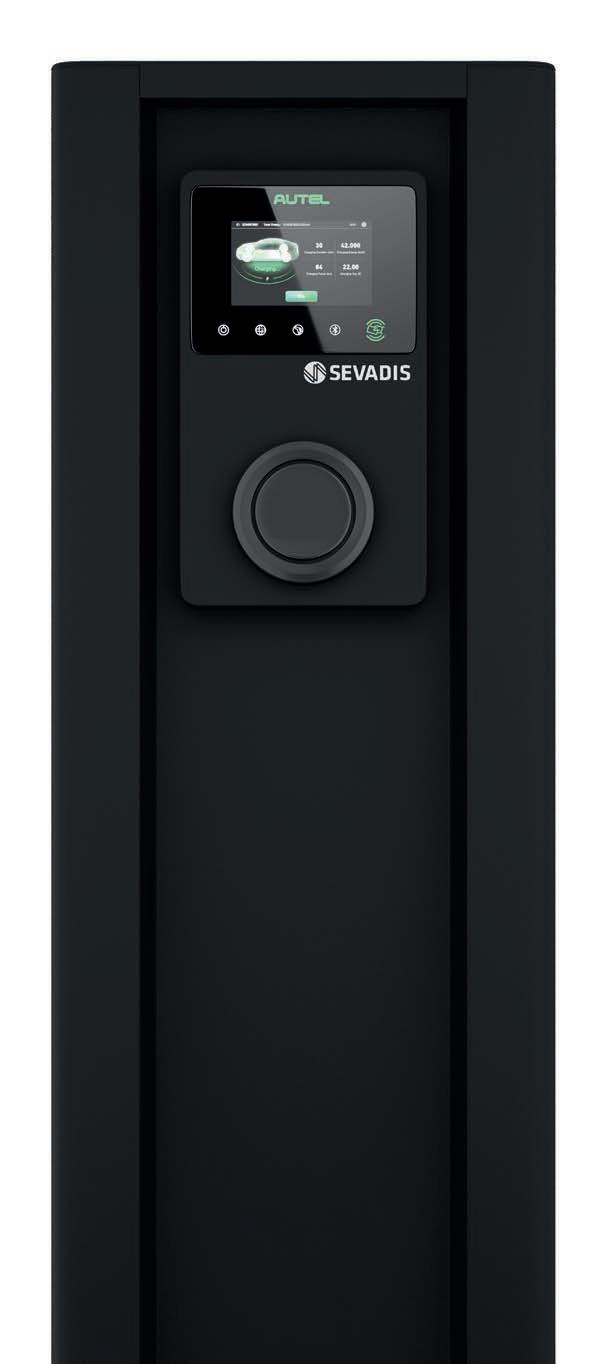
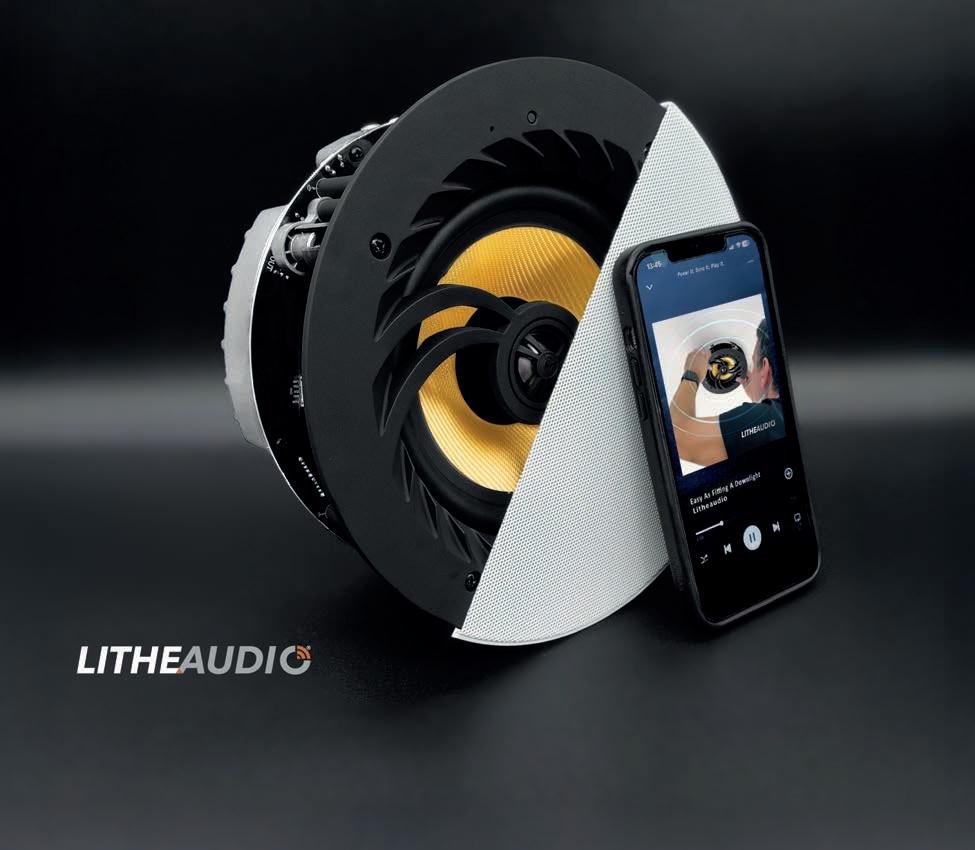
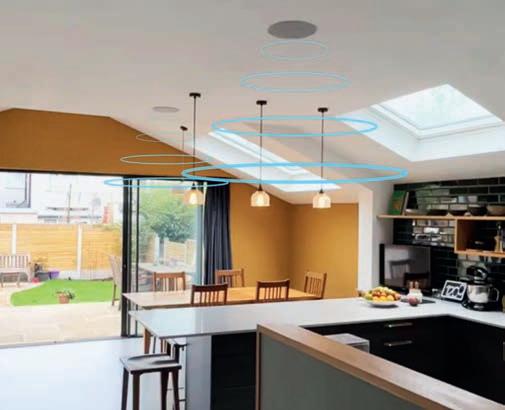

Lithe Audio is offering one lucky reader a pair of Lithe Audio 6.5” All-in-One Wi-Fi Ceiling Speakers (AirPlay 2, Google Cast and Bluetooth built-in), plus a Lithe Audio Wireless Micro Subwoofer (a total RRP of £850).
Lithe Audio is a leader in discreet, high-fidelity active in-ceiling audio. The company’s 6.5” All-in-One Wi-Fi Ceiling Speakers combine a built-in amplifier, premium drivers, and wireless connectivity all in one unit. They are perfect for kitchens, bathrooms, or multi-room setups.
Thanks to integrated Bluetooth, AirPlay 2, and Google Cast, you can stream wirelessly from any device, allowing you to play to a single room or group multiple rooms for whole-home audio. The power driver makes installation
straightforward, similar to fitting a downlight; simply cut a 210mm diameter hole and add power from any permanent live feed.
This prize also includes the compact Wireless Micro Subwoofer, which provides deep, immersive bass without extra cables. Together, this system transforms any space into a wireless audio environment – and whether for background music or lively parties, adding audio elevates your projects. Want to learn more? Join the Lithe Audio Pro installer programme for detailed training and to expand your audio offering.
Lithe Audio, litheaudio.com
To be in with a chance of winning the speakers and subwoofer, simply answer the following questions correctly:
1. How is power supplied to the Lithe Audio Wi-Fi Ceiling Speakers?
2. Which of these wireless streaming protocols are built into the Ceiling Speakers and subwoofer? a) Bluetooth b) AirPlay 2 and Google Cast
c) AirPlay 2, Google Cast and Bluetooth
3. What ceiling hole cut-out diameter is required for installing the speakers?
a) 185 mm
b) 210 mm
c) 230 mm
The winner of the June competition – an Elucian IP65 Rated Garage Unit Board, courtesy of Click Scolmore – was Graham Tumber of Graham Tumber Electrical.
All entries must be returned by 31 August 2025. The editor’s decision is final. For the full terms and conditions, visit electricalcontractingnews.com/ competition-terms.
The name of the winner will be published in the October issue of ECN.
*Prize not exchangeable.


Smart, connected and future-proof.
The latest addition to the technologically advanced 30 0 0 Series, the Ei3030 combines individual Optical, Heat and CO sensors for the ultimate fire and CO response, while maintaining the simplicity that Installers love. Scan here to learn more about the Ei3030



Add the Ei3000MRF for wireless interconnection and data extraction via the Ei1000G Gateway

This case study details a collaborative project between Alphatrack Systems and Aico, aiming to significantly improve domestic fire safety for the residents of 41 dwellings at Hyde Housing’s sheltered accommodation block in Peterborough.
The primary aim of the project was to enhance the domestic fire safety of 41 dwellings at Snowhill’s sheltered accommodation block. This objective was achieved through the installation of Grade D1, Category LD1 fire alarm systems, utilising Aico’s advanced products to provide comprehensive fire detection coverage throughout each property.
In accordance with BS 5839-6:2019 (the British Standard for fire detection and fire alarm systems in domestic premises), the Grade D1 classification specifies that the alarms are mains-powered with a tamper-proof, sealed lithium backup battery. These systems are designed to ensure long-term reliability, with the backup battery typically lasting up to 10 years, and cannot be removed or replaced by occupants, minimising the risk of system disablement.
The Category LD1 designation defines the level of coverage provided. LD1 represents the highest level of life protection, requiring smoke or heat alarms to be installed in all areas where a fire could potentially start, including circulation spaces (hallways and landings), living rooms, bedrooms, and kitchens. This ensures maximum early warning in the event of a fire, particularly important in sheltered accommodation housing vulnerable residents.
The installed system comprised:
• Ei3016 Optical Smoke Alarms for the detection of smoke in living areas, bedrooms, and hallways
• Ei3014 Heat Alarms for installation in high-risk areas like kitchens, where smoke alarms could give false activations
• Ei3000MRF SmartLINK Modules enabling wireless interconnection between all alarms, ensuring that activation of one alarm triggers all other alarms within the property
• Ei414 RadioLINK+ Fire/CO Alarm Interface allowing integration with external systems such as the telecare setup

Alphatrack has become one of Aico’s Gold Standard Installers

• Ei450 RadioLINK Alarm Controllers providing residents with centralised control and easy system testing.
The wireless interlinking via the Ei3000MRF SmartLINK Modules allowed seamless communication between devices without the need for disruptive wiring installations, ideal for retrofit applications. Integration
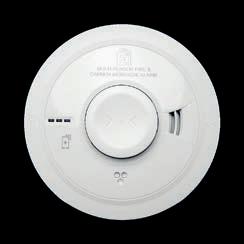
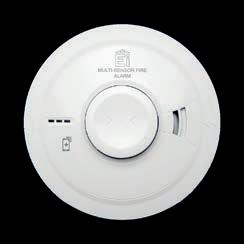

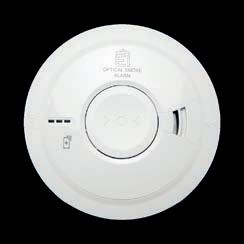
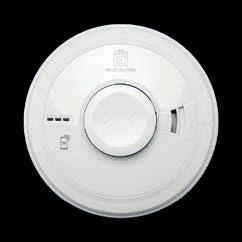
with the newly installed telecare system further enhanced safety, ensuring that alarm activations could prompt rapid response from monitoring services.
Overall, the project ensured compliance with both BS 5839-6:2019 and BS 7276, providing a robust, futureproofed solution tailored to the needs of vulnerable occupants
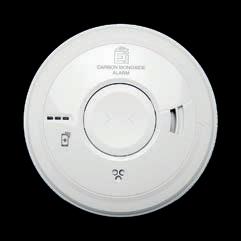
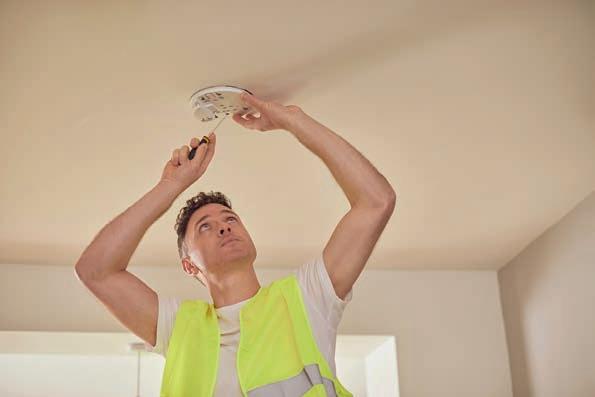
Rachel Wright, Aico’s Relationship Manager for London South, commented on her partnership with Hyde Housing, stating, “I have personally worked alongside Hyde Housing for over three years. This has been a rewarding and collaborative experience, particularly when it comes to ensuring the fire safety of their properties.
“One of the most significant initiatives has been upgrading the fire systems within their buildings. As part of this process, we’ve worked closely with Alphatrack, a trusted partner, to integrate advanced fire safety technologies into Hyde Housing’s portfolio.
“The importance of these upgrades cannot be overstated; fire safety is paramount in creating secure living environments for residents. By leveraging Aico’s cutting-edge systems, we’ve been able to modernise the fire detection and alert systems, ensuring they meet the highest standards of safety and compliance. This partnership has not only helped improve the resilience of the buildings, but also reinforced Hyde Housing’s commitment to the well-being of its communities.”
Aico and Alphatrack Systems have a long-standing collaborative relationship, working closely on life safety system design and product selection, engaging with clients and end-users on-site. This specific upgrade project took approximately five weeks and is part of a wider, ongoing upgrade programme across Hyde Housing’s sheltered and supported living blocks.
The project aimed to ensure residents could remain safe and supported in their homes through improved domestic alarm systems and a digitally enabled telecare system. Installations were carried out in tandem to minimise resident disruption, and careful consideration was given to installation methods to minimise aesthetic impact. The site-based scheme manager





was involved throughout the process, from planning to handover, ensuring efficient installation and strong resident engagement. Mitchell Rose, Head of Sales for Alphatrack Systems, commented on the partnership, adding, “We have a strong and collaborative partnership with Aico, working together on projects of all types, sizes, and complexities. With the continued support of Matt, Rachel, and Mark, every engagement is simple. The Grade D1, Category LD1 project at Snowhill’s is a great example of this partnership in action. Throughout the project, our Project Manager, Lee Newson, had access to consistent support and expert guidance on alarm type selection and telecare integration using the Ei414 units. The result was a high-quality installation and outstanding customer feedback.”
Alphatrack Systems’ engineers were responsible for the installation, testing, commissioning, and certification of the products. Before the work commenced, Aico’s Expert Installer training was provided to the engineers to refresh their knowledge on the system, its configuration, and best practices. Additionally, Aico’s Relationship Managers, Matt Golding and Rachel Wright, were available for site visits if necessary; however, due to Alphatrack Systems’ extensive knowledge, this was not required.
A resident engagement session, in the form of a ‘Coffee & Questions’ meeting, was hosted by Alphatrack Systems before installation work began. This session was designed to demonstrate the system, explain its use, and encourage questions from residents, which in turn, fosters an understanding and cooperation for a smooth access process.
Andrea Wilson, Regional Housing Manager for Hyde Housing, commented on the project and partnership, stating, “I was really impressed with the team from Alphatrack, Everon, and Aico’s Relationship Managers. They were professional and efficient, but also friendly and helpful. They worked hard and got the job done, dealt with issues along the way and worked well with our scheme officers and residents when explaining how to use the new system.
“Alphatrack Systems’ Project Manager, Lee Newson, and Lead Engineer were very approachable and always available if needed. The whole team were a pleasure to work with, and we look forward to working with them again”.

The project significantly benefitted the customer by improving life safety systems and enabling residents to remain safe and supported in their homes through technology. Each dwelling received an LD1 system, providing early warnings of fire and enabling fast evacuation and notification to the ARC via the warden call system. The introduction of the Ei450 RadioLINK Alarm Controller assists less mobile residents with routine monthly alarm testing and provides a simple way to silence any nuisance alarms.
The use of SmartLINK interconnection will facilitate the future integration of Aico’s Ei1000G Gateways, Ei1020 and Ei1025 Environmental Sensors. The seamless integration between the telecare system and Aico’s products was achieved using the Ei414 RadioLINK+ Fire/CO Alarm Interface.
Additional installations and upgrade projects are planned for further schemes across the South East of England, utilising similar system configurations and resident engagement methods. These upgrades will be for Hyde Housing and other Registered Social Landlords.
Matt Golding, Aico’s Relationship Manager for Essex, says, “It’s great to work with partners who value the importance of installing life safety products to the highest standard, and who are willing to work alongside us to deliver the best possible solutions for the end user. We are committed to helping Alphatrack achieve high standards through training and education, which enabled them to become one of Aico’s Gold Standard Installers. Our expertise, support, and strong relationships throughout the supply chain reflect the values we uphold
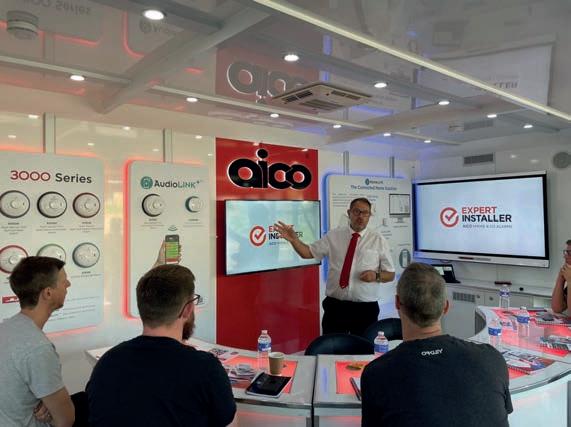
Chaz
, Technical
, explores whether or not we should follow safety recommendations made in product standards.

Iam old enough to remember traveling in cars without seatbelts. Yes – people did argue that seatbelts did not make cars safer and they were an unnecessary additional cost! So, what is the problem with clear, simple, and safe guidance being given to the UK electrical industry on the “Type” and use of RCDs with heat pumps?
The Heat Pump Association published its guidance in March 2025. The first recommendation highlights the requirements of BS7671 134.1.1 / 510.3, i.e., to follow manufacturers’ recommendations. That is, if the heat pump manufacturer recommends the use of RCDs with their equipment, you are ill-advised to go against their recommendations, because that is what the heat pump safety standard is advising as well. So, does that mean that if the heat pump manufacturer’s documentation does not make specific recommendations about RCDs, you can do what you like? No – BS7671 531.3.3 specifically states RCDs must be selected considering the presence of DC components and frequencies.
Many heat pump manufacturers recommend the use of RCDs with their equipment



We are aware that some manufacturers’ installation instructions may contain issues, either due to ignorance, a genuine error, deliberate omission, or unclear instructions, which could be used to gain a commercial advantage – such as failing to highlight the requirement to use Type B RCDs. Considering the current market knowledge, we must request that heat pump manufacturers clarify the RCD requirements for their equipment.
Inverter (semiconductor control system) controlled equipment, permanently connected to the supply, requires either the manufacturer of the equipment to specify the Type of RCD clearly in their installation instructions, or the installer has no option but to use Type B.
In a nutshell, lower-efficiency heat pumps, which do not use inverters, may be suitable for use with Type A RCDs (refer to the manufacturer’s installation instructions). However, it should be noted that transients associated with compressor capacitive starting characteristics could result in unwanted RCD tripping during switch-on. Be highly cautious of claims that equipment is suitable for use with Type A RCDs, as it may lead to future problems on-site.
Higher efficiency heat pumps utilise semiconductor control systems to provide soft start feature, i.e., reduced voltage starting, for compressors. Additionally, the semiconductor control system enables the speed of the compressor and fan to be adjusted based on heating and cooling demands. The characteristics of the control system determine the Type of RCD.
Annex H of BS ENIEC 62477 provides valuable guidance on the suitability and selection of RCDs for use with semiconductor control systems. Whilst this standard is primarily for technical committees producing product standards, Annex H provides a means of reaching reasoned and structured decisions relating to RCD selection associated with heat pumps. It gives




examples of basic circuit diagrams, associated fault currents, and the appropriate Type of RCD.
For example, Type F can be used with inverter switching frequencies up to 1 kHz, provided the smooth DC content does not exceed specified values. To achieve improved efficiency performance, heat pump manufacturers are now employing inverters with switching frequencies above 1 kHz, which are outside of the performance range of Type F and some manufacturers’ Type B RCDs.
To simplify selection, owing to the limits of the current BSEN Type B product standard and issues with Type B RCDs that only work effectively < 1 kHz, Doepke introduced the Type B HP RCD in 2023, clearly indicating its suitability for use with heat pumps. Other manufacturers are now replicating this. High demand has led to a decrease in manufacturing costs and market prices.
Installing heat pumps with increased efficiency performance (modern inverter control) that requires the use of Type B RCD, as opposed to lower-performance heat pumps associated with Type A RCDs, is a no-brainer when considering the total lifetime running cost for the homeowner.
Generally, when we think of domestic fixed equipment, it is typically mounted inside a clean, well-organised environment. Externally ground-mounted chunks of metal connected to a 240V supply are a relatively new consideration for the UK – fewer than 1% of properties have heat pumps to date.
Ultimately, under UK law, the responsibility lies with the heat pump manufacturer, the company or person responsible for specifying the electrical installation, and those who sign the installation certificate. We cannot argue that an RCD significantly adds to the lifetime costs of heat pump installations, particularly when choosing high-efficiency heat pumps with solid-state control.



Simple and intelligent, the 3000 Series provides whole property coverage.
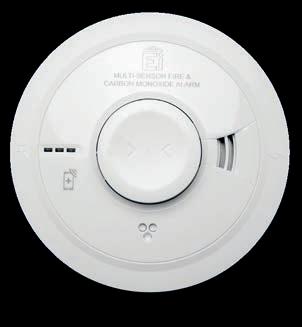
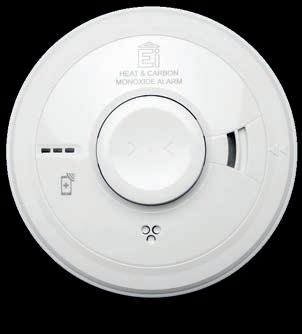

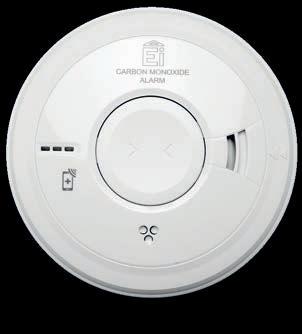
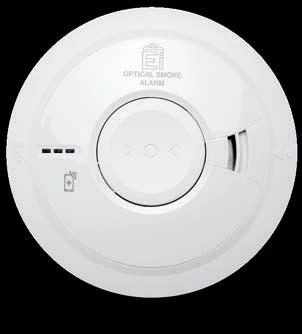
The technologically advanced 3000 Series includes both Multi-Sensor and Single-Sensor alarms, detecting Fire and Carbon Monoxide from just one range, while maintaining the simplicity that installers love.
Smart, connected and future-proof.
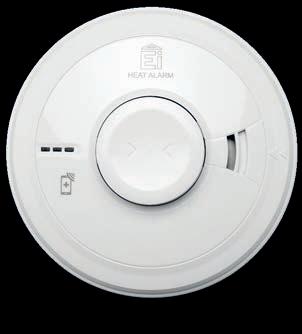
Add the Ei3000MRF for wireless interconnection and data extraction via the Ei1000G Gateway
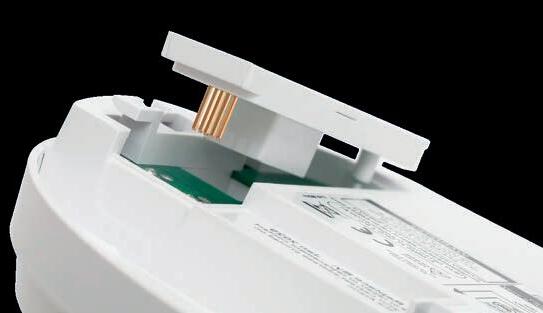
As product safety certification provider Kiwa broadens the scope of its service for certifying new products, Leigh Picton, the company’s Laboratory Manager, highlights the key steps in the process that electrical contractors and engineers working for manufacturers should be aware of.

As we all know, before any new electrical product is launched in the UK, it must be fully certified as safe to ensure it complies with national and international standards. Independent certification provides an essential layer of assurance for buyers and users. This process reduces the risk of product failures and ensures safety while protecting the manufacturer’s reputation.
Getting certification right is critical, but the process can be complex. Global and regional safety standards are increasingly rigorous, and each target market often has its own unique requirements. To streamline the process, collaborating with a reputable, independent safety certification provider from the start is key.
Following this collaboration, there are six steps to achieving electrical safety certification which can help manufacturers launch their products with confidence.
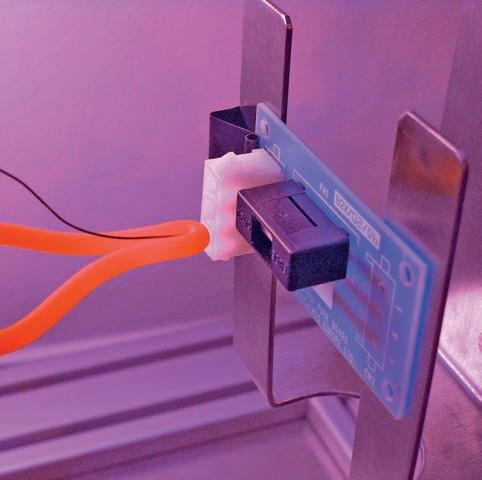


The first step involves engaging with a certification provider by submitting a Request for Quotation (RFQ). This helps define the exact scope of testing and the target countries or regions for product launch. The certification provider then creates a tailored testing roadmap, outlining key stages, milestones, required resources and estimated costs.
Starting this process early enables manufacturers to understand the challenges ahead and plan resources accordingly.
Once the scope and costs are agreed upon, the next step is to submit a test sample of the product, along with comprehensive documentation. This includes:
• The manufacturer’s details and list of manufacturing locations
• A complete product description
• Detailed documentation for each component in the product
This stage is crucial because every component, especially those designated as safety-critical, must meet all relevant local and international regulations. Certification for these components should ideally be obtained as early as possible.
With the product sample submitted, testing begins. Certification providers test the product and its components against International Electrotechnical Commission (IEC) standards and the national requirements of target countries. This ensures compliance with both global safety standards and local regulations.
Providers that conduct all testing in-house, such as Kiwa, can significantly minimise delays. Their dedicated laboratories and experienced engineers focus on delivering efficient, high-quality testing. Any issues that arise are communicated promptly, allowing for swift resolution.
After testing, the certification provider issues a ‘findings letter’ outlining any outstanding issues that need to be addressed. These findings provide manufacturers with clear guidance on the remedial steps required.
Once the product complies with all relevant standards, the certification body issues the CB Test Certificate and Report. These documents are critical for securing national certifications. They include details on international standards as well as any deviations specific to the target countries.
This approach allows manufacturers to apply for certifications in multiple countries without duplicating laboratory testing, saving significant time and cost.
With all certifications in place, the product is ready for launch in its target markets. Manufacturers can proceed confidently, knowing their product meets all relevant safety standards and is independently confirmed to be safe and fit for use.
Launching without correct certification risks product failures that could harm users, damage reputations and lead to legal action.
Partnering with an established name in product safety certification provides access to a range of services, including the IECEE CB scheme.
Achieving electrical safety certification doesn’t have to be a daunting task for new start-ups or established manufacturers. Following the six-step process outlined here ensures a smooth path to compliance, helping electrical contractors and engineers working for manufacturers





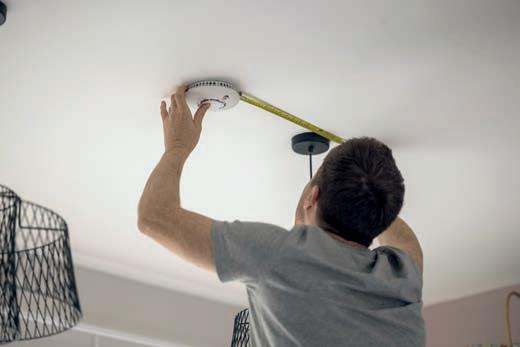
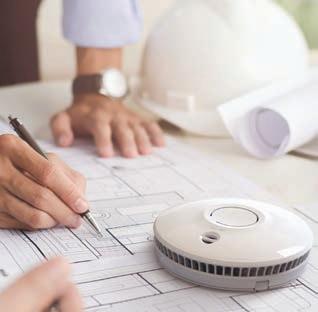

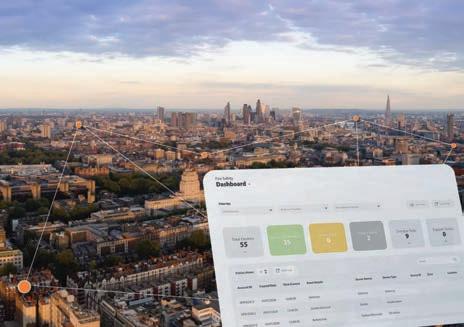
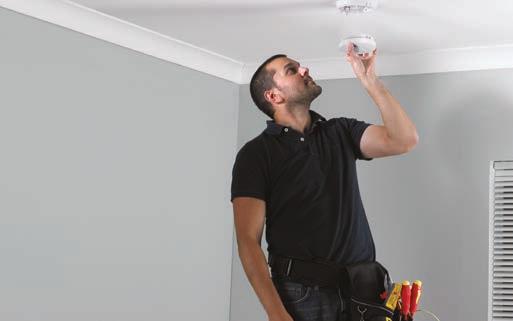
In this article, Hochiki Europe explores the benefits of its Hybrid Wireless technology and explains the practical benefits for electrical engineers.
Hybrid wireless fire detection systems are a highly effective answer to persistent challenges in building fire safety. By combining the trusted reliability of hardwired networks with the flexibility of wireless deployment, hybrid systems, like Hochiki’s Ekho range, help engineers balance minimal disruption, design adaptability, and future expansion without compromising safety.
A hybrid fire detection system merges wired and wireless devices into a single, smart network. Hochiki’s Ekho platform connects to the ESP intelligent loop through Translator modules, enabling wireless detectors, sounders, call points, and interfaces to operate with full addressability, each device carrying a unique digital signature. This setup delivers the same diagnostic precision found in wired systems, but with the added agility of wireless positioning.
Ekho devices form a self-configuring mesh network via Expanders. Each device automatically selects the optimal signal path back to the Translator, maintaining robust, bi-directional communication even in structurally complex environments.
Electrical engineers can face constraints like legacy wiring, delicate interiors, tight deadlines, and of course adhering to compliance demands. Hybrid systems offer some very practical solutions, such as:
• Minimal disruption: Wireless units eliminate extensive cabling and drilling.
• Flexible design: Enables placement of detectors in difficult-to-wire zones such as atriums, stairwells, or separate campus buildings.
• Faster installation: Less cabling accelerates installation and commissioning.
• Simplified commissioning: Ekho systems can be pre-programmed and configured off-site before installation begins, speeding up installation and commissioning.
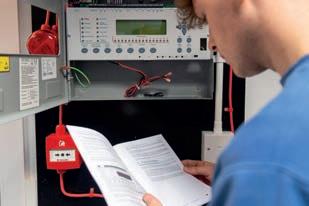
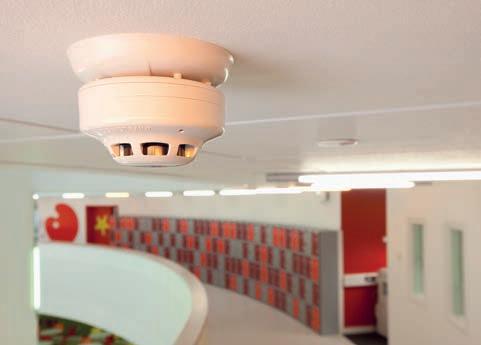
• Scalability and retrofitting: Translators can be wired directly to existing ESP loops, enabling the seamless addition of wireless devices without wholesale rewiring.
Hybrid systems often reduce total project expenditure through:
• Less labour and faster setup
• Minimal cosmetic restoration
• Predictable servicing cycles – typically five to 10 years – supported by constant monitoring.
Technologies like Long Range Wide Area Network transmit data such as battery or signal updates using minimal power across long distances, reducing infrastructure demands. Integration with IoT platforms enhances operational efficiency, enabling real-time alerts, remote fault diagnostics, and predictive maintenance – helping pre-empt issues before they impact safety.
Hybrid wireless systems are particularly well-suited for heritage buildings, hospital wings, commercial office retrofits, social housing, temporary or phased builds, retail fitouts, and educational campuses.
Hochiki’s Ekho system adheres fully to relevant standards including EN54-25, EN 54-4 and BS 5839 1 for non-domestic fire alarms and consideration of BS 8629 in high-rise residential contexts. By working with BAFE-certified engineers, installations ensure full compliance and best practice.
Less cabling accelerates installation and commissioning, Hochiki explains
Hybrid wireless detection offers a balance of adaptability, speed, and compliance –making it a strong choice for engineers overseeing life safety installations. From reducing disruption to enabling faster commissioning, hybrid systems simplify projects while supporting long-term performance and regulatory alignment.
Hochiki’s Ekho system brings these benefits to life with intelligent mesh communication, seamless integration into existing ESP loops, and full EN54-25 compliance. With devices designed for versatility and engineered for reliability, Ekho gives engineers the tools they need to meet today’s fire safety demands, while staying ready for tomorrow’s challenges. To explore how Ekho could support your next project, visit hochikieurope.com/ekho or contact your local Hochiki representative.
Hochiki Europe, hochikieurope.com

A North London Borough with six apartment blocks replaced costly ‘waking watch’ patrols with an Ekho hybrid system –EN54-25 approved and RED compliant. The council worked with a BAFE-certified contractor to install Ekho devices across the complex without tearing out existing wiring or disturbing residents. The result? Enhanced safety compliance, continuous system monitoring, and zero occupancy disruption.
A council representative reported: “Ekho hybrid wireless allowed us to meet regulatory changes quickly and reduce waking-watch costs; it was that quick, and residents were never disturbed during the install.”
This project demonstrates how hybrid wireless provides a safe, cost-effective alternative in occupied residential settings.
Scan the QR code to read the full story.













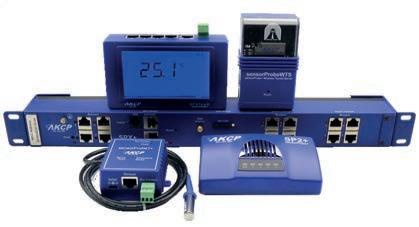
With Scottish knitwear brand, Eribé Knitwear, seeking enhanced fire protection that is both high-performance and fault-tolerant, the design house turned to Advanced to provide an appropriate solution. ECN takes a look at how the project unfolded and reveals which technology was ultimately chosen.
Fire protection solutions manufacturer, Advanced, has supplied an intelligent fire panel with wireless detection to iconic Scottish knitwear brand, Eribé.
An Advanced MxPro 5 analogue addressable fire panel has been installed at Eribé Knitwear to provide protection that is high-performance and fault-tolerant. The system was installed following a fire risk assessment which required Category L2 coverage.
Founded in 1986, Eribé’s knitwear design house and manufacturing company is based in Melrose, in the Scottish Borders. The company prides itself on championing Made in Scotland and has a dedicated fan base worldwide. During 2024, the company took time to assess the whole business to strengthen its internal and external systems and processes for its staff and customers. As part of this process, Eribé reviewed its fire system to ensure full compliance and prioritise staff, premises, and customer safety by investing in Advanced fire protection.
Fire and security service provider, Safe Services, installed an Advanced MxPro 5 single-loop analogue addressable fire panel to replace the existing fire system, as it was old and could not be brought up to standard. Since the MxPro 5 was being retrofitted at Eribé, the Advanced panel was seamlessly integrated with an EMS Firecell wireless system, which simplified the installation since cabling was not required throughout the building.

Tamsin Ansdell of Eribé Knitwear explains, “In 2024, we reviewed our business as a whole to strengthen our processes. The safety of our staff, premises, and customers was a priority, so we were fully behind investing in an Advanced fire safety system. We are now really proud to say that with the help of Safe Services, our extended team, managers, and directors feel far more knowledgeable regarding the risks and actions, and the whole team feels safer and more invested in it as a result.”

Graeme Millar, Fire Technical Sales Engineer at Safe Services, adds, “We were responsible for the installation, commissioning, verification and handover of the system at Eribé, and will also be conducting ongoing maintenance. As we installed the Advanced panel with the wireless EMS Firecell, it made it far more straightforward and meant less disruption for Eribé. We have several sites we have worked on with the same combination, and know the Advanced MxPro 5 works well with EMS equipment. The Advanced MxPro 5 is our panel of choice as it’s a trusted and reliable panel with our design and installation teams.”
Neil Parkin, Sales Manager at Advanced, comments, “Choosing wireless equipment when installing a fire system is ideal for retrofitting, where cabling can be trickier to install and visually unappealing. Add to that the time and cost benefits they provide to installers, and it is a great choice in multiple scenarios both large and small. Our MxPro 5 panels are designed to make life as easy as possible, delivering robust protection that offers real peace of mind, all backed up by our highly rated technical support.”
MxPro 5 is a multiprotocol fire panel which is certified by FM Approvals to the EN 54 standard. It offers customers a choice of four detector protocols and a completely open installer network, backed up by free training and support. MxPro 5 can be used in single-loop, single-panel format, or easily configured into high-speed networks of up to 200 panels covering huge areas. Ease of installation and configuration, as well as its wide range of peripheral options, make MxPro 5 customisable to almost any application.
As well as compatibility with leading wired detector brands, MxPro 5’s versatile wireless capabilities make it easy to install robust fire alarm systems whilst saving crucial time, cost and disruption. Harnessing the power of proven technology, MxPro 5’s wireless innovations are scalable, adaptable, and reliable – for complete fire safety peace of mind.
Wireless solutions not only mean lower visual and physical impact, but they are




also faster and cheaper to install, making them an increasingly popular alternative for sites where downtime is not an option, or re-wiring would prove disruptive. Thanks to two-way communication with the panel, battery replacement and fault reporting can also be worked into the ongoing maintenance schedule via the panel service tools.
The MxPro 5’s stand-out false alarm management capabilities are available as standard. AlarmCalm delivers impressive control of verification and investigation delays. By dividing sites up into virtual false alarm ‘building areas’ independent of fire zones, much more precise control of false alarm management and reduction strategies can be achieved that exactly fit the needs of each part of a building. An optional AlarmCalm button allows trained occupants to verify if they believe a local fire signal is a false alarm too – a highly effective way of eliminating unwanted alarms.
As an expert in the development and manufacture of intelligent fire systems, Advanced products are specified in locations around the world, from single-panel installations to large, multi-site networks. The Advanced portfolio includes complete fire detection systems, multiprotocol fire panels, extinguishing control, false alarm management and reduction systems.




Jake Green, Head of Technical Engagement with Scolmore Group, looks in detail at a number of key changes in the recently published updated BS 5839-1: 2025 standard.
As with the introduction of all British Standards, other than for BS 7671, the old standard is superseded on the same date as the new one is published. BS 5839-1: 2025 came into effect on 30 April 2025, and the old 2017 version was subsequently withdrawn on that same date.
The foreward of any standard details some, but not all, of the changes introduced in the new standard. What should also be noted is that BS 5839-1 is a ‘Code of practice.’ This means that it provides guidance and recommendations; it is not legislation.
This article will highlight several specific changes and the likely implications for all those involved in the design, installation, commissioning, and maintenance of fire detection and fire alarm systems.
All standards contain a foreword detailing the relationship with other standards and specific information about the new document. However, under Section 1 (General) the new Standard differs from the 2017 version by adding an introduction prior to the Scope of the document.
This introduction now details the principal purpose of a fire detection and fire alarm system is to ‘support the fire evacuation strategy’ for the building rather than, as the previous standard stated, the ‘fire safety strategy’ for the building (Clause 6.1 Commentary).
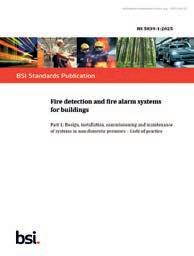


This is a subtle but important shift in how the recommendations of this standard should be applied. The focus on the evacuation strategy alone means that the design has a single focus, rather than a slightly more general ‘fire safety’ strategy.
The introduction also makes much clearer reference to other standards and guidance documents where there are levels of uncertainty. These include: BS 9991; BS 9999; guidance documents that support fire legislation; insurance documentation; and any relevant fire risk assessment.


The common practice amongst many contractors seeking to design a fire detection and fire alarm system was/is to ask a manufacturer to design the system, and then supply and commission the system to meet the requirements of the design. However, the fire strategy must be considered as of primary importance insofar as the design is concerned. A fire risk assessment is important, but it is not a strategy.
The previous Clause 6 (now Clause 5) has an updated commentary as well as amended recommendations. It is important that there is clear communication between relevant parties, and Clause 5 has made things much clearer.
Clause 5.1 now recommends that consultations take place prior to the design stage. This has amended the recommendation from the 2017 standard that consultation should take place ‘prior to or at’ the system design stage.
These prior consultations should be between: user/purchaser; consultants (to include architects, M&E and fire engineers); the designer; the authority responsible for enforcing fire safety legislation; and the property insurer.
At the design stage (Clause 5.2), consultation should happen between the designer, user/purchaser, and consultants.
The amended clause no longer places the responsibility on the designer alone to ensure this consultation takes place. A more collaborative approach is now called for.
At the installation stage (Clause 5.3), consultation should happen between the designer, user/purchaser, consultants, and the supplier of the system.
Again, this amended clause no longer places the responsibility on the installer to ensure this consultation takes place; indeed, the installer is not included in the list to this consultation.
Where a designer has made a proposal for the category of system (Clause 5.4), this should be agreed with the user/purchaser. This is an important
change of emphasis, requiring all relevant parties are able to ‘sign off’ the design. Similarly, the designer should agree with the user/purchaser (Clause 5.5) whether the system incorporates visual alarm devices (VADs).
A further change has been made to what should occur prior to the placing of an order for the system (Clause 5.6), and this is to also include ‘handover’ within the list of those with responsibility for each element of design, installation and commissioning.
Furthermore, greater clarity has been provided for who is responsible for the creation of the zone plan (Clause 5.7). This should be clearly defined, agreed and documented.
Variations have long been an accepted part of the design process. There may be instances, for example, where a thoughtless application of a recommendation would lead to a design which is less than optimal. Indeed, the fire risk assessment process may lend itself to including certain variations.
As with the previous standard, any variations must be clearly identified and recorded in the logbook and relevant certification, and should be such that they are immediately obvious to any relevant parties.
Previously there were no stated exclusions from permissible variations. This is no longer the case. Clause 6.6 now details those departures which are considered as so detrimental to the safety of the system, that they should be excluded. These excluded items are:
• The absence of a zone plan or other suitable diagrams in which there are more than one zone and particularly where people sleep
• The absence of a facility for transmission of an alarm signal to an alarm receiving centre (ARC) in:

Mathew Jones, Product and Brand Executive at Carl Kammerling International, the home of Kasp Security, discusses why supplying trusted tools is an essential step in helping customers to achieve safe isolation.
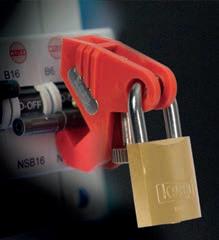
Safe isolation is more than just a routine task for electrical professionals – it’s arguably the most important part of the job and demonstrates a commitment to prioritising the protection of others.
A thorough and multi-staged approach is required when it comes to achieving safe isolation, including the implementation of high electrical standards, adhering to the latest guidance, and selecting and maintaining a high standard of electrical equipment to complete the project effectively and safely.
The opportunity for electrical wholesalers is clear; providing a wide choice of tools and devices to support electricians in protecting themselves and others. The supply of this equipment is not only an opportunity to generate sales, but an opportunity to save lives.
Isolating an electrical network involves several important steps, from isolating the energy source, verifying no voltage is present, and the usage of effective lockout devices to prevent the circuit being re-energised until after work is complete. For each step of the process, it is vital that effective, trusted tools and equipment are used.
This includes a voltage indicator, with the means to prove it is operational usually with the use of a dedicated proving unit, insulated tools, lockout devices and signage to warn others to avoid disaster should a circuit inadvertently remain live.
With such a wide range of equipment available, the choice of product can often be overwhelming. Lockout devices play one of the most crucial roles in the safe isolation process by preventing the circuit being re-energised until after work is complete by ensuring a circuit breaker remains in a specific on or off position – an important step to ensure the safety of the workforce. There are a number of options available when it comes to lockout devices; some

are universal while others are designed to fit specific brands, but by employing a variety of devices, retailers can help users to significantly reduce the risk of injury.
The old adage ‘the bitterness of poor quality will remain after the sweetness of low cost has been forgotten’ has never been truer, particularly when it comes to the safe isolation of an electrical network –where inadequate tools can be unsafe and lead to disastrous consequences.
Reliability is key when selecting the right tools to stock, so opt for trusted brands and proven products. There are several elements to consider when selecting an effective tool: the R&D process behind it, the source of the materials, the engineering and manufacturing procedures, the quality control, and accreditation. Each element undergoes a constant review as new materials, manufacturing techniques, or industry requirements are uncovered, with the effectiveness, durability and safety of the products always front of mind.
Kasp Lockout, from one of the UK’s most renowned security padlock, chain and cable brands, owned by Carl Kammerling International, is a range of essential tools designed specifically to protect electricians and their colleagues from accidents at work through safe isolation. The range safeguards against a sudden release of energy, locking off energy sources using padlocks and physical security devices.
This universal mini circuit breaker isolates single, double, and triple switches. It is reportedly easy to install using no tools, and quickly protects against dangerous energy surges while maintenance and repairs are carried out.
To use, simply place the tool over the switch, tighten the easy-to-use thumb screw, rotate the screw toggle, and lockout with a padlock. Made from quality, non-conductive material, the Kasp Easifit MCB Lockout is an essential part of any maintenance toolbox.



The Kasp Easifit Miniature Circuit Breaker (MCB) Lockout with a padlock


Ideal for locking out wider miniature circuit breakers, this pin lockout uses a simple push button installation, so no tools are required. Made from high quality, non-conductive material, the pin lockout works with one padlock and fits a maximum shackle diameter of 6mm.
This unique kit contains all the essential parts to lock off one mini circuit breaker. The kit includes an Easifit MCB Lockout, one 25mm brass padlock, a danger and identity tag, and a carabiner to hold the kit together.
This kit is ideal for a broad range of circuit breakers, including those over 60A. It is easy to use and contains both the Easifit MCB Lockout and the Pin Out Wide Lockout. Fitting neatly into a sturdy red pouch with a carabiner for hands-free access, the kit also contains a 40mm red vinyl coloured brass padlock with brass shackle, a 25mm brass padlock, a lock off hasp, a tagout marker pen, and a danger tag.
In the world of electrical work, the importance of the safe isolation of the electrical network cannot be underestimated, and wholesalers that offer good quality, reliable tools will stand apart from the rest.
Carl Kammerling International, carlkammerling.com
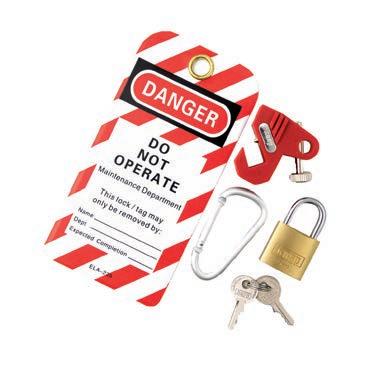





NVC Lighting explores the ways LED solutions are transforming workspaces, schools, and healthcare estates.
It wasn’t too long ago that LED lighting was viewed as a premium lighting option for those with a larger budget or the foresight to prioritise longer term energy savings over initial cost outlay. Today, across all corners of the built environment – from office spaces and schools to hospitals and public buildings – LEDs have become the accepted gold standard, delivering energy efficiency, long-term savings and improved user experience at an affordable price.
Across non-domestic buildings in the UK today, lighting accounts for around 15-20% of total electricity use, and with energy prices rising, switching to LED lighting is one of the simplest and most effective steps to take to reduce a building’s energy usage and associated costs.
According to research from the Carbon Trust, LED lighting can reduce lighting-related electricity use by up to 80% when used to replace older incandescent or fluorescent fittings.
Switching to LED lighting doesn’t only save money through lower bills either.
LED products have longer lifespans, with lower associated maintenance costs and improved controllability all contributing to long-term operational savings.
Cost savings may be the most eye-catching attraction to LED lighting but of course, the benefits beyond this are vast.
Superior light quality, customisable colour temperatures, low-glare optics (UGR<19) and smart controls allow LED lighting schemes to be tailored for specific environments – from classrooms and offices to clinical settings and corridors.
If LED lighting was once a premium option, and then became the accepted standard, it’s now being taken a step further, with uptake becoming driven by Government policy.
In 2023, the UK government began phasing out fluorescent lamps – including common T5 and T8 tubes – under updated RoHS regulations.
Creating the right atmosphere at Calztec’s new facility in Romsley was key

For contractors and facilities managers, this was a clear signal that LED is now the default.
NVC Lighting has worked alongside its customers through every phase of this transition. The company’s focus is on delivering high-quality, cost-effective LED lighting, backed by practical knowledge of what drives performance, efficiency, and real-world value.
From reinventing modern workplaces to helping NHS Trusts cut carbon, and transforming school estates to enhance learning, NVC’s LED solutions continue to prove how impactful the right lighting can be – not just for buildings, but for the people who use them.
When commercial fit-out specialist Calztec moved into its new headquarters at Romsley Point in Bromsgrove, it wasn’t just creating a home for it’s own team – It was designing a collaborative, multi-use workspace for the wider business community.
Creating the right atmosphere at Romsley Point was key – not just
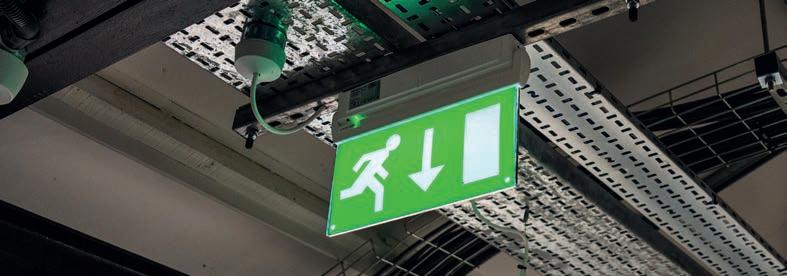

for Calztec’s own team, but for the businesses and clients who use the space. The lighting had to look sharp, perform well, and reflect the building’s modern aesthetic without compromising on energy efficiency.
To bring that vision to life, Calztec partnered with NVC Lighting.
Working with NVC Lighting, Calztec chose the DALLAS PRO – a surface or suspended luminaire with ultra-low glare (UGR<19), streamlined design, and the flexibility to be specified in any RAL colour. In this case: black, to complement the workspace’s contemporary look and feel.
For Romsley Point, 54 black-finish DALLAS PRO units were installed throughout the communal areas.
“As design and fit-out experts, we’re used to working on bespoke, unique briefs and wanted to reflect that approach with our new base,” says James Haslam, CEO at Calztec. “Working with a partner like NVC Lighting meant we could explain our vision to someone who understood the specifics of what that would require.”
The installation was backed by NVC’s ‘LiFe’ emergency lighting range, using long-lasting lithium phosphate batteries –80% more efficient than NiCd alternatives.

As with every product in the NVC PRO range, the fittings came with a comprehensive seven-year warranty – built to perform in busy environments, and built to last.
The final result was a workspace that looks modern, feels comfortable, and reinforces Calztec’s brand – proving just how much a well-executed lighting scheme can shape the experience of a space.
In education, lighting needs to be more than simply functional. It directly affects how students focus, how teachers deliver, and how everyone feels in the space – all while helping contribute towards meeting energy targets and fit long-term budgets.
That was the challenge at Bradford Grammar School (BGS), an independent school with a large, diverse estate. Partnering with NVC Lighting, BGS implemented a full lighting upgrade, replacing outdated fittings with high-performance, energy-efficient LED solutions tailored to each part of the campus.
“This project has been a great success,” comments Ian Clint, Head of Estates at BGS. “We’ve cut energy costs by over 34% – that’s around £65,000 a year – while significantly improving the learning environment.”
From historic halls to sports centres, labs, stairwells, and car parks, the new lighting scheme covered every corner of the estate. NVC supplied a wide range of products, including:
• Yale Pro (low-glare linear luminaires with selectable output, perfect for classrooms and corridors)
• Sterlin Pro LED panels
• Denali circular bulkheads (IK10/IP65 rated for robustness)
• Westminster and Washington recessed downlights.
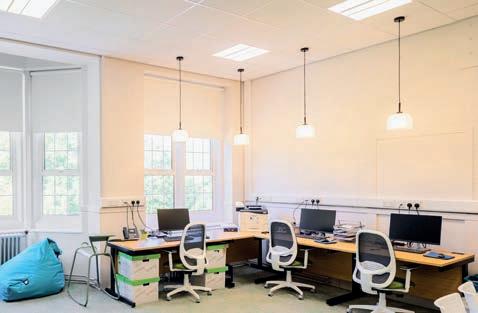
All emergency lighting was integrated into the school’s BMS, and every fitting is rated L80 at 100,000 hours – dramatically reducing future maintenance.
“We now have a lighting scheme that exceeds the standards of a high-performing educational facility,” adds Ian. “NVC went above and beyond – not just with product quality, but with service, delivery, and partnership.”
In the public healthcare sector, lighting must meet a unique set of challenges – from clinical performance and patient comfort to long-term sustainability and cost efficiency.
That same mix of performance, sustainability, and comfort was critical for the Herefordshire and Worcestershire Health and Care NHS Trust, which partnered with NVC Lighting as part of its Energy Efficiency Fund (EEF) upgrade.
With a Net Zero 2040 target in place, the Trust needed a lighting partner that could move quickly, deliver across multiple sites, and respond to the practical needs of both patients and frontline staff.
Seven older buildings across the Trust’s estate – including Tenbury Community Hospital and Warndon Child Development Centre – were identified for retrofit. Working in partnership with Edmundson Electrical, NVC provided a tailored selection of LED products, including:
• Yale Pro for corridors and staff areas
• Columbus and Portland bulkheads (IP65/ IK10 rated)
• Washington recessed downlights
• Texas battens for utility spaces
“We had issues with glare and uneven colour temperatures that made spaces feel clinical and uncomfortable,” says Rehan Yunus, Environmental Officer at the Trust. “The new LED lighting creates a much calmer, more adaptable environment for both patients and staff.”
Importantly, the Trust also wanted greater control – with dimmable fittings and smart switching to reduce energy use without compromising comfort or safety. The result? A lighting solution that enhances well-being, reduces energy waste, and supports the NHS’s long-term sustainability goals.
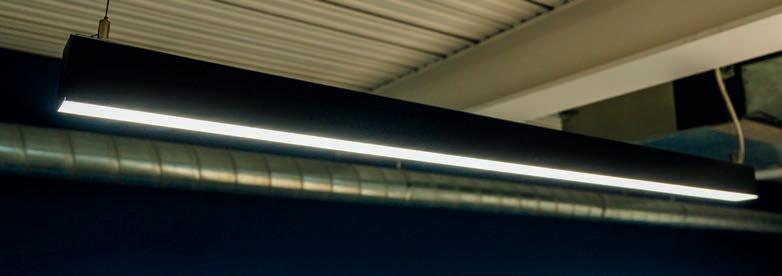


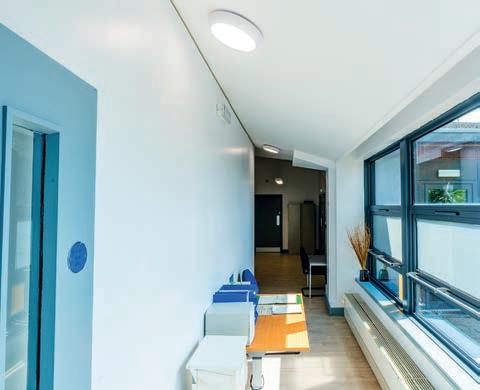
“It was a real team effort,” notes Aaron Chandi, Area Sales Manager at NVC Lighting. “We even got boots on the ground to manage site deliveries – because the right product, in the right place, at the right time, can make all the difference.”
As these three projects show, lighting today plays a much larger role than simply illuminating a space. In offices, it defines experience and reinforces brand. In schools, it affects behaviour, concentration and even academic performance. In healthcare, it influences recovery, relaxation and comfort. And across every sector, smart LED lighting is helping organisations take real steps toward sustainability, cost savings, and compliance. What makes NVC Lighting different is its ability to adapt to any sector, offering:
• High-performance, UK-manufactured LED products
• Full technical support, from site surveys to design and specification
• Integration with smart controls and BMS systems
• Fast lead times and seven-year warranties for peace of mind
LED lighting isn’t just an upgrade – it’s a strategic decision. And with the right partner, the benefits are hard to overstate.
To find out how NVC Lighting can support your next project, whether you’re upgrading a school, transforming a workplace, or future-proofing public buildings, visit nvcuk.com.
NVC Lighting, nvcuk.com
Chris Anderson, Technical Manager at Ansell Lighting, takes a look at how strip lighting has moved from a niche design accent to a key player in contemporary lighting schemes.
Originally used by experienced lighting designers and architects, LED strip lighting has been around for the last 25 years. Used predominantly for accent and task lighting in design projects, it added an extra layer of ‘polish’ to interior design and architecture.
But today, the secret is well and truly out of the bag and the technology has surged in popularity, becoming a core feature in homes and venues of all shapes and sizes.
So why has this once-specialist solution become such a popular design choice?
As with many modern trends, social media has played a huge part. Whether it’s fashion influencers filming in their dressing rooms, gamers showcasing their gaming set-ups, or glimpses into luxury homes and hotels, social media platforms have thrown a spotlight on strip lighting, turning it into ‘must-have’ technology.
Mood and ambience is important to today’s consumers, so whether they’re winding down after a long day or beginning an online gaming session, this generation demands that lighting in the home does more than just illuminate. It needs to support their lifestyle, image, and overall wellbeing.
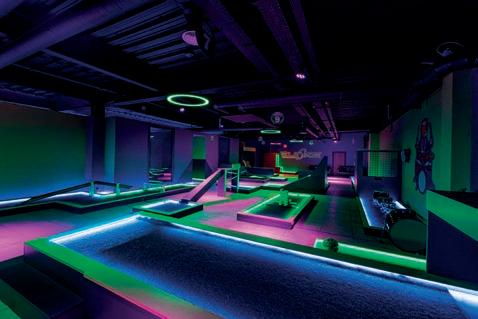
Venues too need to offer the real wow factor to keep customers coming. Whether that’s bright, colourful interactive lighting in arcades or bowling alleys, or luxury touches such as motion sensor lighting in hotel rooms, strip lighting plays a key role in creating memorable, immersive experiences.
Aside from mood and ambience, another reason that strip lighting has become so popular in recent years is its incredible versatility. Today, you’ll find it inside wardrobes and kitchen cupboards, around ceiling coving, under beds, and even inside showers or along outdoor decking. Thanks to the wide variety of products available – including waterproof/ water-resistant versions and flexible strips that can twist and curve – LED strips are ideal for virtually any application.
Strip lighting is also available in a variety of colour formats. From single-colour to RGBW options which offer millions of hues, strip lighting can be used to deliver just about any colour required and to create diverse atmospheres. Some newer models even have individually addressable LEDs which allow dynamic lighting effects to be created with smooth animations and customisable colour sequences.
As with many modern lighting solutions, LED strips are easy to operate and control. In typical installations – such as under cabinets, around ceilings, or along bathroom features like showers and baths – they are often wired to standard room switches for seamless use. Those inside cupboards and wardrobes often have a motion sensor attached, activating the lights automatically when doors are opened. Many LED strips are also compatible with smart lighting systems, allowing users to pre-set different functions at specific times. Colour temperature and brightness levels can also be pre-scheduled – all with a simple voice command or with the use of an app.
Offering such a huge range of possibilities and potential, it’s clear to see why strip lighting has become so
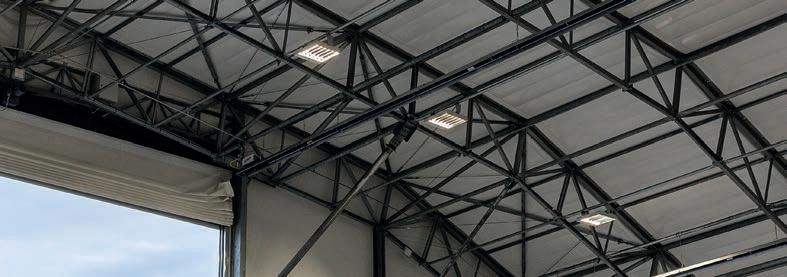

popular with design and image conscious consumers; but it’s also a very appealing option for installers too. It’s simple to set up – music to the ears of most electrical contractors – and ideal for fast-paced projects or retrofitting into existing spaces.
Most LED strip lights have an adhesive backing, allowing them to be mounted instantly and directly onto clean, dry surfaces without the need for brackets or screws. Once in place, the strip is cut to length at marked intervals and connected using plug-and-play connectors or soldered joins, depending on the system. They are then ready to use.
In spaces where strips may be more visible, they can also be mounted with aluminium extrusion profiles for a more professional aesthetic. This too is quick and easy to do and also helps with heat dissipation, prolonging the life of the LEDs.
Versatile, fun and easy to install, it is clear to see why LED strip lighting has become a cornerstone of modern lighting design. From mood lighting in bathrooms to dynamic RGB displays in gaming rooms or entertainment venues, its flexibility and style-led appeal continue to drive demand.
Ansell Lighting, ansell-lighting.com





Bulkhead LED luminaires are suitable for a wide variety of applications, and while there are many options available, newer models offer a wealth of benefits that can make installation more straightforward. Peter Alexander, Head of Sales UK and Ireland at LEDVANCE, discusses what to look for when specifying a bulkhead.

Bulkheads are, by design, robust and durable. They primarily provide general lighting rather than a decorative solution, but this does not diminish the importance of considering different factors when specifying a bulkhead.
Given the need for bulkheads to be strong and offer longevity, it is wise to check IP and IK protection. These are clear indicators of what pressures and environments the fitting can withstand – and more importantly, operate safely within.
By choosing an IP rating of 65, you can be sure that the bulkhead offers the ability to withstand dust and water. This level of IP rating offers the highest level of dust protection, meaning it’s completely dust-tight. Regarding water, it’s protected against water jets from any direction.
This makes an IP65 bulkhead suitable for application even in arduous environments.
With regard to IK ratings, this scale represents a product’s resistance to external mechanical impacts. IK10 is the highest level, so specifying a Bulkhead at IK10 ensures it can withstand a significant impact without sustaining any damage.
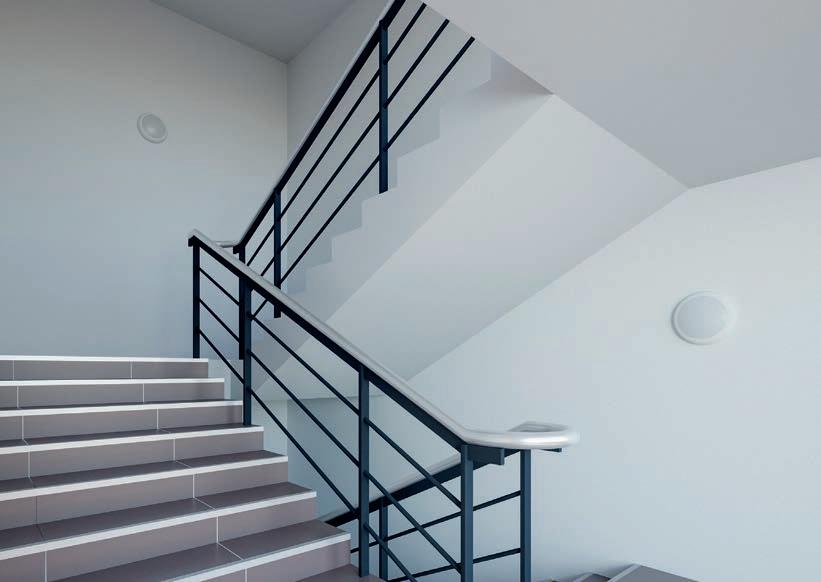
Bulkheads offer general lighting with a focus on function rather than form, Peter explains
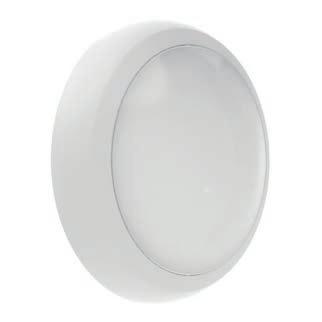
Future-proofing is also a key factor. Look for a plug and upgrade system, such as the one featured in the new Bulkhead Combo from LEDVANCE. This luminaire provides optional integration of sensors and/or emergency modules, to enhance functionality as needs and requirements change, whilst also making it a low-cost solution to the end user.
Longevity is an additional important consideration. As bulkheads offer general lighting with a focus on function rather than form, there will be little need to change the luminaires to match upgraded decor or design. With this in mind, a solution that can be fitted and remain in situ for a long time is ideal. A lifespan of 50,000 hours is the
Bulkhead luminaires displayed in the stairwell fire escape of an office building
perfect solution to deliver this, as not only does it reduce maintenance costs, but also time and resources, each of which limits carbon footprint.
Linked closely to this is performance and efficiency. As bulkheads can be on for long periods of time given the areas they illuminate, looking for high levels of efficiency is beneficial. Choosing a bulkhead of 120lm/W will deliver this. With regard to performance, specifying an ultra-low flicker solution will ensure a comfortably lit environment that ensures optimum occupant safety.
Finally, flexibility and customisation options are incredibly helpful. Being able to specify one solution with the ability to match the requirements to the application allow for an easy and adaptable installation.
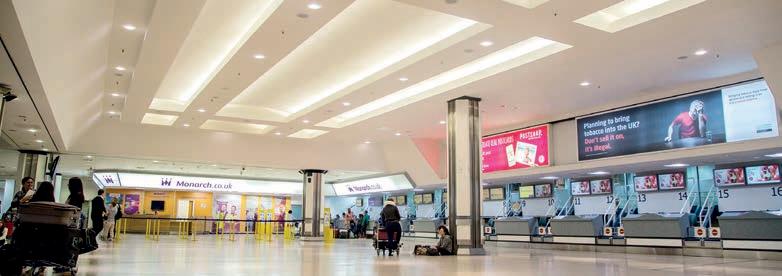

For example, the new LEDVANCE Bulkhead Combo features three selectable wattages – 9W, 13W and 16W – and three colour temperatures to choose from – 3000K, 4000K and 5700K. By offering this customisation, the bulkhead becomes an adaptable lighting innovation that meets the needs of a wide variety of installations. By understanding these considerations and factors for specifying a bulkhead, the most robust solution – that also delivers excellent performance – can easily be identified. And, by choosing an LED bulkhead from a trusted lighting manufacturer, peace of mind and reliability will also be assured.
ledvance.com



Timeless, clear design, high-quality technology
Available in two colour variants
‘Glow’, selectable ambient lighting
3 m to 16 m range
Electronically and mechanically adjustable range
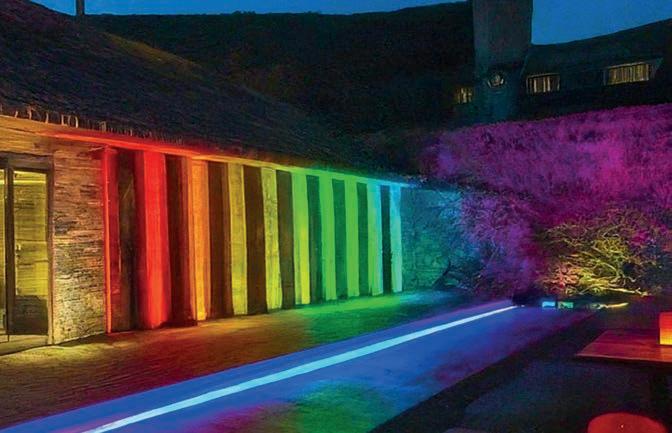

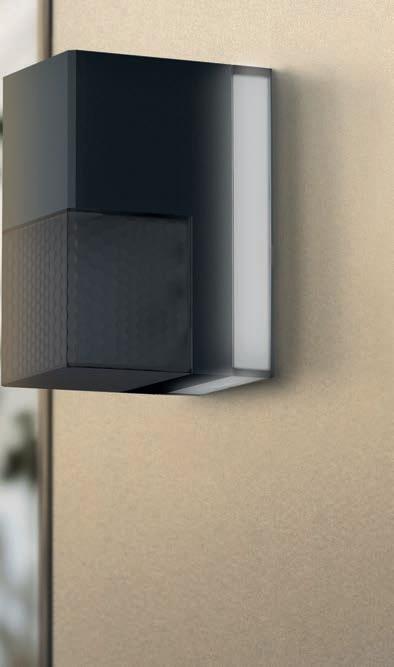





Indoor and Outdoor RGBW Lighting and Controls for Residential and Commercial installations.
Trade only Distribution by Aldous Systems in UK & Ireland

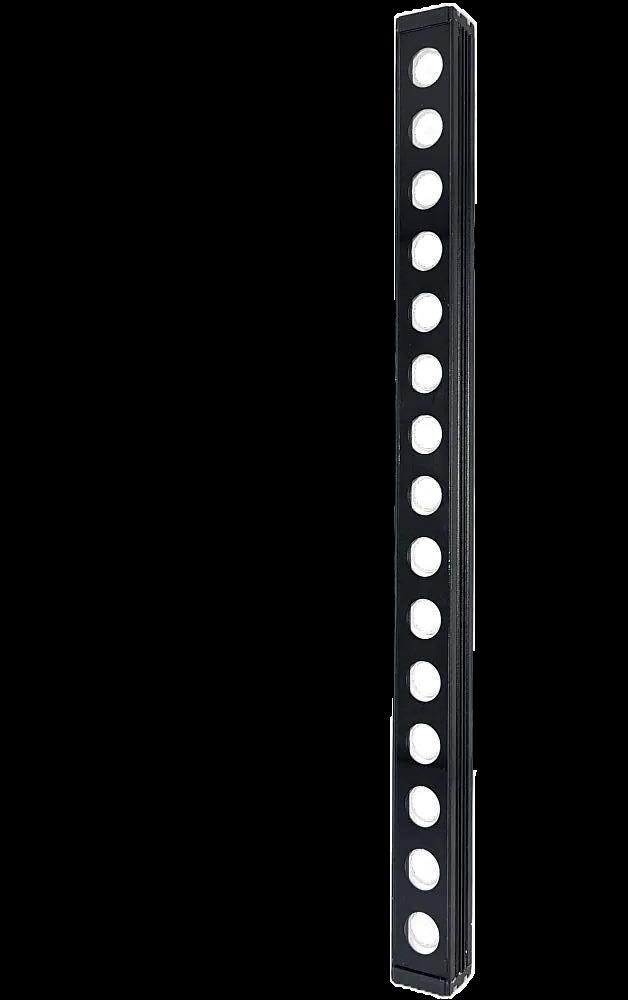
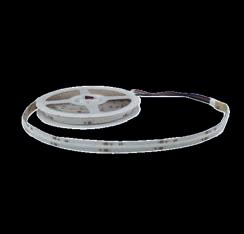

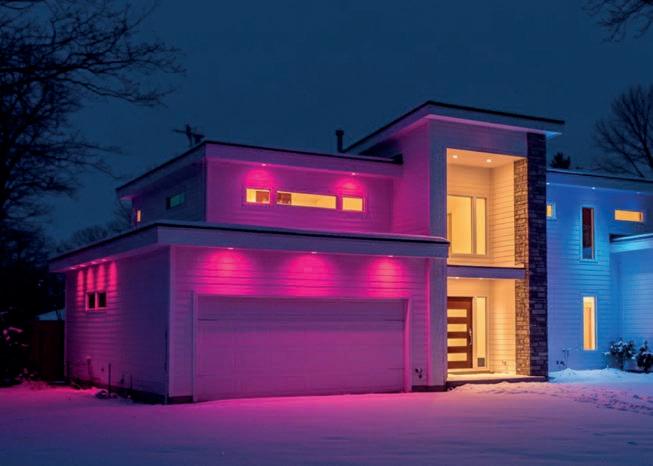
Paul Stearman of Greenlight Connexions assesses the future trends and best practices in LED lighting –and explains why a move towards sustainable illumination means that the future of LED lighting is bright.
The world of LED lighting has undergone a dramatic transformation since its introduction at the turn of the century, with LED technology emerging as the dominant force driving this evolution in recent years. LED lighting is no longer limited to simple lamps or basic luminaires; it now powers dynamic architectural displays, smart cities, energy efficient homes, sports stadiums and industry.
As environmental awareness and the demand for intelligent, flexible solutions grow, so do the technologies and best practices shaping this important sector. This article examines the latest trends, innovations, and proven strategies that define the LED lighting landscape.
Lighting controls have continually improved, and we should no longer suffer flicker effects
One of the most significant trends in LED lighting is the rapid adoption of smart lighting systems. Fuelled by the rise of the Internet of Things (IoT), modern LED solutions can now be seamlessly integrated into building automation systems, allowing for remote control, scheduling, and adaptive illumination based on occupancy or daylight. These ‘connected’ LED lighting solutions utilise sensors and wireless communication to adjust brightness, duration, and colour temperature, optimising comfort and energy use in real-time.


Another notable trend is the increasing focus on Human Centric Lighting, which recognises the significant impact of light on human health and well-being. Advanced LED systems now offer tuneable white and dynamic colour-changing capabilities that mimic natural daylight cycles, supporting circadian rhythms and enhancing productivity, especially in workplaces, schools, and healthcare facilities.
In addition, the miniaturisation and design flexibility of LEDs are enabling creative applications in architecture and product design. Ultra thin panels, flexible strip lights, and custom fixtures are opening new possibilities for dramatic accent lighting, immersive displays, and visually engaging environments both indoors and out.
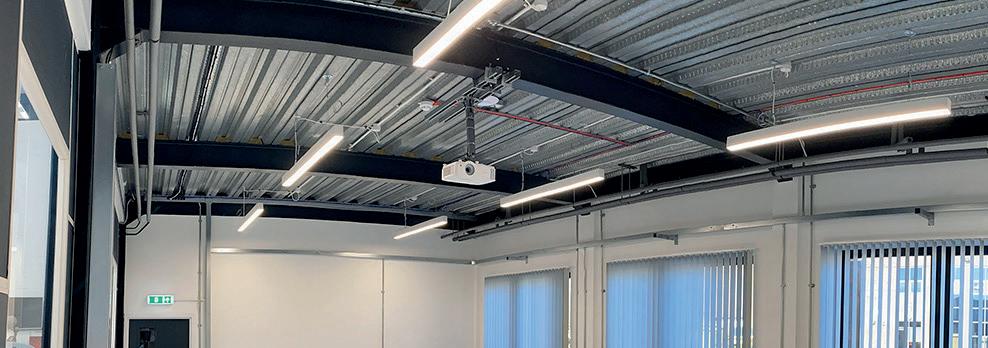
lighting
At the centre of LED lighting’s success is continuing technological advancement. The latest LEDs are more efficient, durable, and versatile than ever before. Key innovations include:
• Chip-on-Board (COB) and Surface-Mount Device (SMD) LEDs: These configurations offer higher light output, improved heat dissipation, and more uniform illumination, making them ideal for high-performance and architectural applications.
• Micro LEDs or Quantum Dot LEDs: These are tiny, high density LEDs that offer exceptional brightness and resolution. They are an emerging technology for displays and advanced lighting systems.


FITS RIGHT IN. FITS YOUR STANDARDS, EXCEEDS YOUR EXPECTATIONS.
FITS RIGHT IN. FITS YOUR STANDARDS, EXCEEDS YOUR EXPECTATIONS.
FITS RIGHT IN. FITS YOUR STANDARDS, EXCEEDS YOUR
FITS RIGHT IN. FITS YOUR STANDARDS, EXCEEDS YOUR
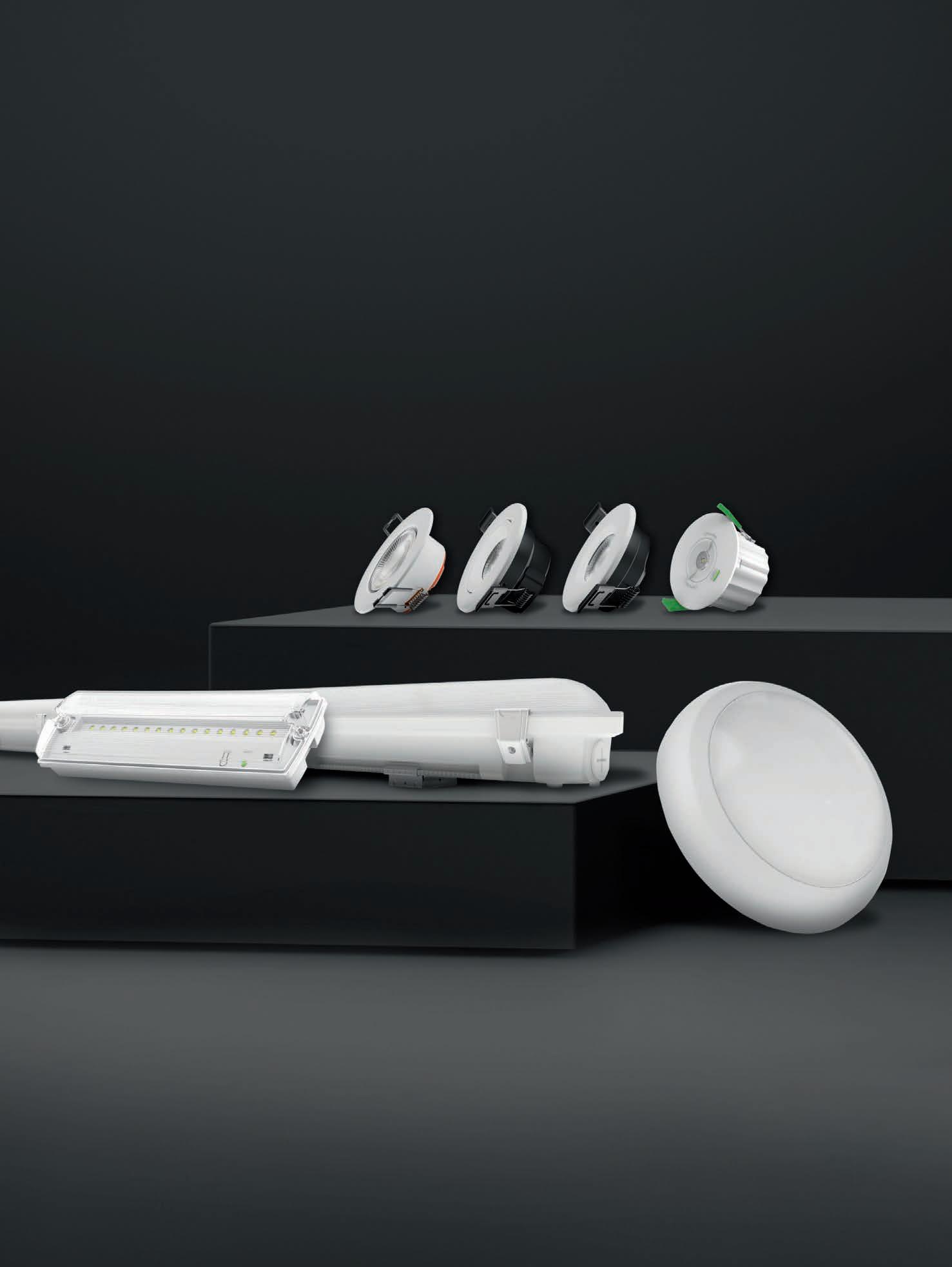
Our new dedicated UK range is tailored to meet British installation requirements. Every product is designed to make every installers job easier. A complete range that fits right into your daily work – because that‘s exactly what we built it for. For more information on this range visit www.ledvance.co.uk
Our new dedicated UK range is tailored to meet British installation requirements. Every product is designed to make every installers job easier. A complete range that fits right into your daily work – because that‘s exactly what we built it for. For more information on this range visit www.ledvance.co.uk
Our new dedicated UK range is tailored to meet British installation requirements. Every product is designed to make every installers job easier. A complete range that fits right into your daily work – because that‘s exactly what we built it for. For more information on this range visit www.ledvance.co.uk
Our new dedicated UK range is tailored to meet British installation requirements. Every product is designed to make every installers job easier. A complete range that fits right into your daily work – because that‘s exactly what we built it for. For more information on this range visit www.ledvance.co.uk

• Organic LEDs (OLEDs): OLED panels emit soft, diffuse light and can be fabricated in ultra-thin, flexible forms. This technology is being used for unique design-forward fixtures and displays. OLED Curtains are now available.
• Adaptive and responsive controls: Integration with AI and machine learning allows LED systems to ‘learn’ user preferences, analyse building usage patterns, and proactively adjust lighting for efficiency and comfort.
• UV-C and Far-UVC LEDs: UV-C LEDs provide germicidal illumination for disinfection in hospitals and public spaces, while emerging Far-UVC technology promises safe and continuous microbial control in occupied environments.
• Lighting controls have continually improved, and we should no longer suffer the impact of Temporal Lighting Artefacts (TLA), flicker and stroboscopic effects.
Many manufacturers are now prioritising eco-friendly designs, utilising recyclable materials, and minimising harmful substances such as lead and mercury. Life Cycle Assessments (LCA) are increasingly used to assess environmental impact from production through disposal, helping to drive more sustainable product choices.
Lighting efficacy has improved significantly, resulting in an amendment to the Energy Labelling. We now have a top Energy Labelling rating of A with an efficacy of over 210 Lm/W, and we are starting to see some luminaires achieve this.
A variety of best practices have emerged to maximise the benefits of LED lighting:
The future of LED lighting is bright, both literally and figuratively (pardon the pun). As the lighting industry moves towards even greater integration with smart technology, expect to see lighting systems that communicate with each other and with users’ devices, offering personalised, data-driven illumination. The integration of LEDs with wireless power transfer, Li-Fi (light-based data transmission), and advanced controls will open new avenues for connectivity and automation.
Modern LED solutions can be seamlessly integrated into building automation systems, allowing for adaptive illumination based on occupancy or daylight Connected’
• Laser diode LEDs: High power combined with narrow beams. This technology is used in projectors for display lighting. It is now being adopted in the automotive sector for headlamps, where it is approaching three times the brightness of LED headlamps.
As the tech inside LEDs shrinks and improves, designers are getting more freedom. We’re now seeing ultra-thin panels, flexible strips, and custom shapes that can wrap around surfaces or disappear into the background.
The shift to LED lighting is a cornerstone of global efforts to reduce energy consumption and cut carbon emissions. LEDs are up to 90% more efficient than traditional incandescent lamps and last tens of thousands of hours, resulting in significantly reduced waste and lower replacement costs. Advanced dimming and occupancy sensors further optimise usage, ensuring that lighting is provided only when and where it is needed.
• Comprehensive lighting audits: Assessing current lighting needs and infrastructure helps organisations identify the best LED solutions for each space, maximising ROI and user satisfaction.
• Holistic system integration: Successful LED projects integrate lighting with other building systems, such as HVAC and security, for enhanced efficiency and control.
• User centric design: Engaging with end-users during the design process ensures that lighting supports specific tasks, moods, and well-being, resulting in more effective environments.
For example, a large hospital in Toronto recently completed a comprehensive LED retrofit, integrating tuneable white lighting throughout patient rooms and common areas. The new system not only reduced energy use by over 65%, but also improved patient satisfaction and staff alertness due to the more natural, responsive lighting. Similarly, the City of Los Angeles replaced over 200,000 street lights with LED fixtures, resulting in annual energy savings of $8 million (£5.96m) and a reduction in carbon emissions equivalent to taking 14,000 cars off the road. The smart street lighting system enables remote monitoring and adaptive scheduling, further enhancing efficiency and safety.
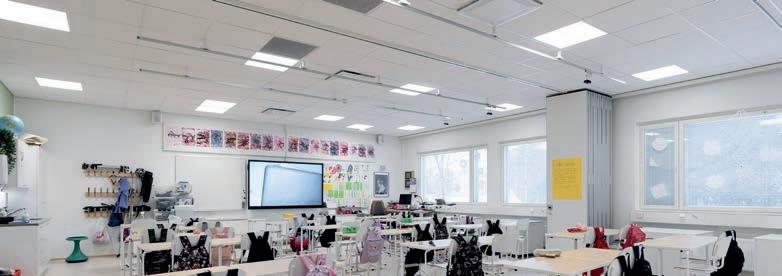
On the sustainability front, the next wave involves ‘circular economy’ approaches, where luminaires are designed for easy repair, upgrades, and recycling, further reducing environmental impact and resource use. Continued research in material science will yield even more efficient, longer-lasting LEDs, while breakthroughs in quantum dot and micro-LED technologies promise unprecedented colour quality and miniaturisation.
LED lighting stands at the junction of innovation, efficiency, and sustainability. The latest trends and technologies are transforming not only how we illuminate spaces, but also how we interact with our environments. By embracing best practices and staying in tune to emerging solutions, organisations and individuals can unlock the full potential of LED lighting, saving energy, enhancing well-being, and lighting the way to a brighter, greener future.
Greenlight Connexions, greenlightconnexions.co.uk
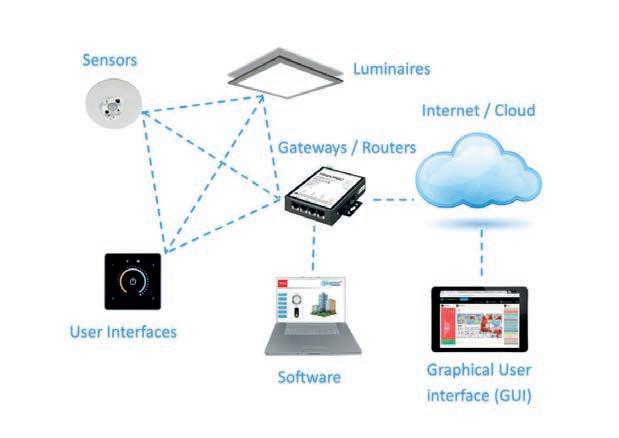


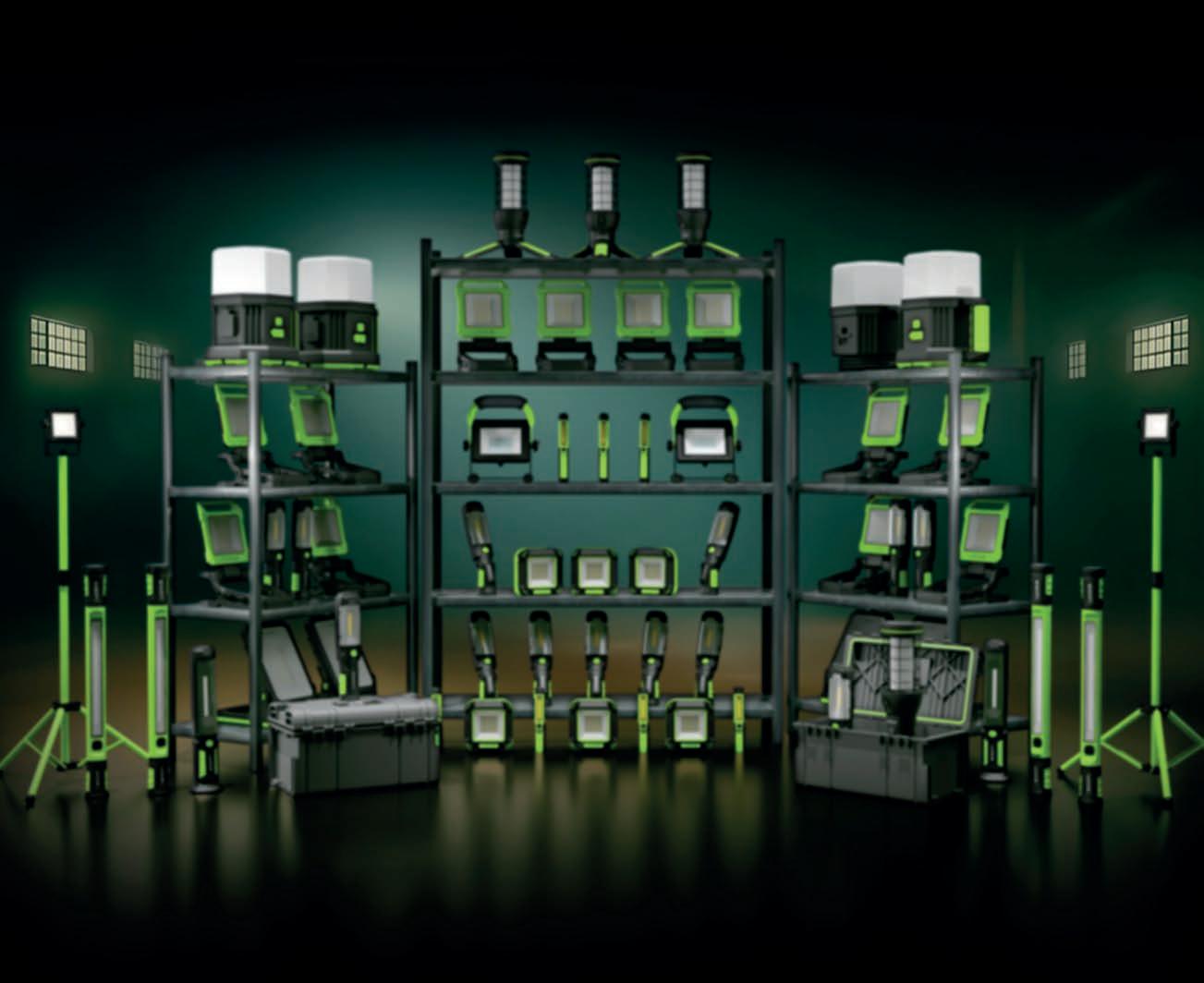
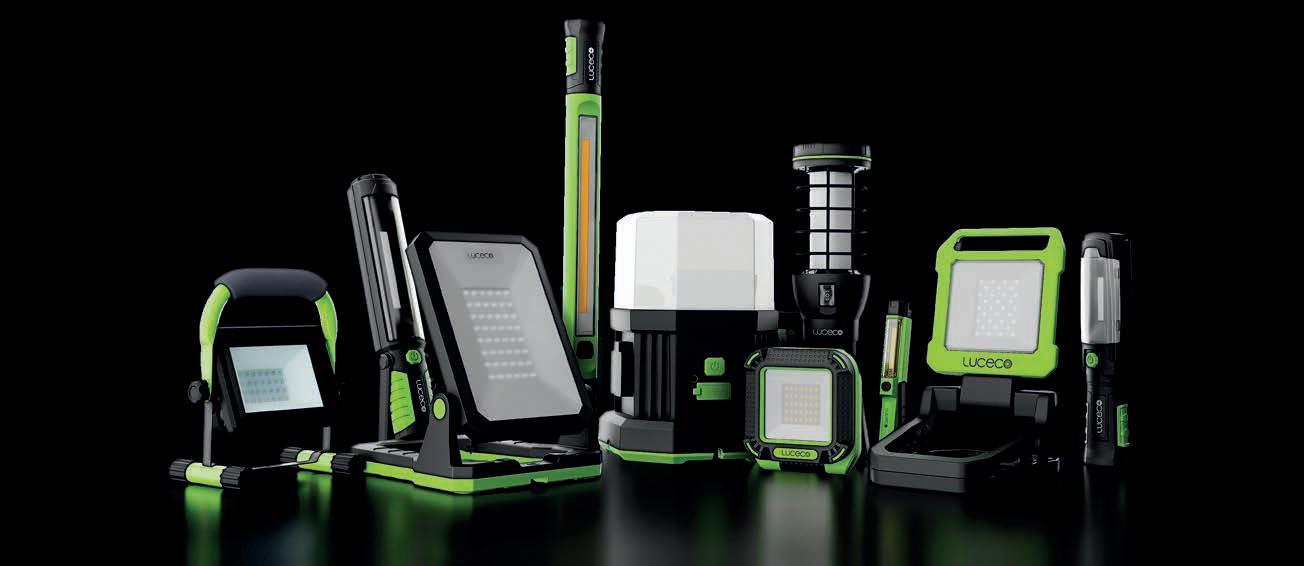
A round-up of how lighting innovations from Ovia have created a brand new ambience and illumination for the Jiu-Jitsu Academy sites in the West Midlands.
When Atos Jiu-Jitsu Gym, a jiu-jitsu academy based in the UK, set out to upgrade the lighting in two of its studios, the goal was clear: to create safe, functional, and visually striking environments for both training and welcoming members.
Ovia responded to the requirement by delivering two of its core products – Sprite 35W recessed downlights and Inceptor Duo up-and-down linear luminaires – both of which are ideal for electricians tackling commercial projects.
The installations were carried out at the organisation’s West Midlands-based academies located in Sutton Coldfield and Solihull, in the gyms’ matted training zones and reception areas, showcasing the installer-friendly design of Ovia’s lighting solutions.
“Installing the Ovia Sprite downlights was an absolute pleasure”, says electrician, James Papageorge (Live Sparks), who was tasked with the job. “The push-fit connectors streamlined the whole process, allowing for rapid and efficient wiring without compromising on reliability. This feature alone shaved valuable time off installation, and that’s a win for any tradesperson working on a tight schedule.”
James was equally impressed with the Sprite’s click-connect feature which made removal of the downlights a breeze. He continues, “This thoughtful design doesn’t just benefit the installer; it also proved to be a game-changer for the decorator.
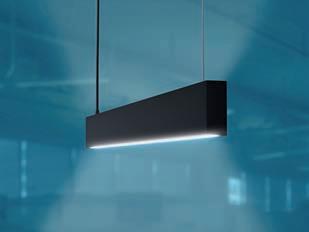
With the ability to detach the lights safely and quickly, the painter could touch up the ceiling without worrying about the live conductors. No fiddly disconnection, no risks – just straightforward access that kept the project moving smoothly.”
Above the matted areas, the Sprite downlights provided bright, even illumination tailored to the demands of a high-energy jiu-jitsu gym. Their recessed design ensured a clean, unobstructed finish, while delivering the lumen output needed for members to train effectively and safely. The reception area has also benefitted from the same sleek aesthetic and dependable performance, creating a professional first impression for visitors.
Ovia’s Sprite recessed LED downlights with CTA switch are IP54-rated aluminium downlights supplied with TRIAC dimmable drivers which are pre-wired with a Fast Fit Flow connector or three-in-one multi-function dimming option for quick and easier installation. There are four sizes available – 3”, 5”, 6” and 8” diameter –and a choice of 10W, 13W, 18W, 25W and 35W versions, to cover a wide range of installation types and requirements. They have a five-year warranty.
James also recommended Ovia’s Inceptor Duo for a particular area of the space. Duo is a sleek up-and-down dimmable linear luminaire and it provided the ideal lighting solution on the small mezzanine floor where the ceiling is low and light was needed to brighten up the area.
Inceptor Duo offers installers and their clients a complete custom dual lighting solution, and is perfect for accentuating design features both high and low. It is available in two lengths (1,200mm and 1,500mm) and two wattages (42W and 56W). There are three colour options to cover all décor requirements – black, grey and white. The luminaire features a dual CTA switch –OFF, cool white, warm white and day light, and the up and down lights can be controlled separately. Inceptor Duo is dimmable and emergency versions are available.


When purchasing a product like the Inceptor Duo, Ovia believes that customers aren’t just investing in quality, but they’re also investing in a sustainable future. The Inceptor Sustainability Promise drives the decisions and actions of Ovia as the company prioritises sustainability in all aspects of its business operations.
To comply with the Inceptor Sustainability Promise, products are tested to complete the TM66 form created by CIBSE. The testing involves gathering thorough sustainability evidence which supports the specifications of Ovia’s product ranges. Ovia is known for combining premium aesthetics and reliable performance, and for electricians, the Atos Jiu-Jitsu Gym project emphasises what sets Ovia apart: products that are designed with the installer in mind.
The Sprite recessed downlight was also implemented in the gym facilities

From the push-fit connectors and the click-connect functionality of the Sprite downlights to the adaptability of the Inceptor Duo linear luminaire, every element worked together to save time, reduce complexity and deliver a top-tier, sustainable result. The fact that the decorator could step in and complete their work without a problem only adds to the appeal – Ovia doesn’t just make the electricians job easier, it keeps the whole project on track.
Ovia, oviauk.com


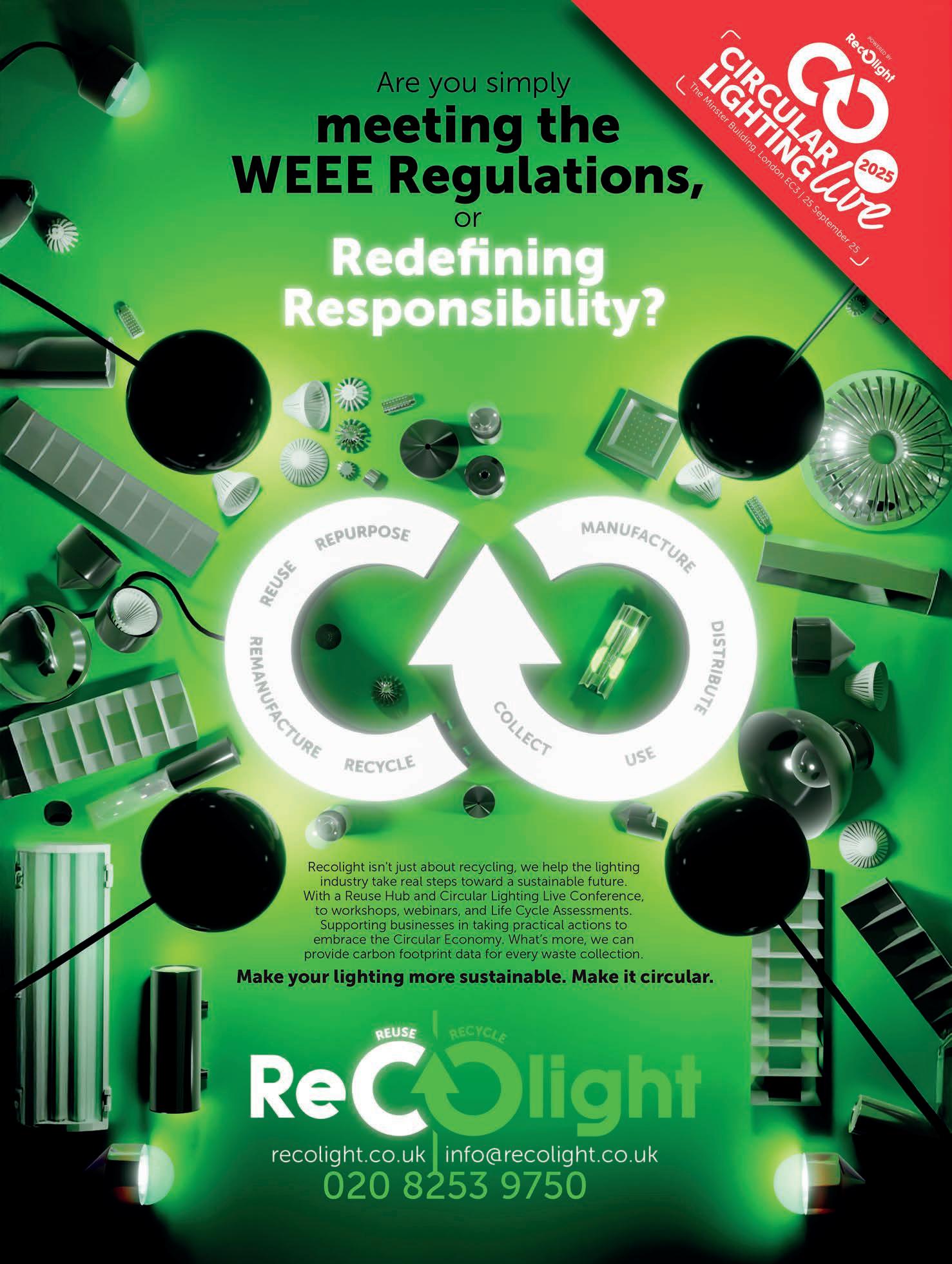
David Goddard, Head of UK Projects at LEDVANCE, looks at the role of lighting in relation to the circular economy, and explains how manufacturers are now designing luminaires with longevity in mind.

Lighting is playing an ever-increasingly important role in the circular economy.
Luminaires are no longer seen as part of the disposable society, thanks to a recognition that they can be upgraded and refurbished to extend their lifetime – and responsible manufacturers are integrating this approach into the design of luminaires from the outset, providing greater convenience to sustainability.
For many years, the lighting industry faced the challenge of reducing electronic waste. The barrier to achieving this was the limited lifespan that traditional light sources, and even early generation LEDs, offered. To address this, responsible manufacturers have adopted manufacturing practices that enable luminaires to be part of the circular economy.
At its heart, the circular economy is a model of production and consumption that involves reusing, repairing, and refurbishing existing products for as long as possible.
The

The lifecycle of products is subsequently extended and is a move away from the linear economic model society had become reliant on. The unsustainable linear model is one which involves large quantities of cheap, and therefore rapidly disposable, products. These are never recycled or upgraded and ultimately end up being sent to landfill on an all too frequent basis.
One example of the circular economy in practice is LEDVANCE’s Everloop approach. This principle enables the replacement of individual light sources and drivers in a convenient way, rather than having to replace luminaires in their entirety. The purpose behind Everloop is that it is integrated into the LED from the offset, allowing for the straightforward upgrade with new drivers and new LED light sources at any time. This means the luminaires have an almost unlimited lifespan.
The ease of replacement is key to the success of this sustainability practice. Having the ability to change the driver and light source embedded into the luminaire offers a convenient choice for many across the industry. This includes installers, planners, and facilities managers, among others, wanting to secure sustainable efficiency of industrial and office applications, as well as public buildings.
The Everloop approach is one way that LEDVANCE is contributing to the EU’s plan to reduce electronic waste. As well as meeting legislative requirements and targets, it also represents how lighting manufacturers are demonstrating efforts and measures that go above and beyond to address sustainability matters.
There are many reasons why focusing on the reduction of electronic waste is crucial. Firstly, the re-use of existing products slows down the use of natural resources and raw materials. This means a reduction in landscape and habitat disruption, as materials do not need to be mined.
A circular economy further protects the natural environment by lowering the


amount of waste that is sent to landfill, or disposed of through burning. Figures from the World Resources Institute show that each year, 300 million tonnes of plastic waste is produced globally. This is in addition to 54 million tonnes of electronic waste. Designing products that can be used for much longer will reduce waste levels, and therefore pressure on the environment.
Adding to this, creating more efficient and sustainable products from the beginning of its lifecycle helps to lower energy and resource consumption. This is because, according to research published by the European Parliament, it is estimated that more than 80% of a product’s environmental impact is determined during the design phase.
To put this into context, data shows that around 45% of global greenhouse gas comes from product use and manufacturing. Implementing circular economy strategies that reduce this need to keep producing more and more will significantly lower greenhouse gas emissions. This has the ability to reduce, and potentially reverse, some of the negative implications of climate change.
The circular economy also secures benefits that go beyond the individual products themselves. A reduction in the number of new products also lowers the associated packaging that needs to be disposed of. By upgrading the products that are in situ, there is less packaging for the replacement products – only what is needed to transport and store them safely. This in turn lowers the amount of waste, that in too many cases is still non-recyclable, that will be sent to landfill.
The role of lighting in the circular economy is clear to see, especially when there is an easy solution to challenging the outdated and detrimental linear model. The move to refurbishing and upgrading luminaires is becoming increasingly commonplace, and LEDVANCE is proud to be part of this movement.

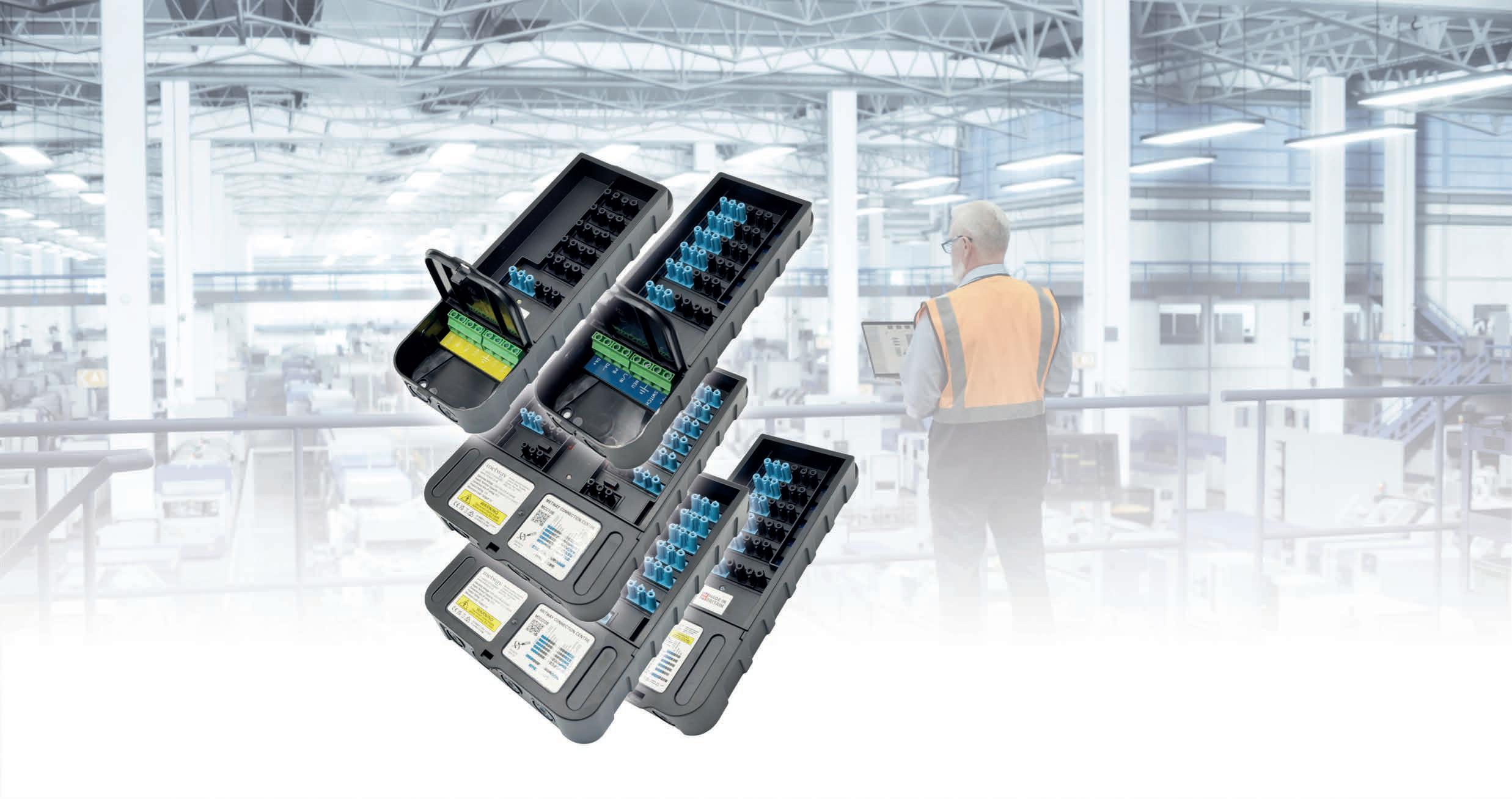
MCC5S
• 5 x 4 Pole
Luminaire Outputs
• 1 x PIR Output
• Presence Detection
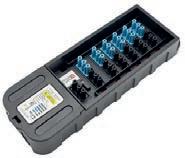
MCC5B
• 5 x 6 Pole
Luminaire Outputs
• 1 x PIR Output
• 3 Pole Switch Ouput


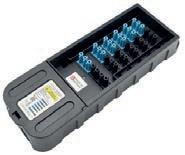
MDCC10D
• Dual Supply
• 10 (5X2) 6 Pole
Luminaire Outputs
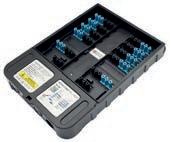
• Dedicated Switch Output
MCC8B
• 8 x 6 Pole
Luminaire Outputs
• 2 x PIR Output
• 3 Pole Switch Ouput

MCC5B-7
• 5 x 6 Pole
Luminaire Outputs
• 1 x 7 Pole PIR Output
• Presence/Absence detection
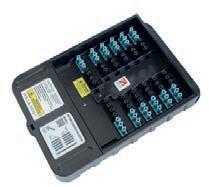
MCC10D-7
• Dual Supply
• 10 (5X2) 6 Pole
Luminaire Outputs
• Dedicated 7 Pole PIR Output

MCC10B-7
• 10 x 6 Pole
Luminaire Outputs
• 2 x 7 Pole PIR Output
• Presence/Absence detection
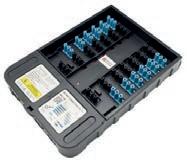

MCC10B
• 10 x 6 Pole
Luminaire Outputs
• 2 x PIR Output
• 3 Pole Switch Ouput
MCC12B
• 12 x 6 Pole
Luminaire Outputs
• 2 X 3 Pole DALI sensor connection
• 125mADALI power supply
• Option for Bluetooth Dali module installation

® Scan the QR Code for further information
Metway Electrical Industries Limited, Barrie House, 18 North Street, Portslade, East Sussex, BN41 1DG


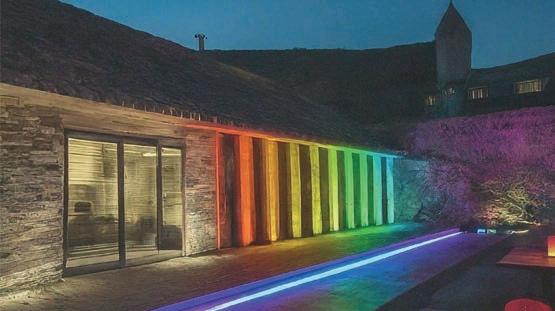
Here, ECN looks at how and why low voltage lighting from Aldous Systems is proving increasingly popular, along with the ways electrical contractors can take advantage of this newfound demand.
For years, low voltage lighting was mostly relegated to accent roles, such as under-cabinet glows, toe-kick illumination, and outdoor party lighting. But that’s changing quickly.
As LED technology continues to evolve, Aldous Systems is witnessing a significant shift: low voltage lighting is emerging as a primary lighting method for modern spaces, with tuneable white and full RGBW colour options leading the charge. This transformation is being driven by growing demand for personalised and dynamic lighting. Homeowners and designers alike want spaces that can shift from warm to cool white on demand – or even flood with vibrant colour for entertainment and ambience. Today’s low voltage fixtures, like the RGBW recessed downlights and LED strips from Axion Lighting, deliver just that, with the added benefit of energy efficiency and easier installation.
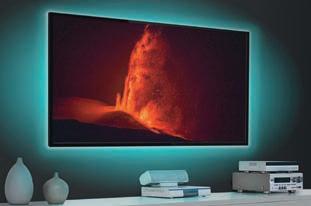
We’ve reached a new era of lighting design that blurs the line between form and function
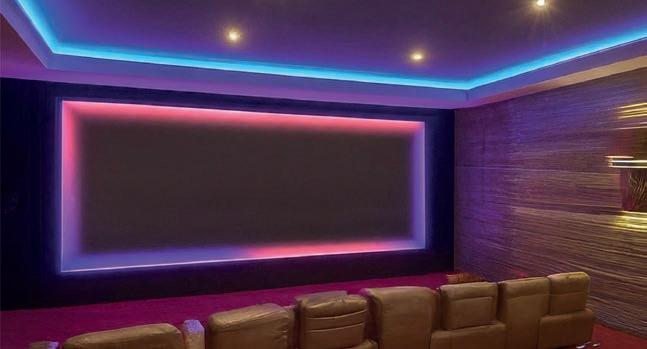
And here’s the real game-changer: the barrier to entry is lower than ever. Electricians and low voltage contractors –those traditionally focused on AV or IT – are now finding themselves installing lighting in kitchens, living rooms, and entire homes. Thanks to simplified wiring, smart controls, and lower voltage requirements, these systems are faster to deploy and require less infrastructure than traditional line voltage setups.
Axion Lighting is at the forefront of this shift; offering tuneable whites and rich, full-spectrum colour in a form factor sleek enough for main living spaces, but simple enough to install in almost any ceiling. Paired with Axion’s versatile LED strip lighting, integrators can create continuous


lines of light, cove effects, and dynamic accent features – all with the same RGBW control platform.
The result is a new era of lighting design that blurs the line between form and function, accent and main lighting. Low voltage no longer means low impact – it means high performance, high efficiency, and high design flexibility.
As the demand for smart, colour-capable lighting grows, expect to see more professionals embracing this trend. With companies like Axion Lighting and Aldous Systems leading the way, the future of illumination is not just bright – it’s colourful, controllable, and customisable.
Aldous Systems, aldoussystems.co.uk

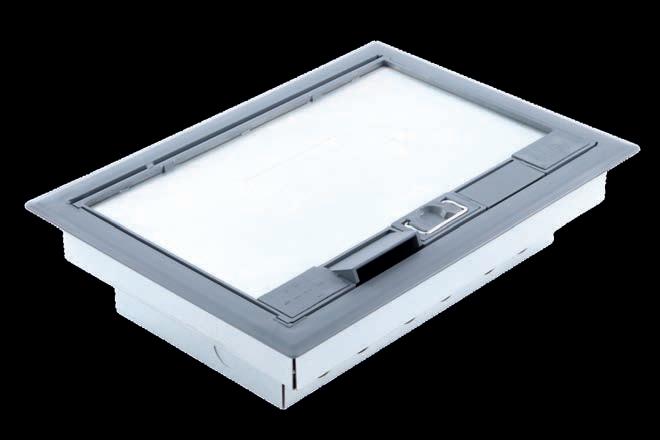

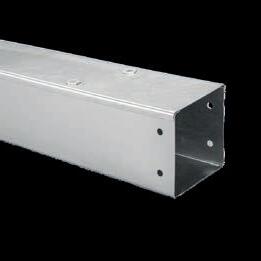



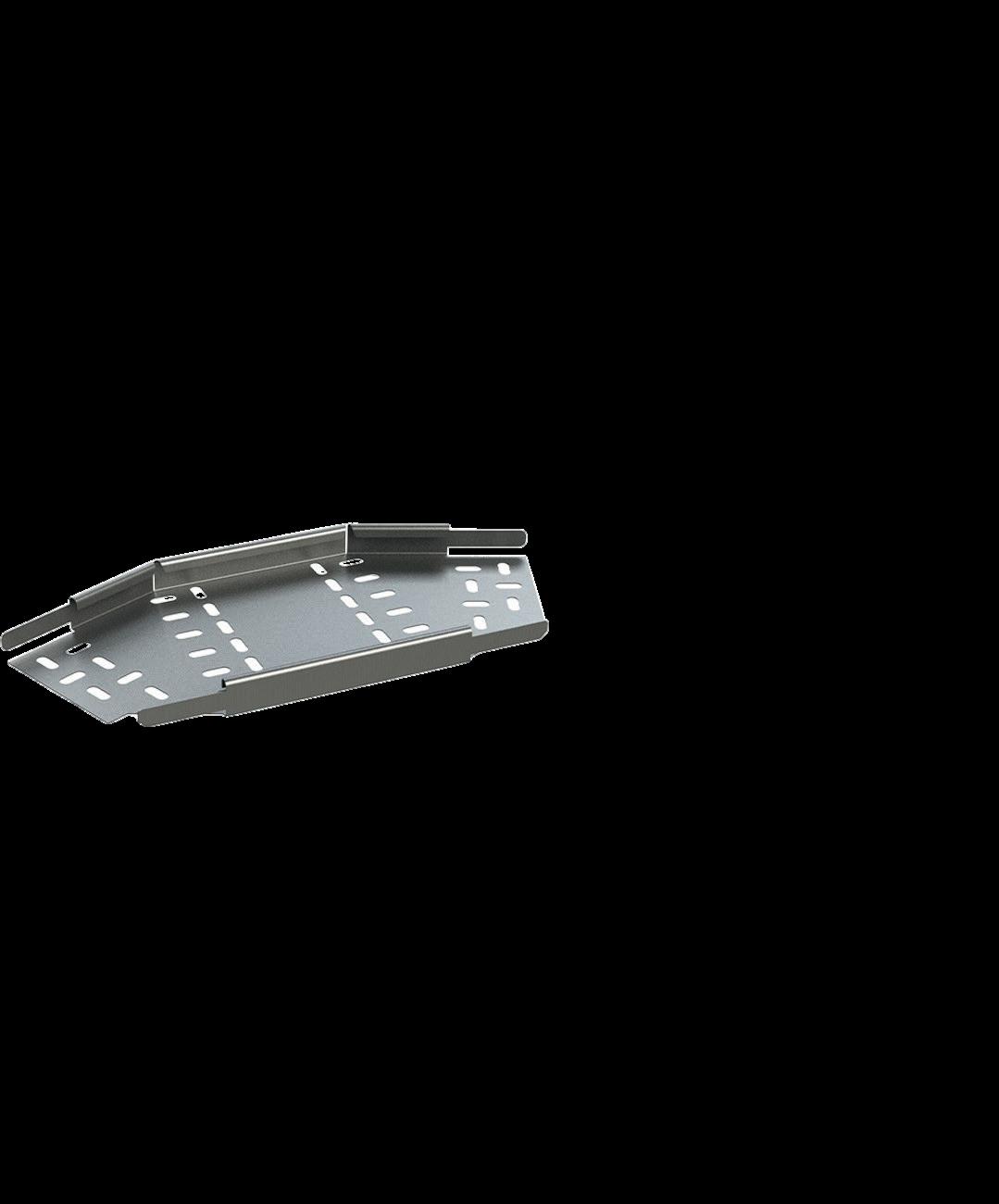
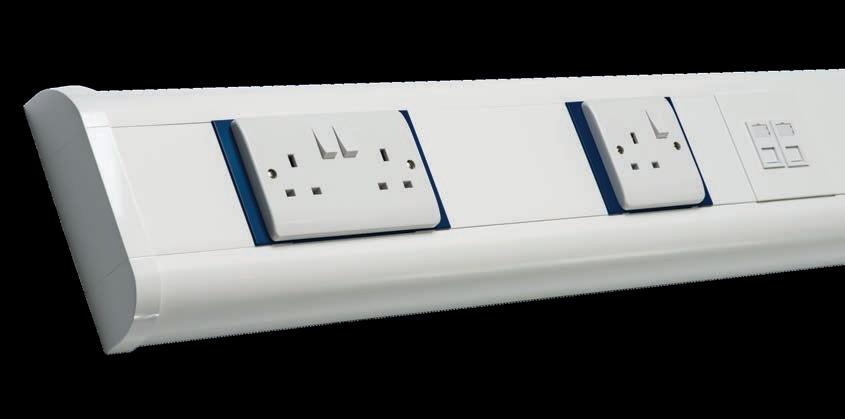
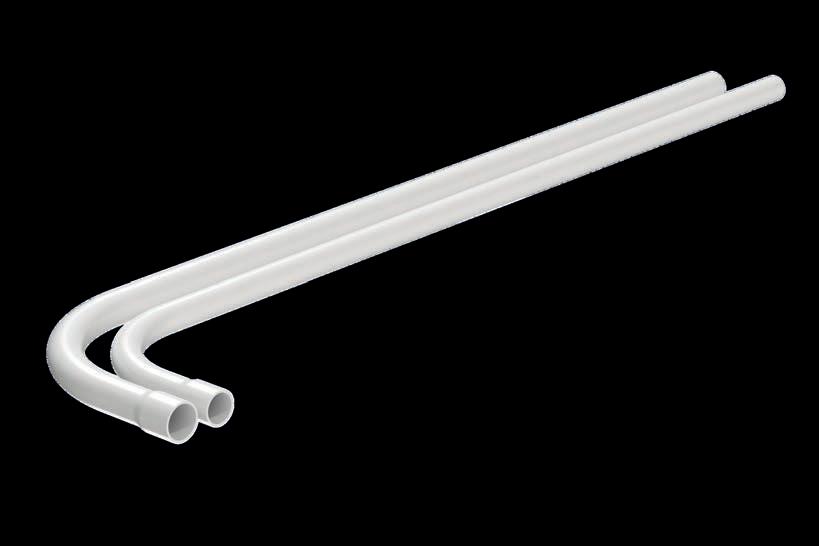
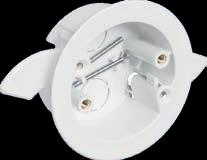


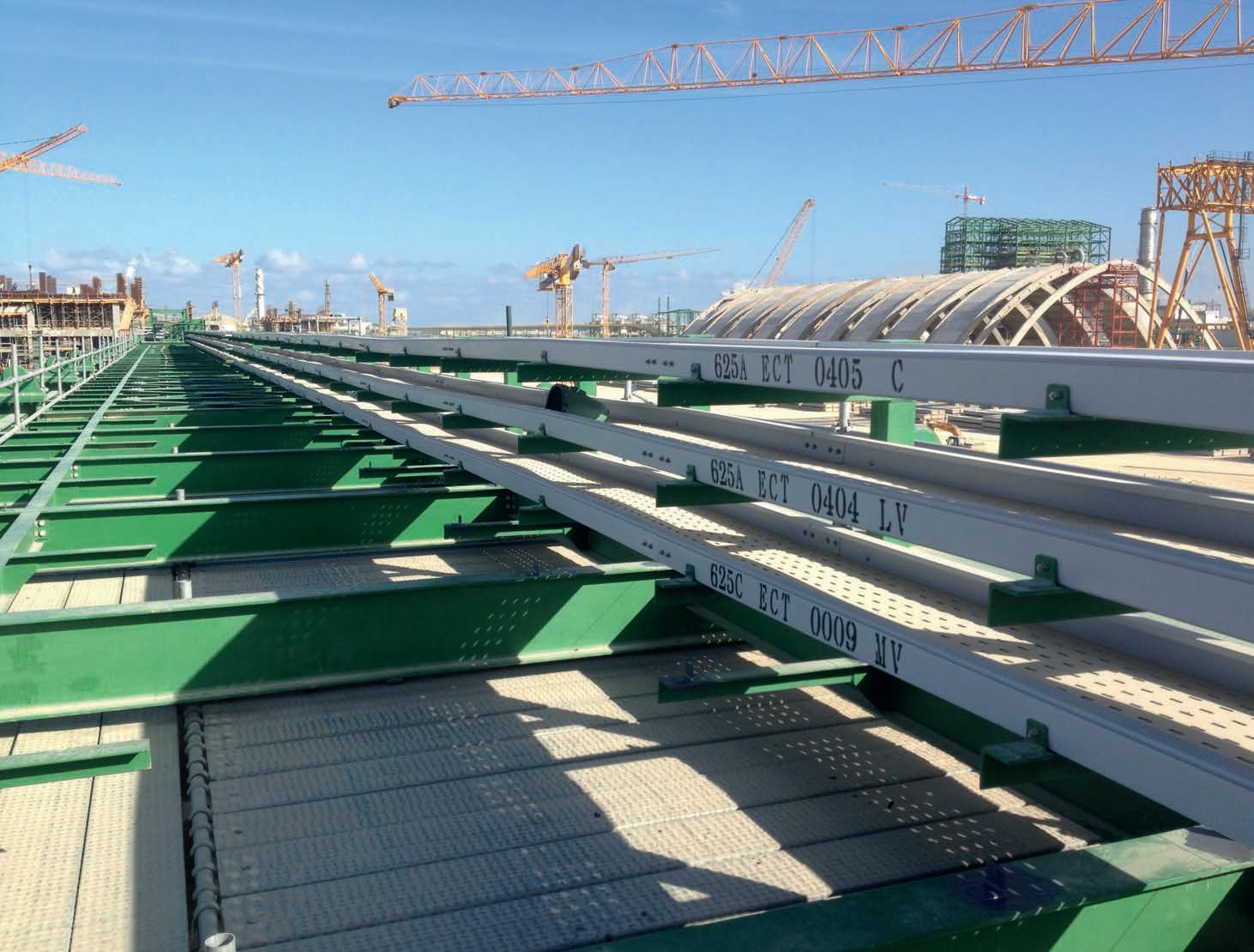
Martin Russell, Group Product Manager at Marshall-Tufflex, provides guidance on cable tray specification and installation, including on materials, loading capacities and fire safety requirements.
Cable tray has many benefits as a cable management solution.
It is simple to install and there are a wide range of options available to meet every installation requirement, with leading manufacturers offering a diverse portfolio of components
such as bends, risers, tee pieces and crosses. Cable tray also makes it easy to add or remove cables as required and the perforated structure reduces overheating by allowing airflow through it. However, it is important that the correct products are chosen to ensure the cable management performs as intended over the life of the installation and that it achieves compliance with the IET Wiring Regulations.
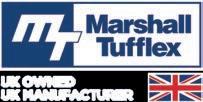
Among the first considerations is the cable tray material. Typically made from pre-galvanised steel, metal cable tray is highly versatile, with options ranging from light to heavy gauge tray. It is strong and simple to install – especially if systems that interconnect and bolt together without
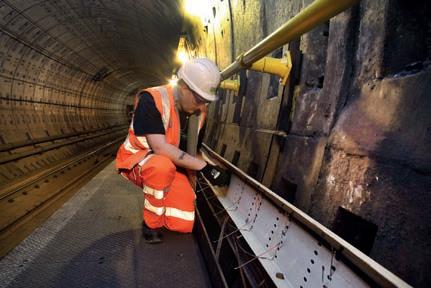

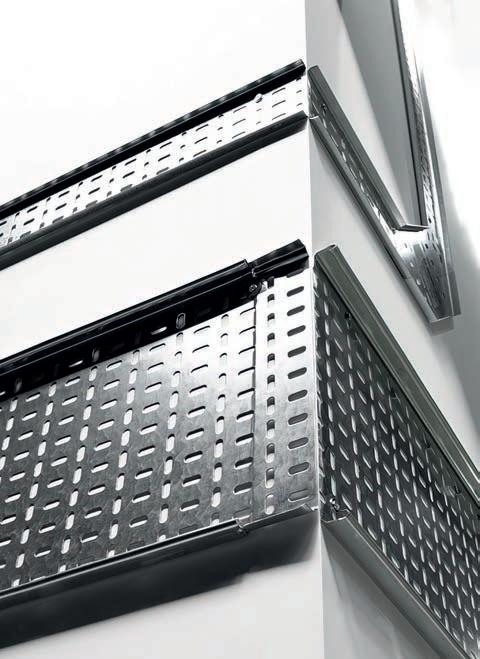
the need for separate couplers are chosen – and can be used for a wide variety of interior applications including data centres, warehouses and commercial buildings.
PVC cable tray is lightweight, making it easy to handle and install, and is ideal for less demanding applications, as well as those where metal cable tray cannot be used due to the risk of corrosion. This includes water treatment plants and certain types of manufacturing with high levels of humidity.
Light and easy to handle, Glass Reinforced Polyester (GRP) products are ideally suited for projects where the cable management will be installed outdoors or exposed to more harsh conditions. This includes rail, road, marine, industrial and petrochemical applications. GRP products are highly corrosion and UV resistant, can withstand contact with many common chemicals and have an extremely wide operating temperature range of – 80°C and 130°C. GRP also has excellent fire performance and is classified as a low smoke zero halogen (LS0H) material.
Another consideration when working on rail projects is looking for a supplier that is verified by the Railway Industry Supplier Qualification Scheme (RISQS), which provides an independent assessment of a supplier’s products and services on a range of factors.
The reality is that too often cable management systems are inadvertently overloaded with cables, either during the initial installation or when additional cables are added, increasing the risk of failure. Therefore, it is essential for contractors to ensure that the specified cable tray can support the installed cables, especially where heavier armoured cable is being used.
To select the correct product, installers should calculate the number and weight of the cables using information from the cable manufacturers and compare this to the safe working load of the cable tray, again available from the manufacturer. It is also important to consider if additional cables are likely to be added in the future. If so, it may be advisable to choose products with a higher loading capacity to future-proof the installation and reduce the long-term costs.
The choice and installation of cable management systems plays a crucial role in fire safety and ensuring compliance with the related requirements of the 18th Edition of the Wiring Regulations. Where cable management systems fail due to the heat of a fire, the falling and fallen cables present a serious hazard to those
evacuating, as well as firefighters moving through the building. Regulation 521.10.202 of the Wiring Regulations states that all cables should be adequately supported using non-combustible fixings to prevent premature collapse in the event of a fire.
Steel cable trays, due to the high melting point of the material, are an ideal way of meeting this requirement, providing the cable tray is fixed to a fire-resistant element of the building’s fabric. Where products with a lower melting point are used, such as PVC, the cables must be securely fixed to the structure of the building using fixings that will not disintegrate in fire.
BEAMA has produced guidance on this topic, which is referenced by the IET Wiring Regulations. This document provides specific guidelines on the maximum distances the cables can move in the event of a failure of the containment. Installers should refer to this guidance to ensure the installation is fully compliant.
Cable tray offers a versatile and simple solution to cable management in a wide range of scenarios, but the correct specification and installation is essential for the longevity, safety and compliance of this element of the electrical installation.
Marshall-Tufflex, marshall-tufflex.com
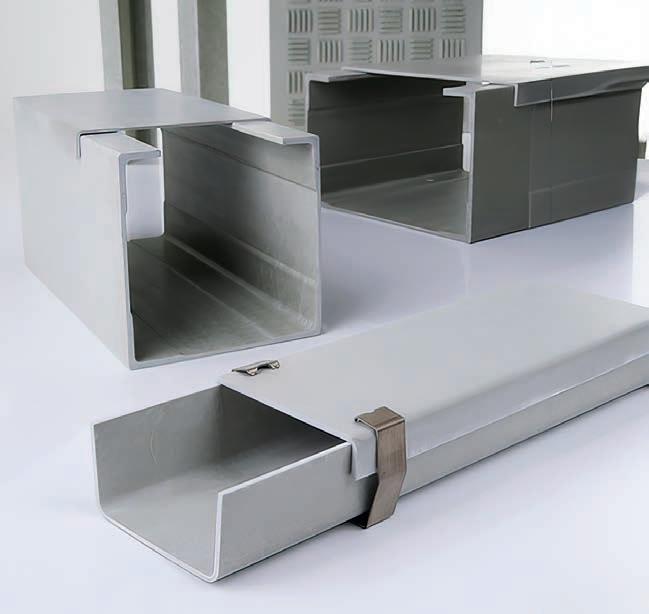

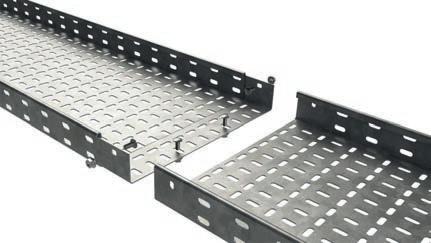



In the fast-paced world of electrical installation, precision, safety, and efficiency are paramount. While much of the spotlight is placed on conductors, connectors, and smart controls, one humble yet essential product continues to hold the line – literally.
Cable clips, though often overlooked, play a vital role in the safety, organisation, and longevity of wiring systems across residential, commercial, and industrial environments. They are one of the simplest but most effective tools in a contractor’s cable management toolkit.
Cable clips are small, secure fasteners, designed to secure cables neatly to walls, ceilings, or other surfaces. Available in various sizes, shapes, and materials, they prevent wires from sagging, tangling, or being damaged due to environmental stress or mechanical strain. From simple plastic nail clips to advanced stainless steel variants with integrated insulation, cable clips are fundamental to maintaining clean and compliant installations.
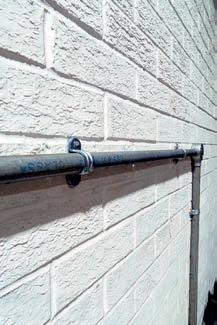
BS 7671 (the IET Wiring Regulations) and recent updates to fire safety regulations have brought renewed focus on cable fixing. Particularly in escape routes, non-metallic clips are no longer acceptable on their own. Installers must now use fire-resistant fixings that prevent cables from collapsing during a fire – a detail that has driven increased demand for metal and hybrid cable clips. Manufacturers have responded by developing clips with fire-rated anchors and materials tested to withstand extreme temperatures. For example, spring steel saddle clips or metal P-clips are now commonplace in commercial and public
sector installations.
Selecting the right cable clip depends on several factors:
• Cable type and diameter
• Mounting surface (plasterboard, brick, steel, etc.)
• Indoor vs outdoor exposure
• Compliance with fire and building codes
• Aesthetic or visibility considerations.
Unicrimp offers a comprehensive portfolio of cable accessory products, which includes an extensive range of cable clips –indispensable elements in any professional electrician’s toolkit. Q-Crimp is a range of durable and hardwearing plastic cable clips and Q-Fire a range of 18th Edition compliant fire-rated metal cable clips. The Q-Crimp cable clips are perfect for organising and securing cables to fixed surfaces like walls, floors, or ceilings. Constructed from durable and hardwearing plastic, they include a cable-holding element that typically requires a nail or fixing to attach it to the desired surface. Features include low-temperature flexibility, stress crack resistance, long nails for good pull out value and a self-grip design, making them versatile for any wiring project.
They are available in multiple sizes and colours – such as clear, white, grey, and black – and are packaged in quantities of 100. Unicrimp’s Q-Crimp cable clips are also supplied in two handy tradesman tub options –one containing 400 x 1mm T&E Clips and 400 x 2.5mm T&E Clips, and the other containing 200 x 1-2.5mm Metal Clips, 400 x 1.5mm T&E Clips and 400 x 2.5mm T&E Clips. These robust tradesman tubs feature a resealable plastic lid and carry handle, and the tub itself is manufactured from recycled material.
Self-adhesive cable clips have recently been added to the Q-Crimp cable clips portfolio. These clips are easy to attach, while providing a strong, resistant hold thanks to the 3M adhesive backing. They are ideal for use on metal surfaces, engineering bricks, plastics, and any flat, clean surface. They eliminate


the need for drilling or nailing, thus saving valuable time on site, and their use minimises dust, sparks, vibrations and noise for a safer and more efficient working environment.
Self-adhesive clips are perfect for situations where drilling holes on surfaces is not an option. They will adhere to a wide range of clean flat surfaces, including steel, UPVC, aluminum, glass, RSJs, racking, and single-skin structures.
The 18th Edition Wiring Regulations stipulate that cable support systems must be constructed with materials that will withstand premature collapse caused by direct exposure to heat. There are no applications excluded – trunking, conduit and cabling fixed to surfaces of the building or attached to cable support systems must all have fire-resistant supports in place.
The Q-Fire fire-rated T&E cable clips are made from zinc-plated carbon steel and come in two sizes – 1-2.5mm and 4-6mm. They are available in red, white, grey and galvanised steel, and in a choice of uncoated or with a grey PPA LSF coating. This offers long-term protection for the metal clips and additional safeguarding for the cable during and after the installation.
Cable clips may be small, but their impact on installation quality, safety, and regulatory compliance is enormous. As the industry continues to evolve with smarter buildings and tighter standards, the demand for better cable management solutions will only grow. With such an extensive offer available, Unicrimp offers installers access to the widest possible range of fixing solutions that are suitable for a variety of applications and environments, and will help them comply with the latest wiring regulations.
Unicrimp, unicrimp.com



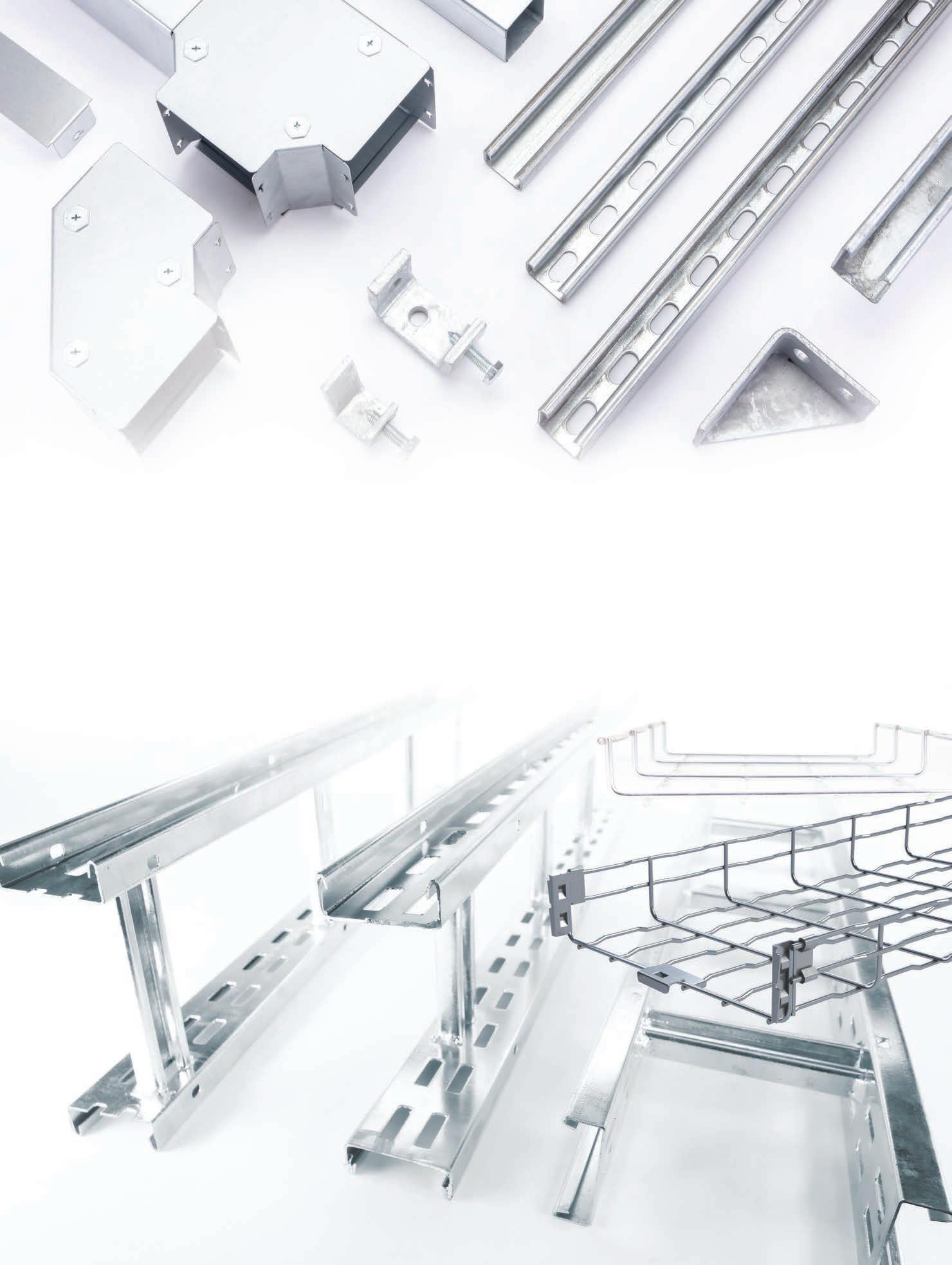

ECN takes an in-depth look at the brand new Meter Box Hockey Sticks from cable management manufacturer, Marshall-Tufflex
Marshall-Tufflex, a leading UK cable management manufacturer, has launched a new range of durable and reliable Meter Box Hockey Sticks that allow for the safe run of electrical cables from the cable duct to the meter box.
Made from high-quality PVC-U, this new product is compatible with most domestic electric meter boxes. Suitable for both interior and exterior applications, Marshall-Tufflex’s new Meter Box Hockey Sticks are high-quality and provide more choice to the electrical market. The Meter Box Hockey Sticks are 1,450mm long and are available in two sizes: 38mm and 44mm to meet all needs and are manufactured to BS EN 61386-1/61386-21 standards.
Martin Russell, Group Product Manager at Marshall-Tufflex, comments, “High quality and reliable Meter Box Hockey Sticks are the latest addition to our extensive range of cable management products. It means electrical contractors can now select more from us – a trusted manufacturer – to get the job done. Our growing portfolio features metal trunking, cable ladders, cable trays, wire basket systems, and so much more.”
To find out more about Meter Box Hockey Sticks from Marshall-Tufflex, as well as the company’s portfolio and latest catalogues, visit the website below.
Marshall-Tufflex, marshall-tufflex.com
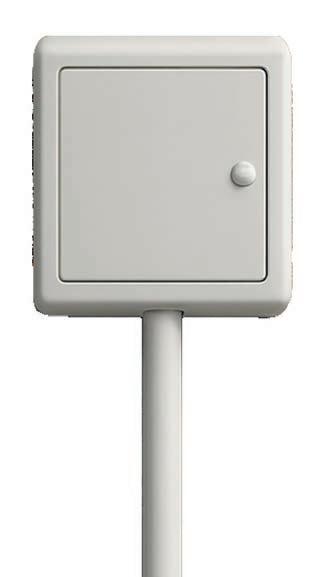

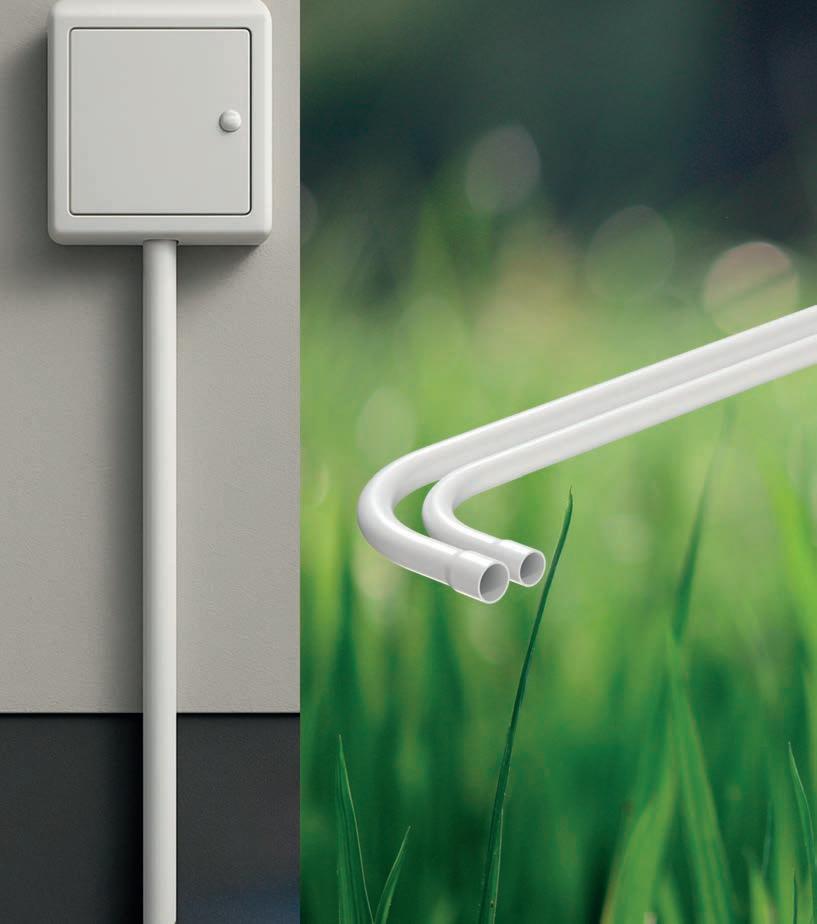

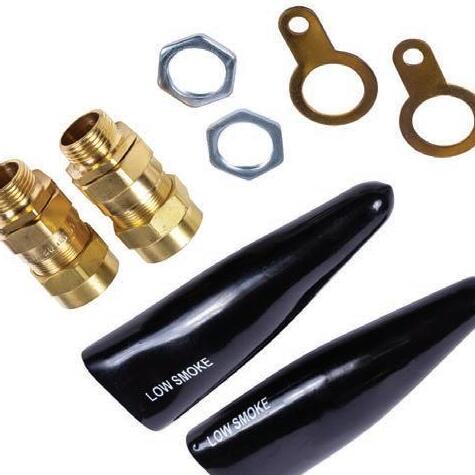

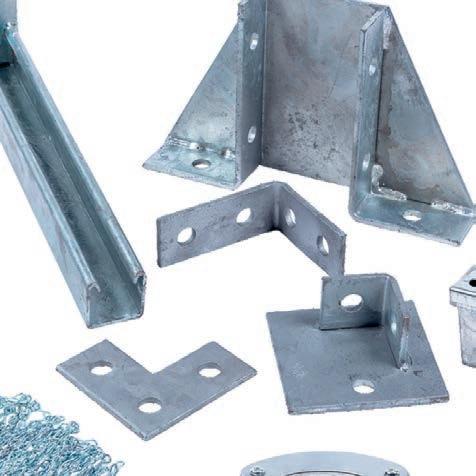
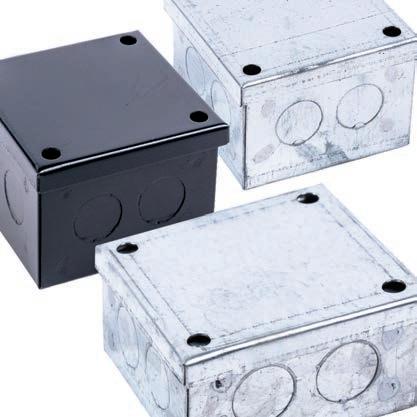

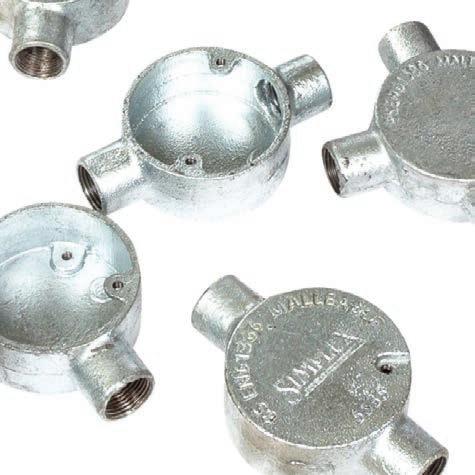

talks to ECN about careful cable management consideration.
It wasn’t that long ago that you’d find expensive cable management systems with cables installed, operational, and apparently secured using cheap cable ties rather than cable cleats. Thankfully, things have moved on a great deal since those dangerous days, but there are still plenty of pitfalls to beware of when specifying and installing cable management products.
From CMP Products’ perspective as a leading manufacturer of cable glands, cleats and accessories, we do have very specific areas of expertise within the cable management arena – namely the operational safety of the system once installed and the delivery of the peace of mind that it won’t cause untold damage in a short circuit situation.
It is worth nothing that any element of a cable management system needs to be carefully considered, and products selected and chosen wisely – whether it be a choice between cable ladder or tray; the depth
Ideal
of channel; the chosen product’s weight bearing capacity; the cable formation; corrosion resistant capabilities; etc. One wrong choice, or the selection of an unproven product made on price alone, could undermine an entire system and lead to costly maintenance, repairs, and possible catastrophic failure.
When it comes to cable cleats and working with them, CMP always aims to get across the key fact that their importance must never be underestimated. Cable cleats are safety critical products that need to be correctly specified to safely secure electrical cables not only during normal operating conditions, but also ensuring they are able to withstand extreme dynamic electromagnetic forces during a short circuit without sheath damage.
Effective cleating of cables by using a tested, proven product ensures the continuation of potentially vital electrical

supplies and prevents cables leaping out of their containment systems during a short circuit, which would pose a very real threat to the building’s integrity and the lives of those in the vicinity of the affected installation.
Put simply, for any electrical installation to be deemed safe, cables need to be protected and restrained by devices proven to withstand the forces the cables generate – especially during a short circuit. This is
Trust and testing are important considerations when specifying cable cleats
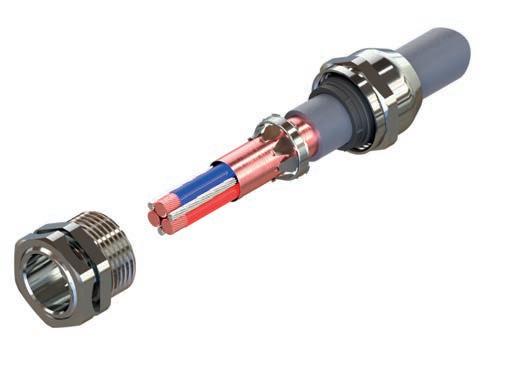













There are a variety of things to consider when specifying cable cleats, but two key points that could make all the difference are:
• Trust – There are lots of cable cleats out there and it’s fair to say they can look very similar and claim to have very similar attributes. Therefore, it’s important to specify with confidence. You’d think twice about buying an expensive new phone from an unknown telecoms manufacturer, so don’t do the same with cable cleats. Look at the company behind the product, along with its technical expertise and the post-sales support it offers. Where else have their cleats been used, and are any of the installations similar?
• Testing – Will the cable cleats you’re considering be up to the job? Some manufacturers will highlight the strength of their products based solely on a static mechanical tensile test. Unfortunately, this can be misleading as the forces applied in this type of test are applied in a slow and controlled manner, unlike in a short-circuit fault, where dynamic forces are applied almost instantaneously and oscillate in every direction. A short circuit test really is the only reliable way of knowing a cable cleat can withstand a specific set of fault conditions and is essential for anyone, anywhere to specify with confidence.
Trust and testing carry over into cable glands and accessories, where they really should be at the heart of every specification decision.
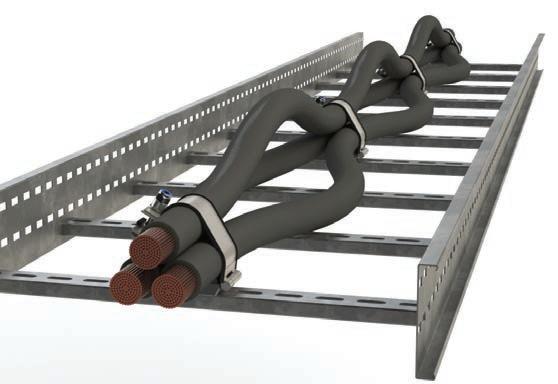
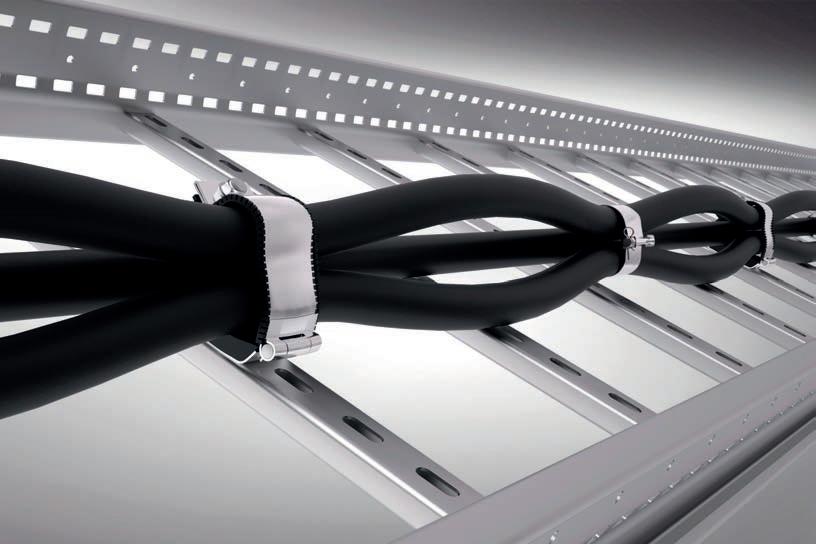
Also necessary for consideration across the cable management spectrum are the environment of the installation and fire safety properties of the products. For environmental compatibility, you must consider everything from operating temperatures to UV and corrosion resistance. And when it comes to fire resistance, cable cleats must have the same flame retardancy as the cable they’re securing.
Cable glands require additional consideration due to the issue of electromagnetic interference (EMI) –something that is governed by the EMC 2014/30/EU Directive. This enforces limitations on all electrical and electronic equipment that may cause or be affected by EMI, and requires that products must not generate unwanted electromagnetic pollution or interference and that they must be immune to a reasonable amount of noise pollution or interference.
However, there is a significant oversight at the point of cable entry into an electrical enclosure. By adding openings in enclosures, pathways are created to allow noise to breach the shielded enclosure.
Unterminated or poorly terminated cable shields can allow noise to be carried into the enclosures, acting as antennas to radiate noise onto sensitive circuits. Grounding the cable shield effectively inside

a cable gland at point of entry eliminates a potential noise pathway and reduces the risks of radiated emissions being carried into the enclosure.
Cable glands that employ a robust 360-degree circumferential termination of the cable screen, shield braid or armour (e.g. with a cone and clamping ring, or a dedicated EMC continuity device) in their metallic body, contribute to the electromagnetic compatibility of installations through reliable low impedance connections. Stats that are backed up by a number of industry studies into the role they can play in EMC protection.
It’s therefore vital that specified cable glands have been tested for attenuation of EMI and provide the protection required. Underspecified cable glands could cause significant issues to the integrity of the electrical systems on which they are fitted.
When it comes to improving electrical safety, whether it be with the intention of protecting people, power supplies or data, it’s imperative that every potential step is taken to ensure the systems are the most robust they possibly can be. As such, suitably proven cable management products need to be given careful consideration so that they don’t become the weak link in a system – causing operational failure and tarnishing reputations.


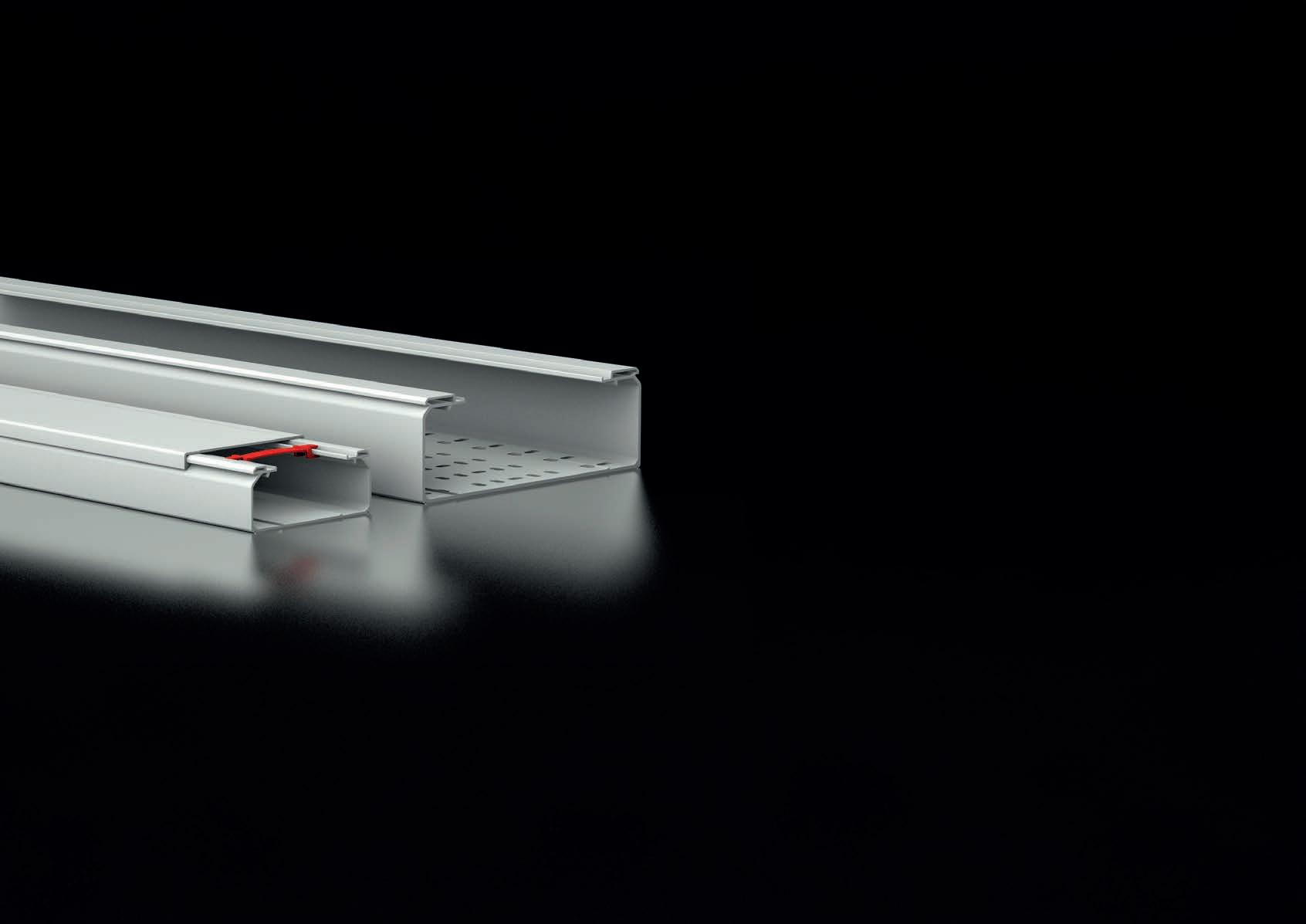
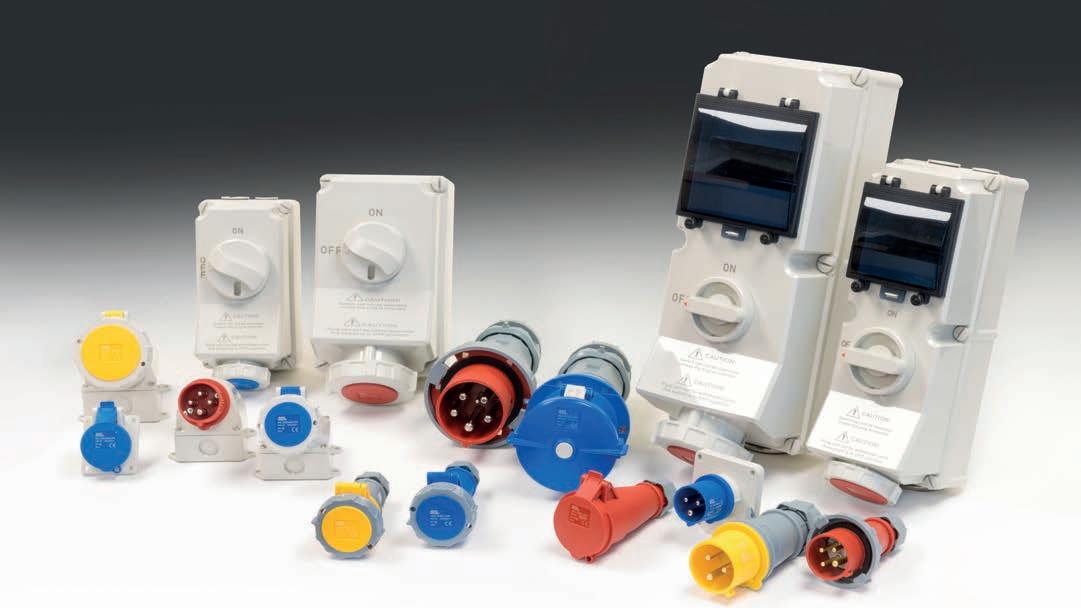


• In-Line Plugs & Sockets
• CEE IEC 60309 (BS4343) Standard
• IP44 or IP67 Ingress Protection
• Colour coded: 110V Yellow, 240V Blue, 415V Red
• Available in 3, 4 & 5 Pin
• Easy installation, high reliability & long life
• Metric cable entries on Surface Mount Sockets & Interlocked Sockets



Chris Mellor-Dolman, Head of Marketing at Webro, explains some of the most common cable installation mistakes, along with details of how to avoid them.
Cable installation might seem straightforward, but even experienced installers can fall into costly traps that compromise system performance, safety, and reliability. Success depends on meticulous attention to detail, proper product selection, and systematic installation practices that account for both immediate performance requirements and long-term operational reliability.
Seemingly minor oversights during installation can transform into significant operational challenges that affect entire projects. Extensive experience supporting installers across diverse sectors shows that installation mistakes typically follow predictable patterns. The good news is that understanding these patterns and implementing proper prevention strategies can virtually eliminate the risk of installation-related failures.
One of the most fundamental yet frequently overlooked aspects of cable installation begins before you even arrive on site. Improper handling and storage practices can compromise cable integrity before installation even begins, setting your project up for failure from day one.
The most common handling mistakes include dragging cables across rough surfaces, dropping heavy reels, and exposing cables to extreme temperatures or moisture during transport and storage. Many installers also make the error of removing cables from their protective packaging too early, leaving them vulnerable to contamination, physical damage, or UV exposure. Additionally, storing cables in areas with excessive heat, cold, or humidity can cause the jacket materials to become brittle or the internal conductors to expand and contract, potentially affecting long-term performance.
These handling errors can lead to microscopic damage that may not be immediately apparent, but will manifest as signal degradation, increased attenuation, or complete failure over time. Damaged cables often need replacement, leading to project delays and increased costs.
Temperature control forms the cornerstone of effective cable storage. Industry best practice recommends maintaining storage temperatures between 10°C and 30°C, with relative humidity levels below 85%. Extreme temperature fluctuations can cause repeated expansion and contraction cycles that weaken cable structures over time, particularly affecting the bond between different material layers.
To avoid these problems, always follow manufacturer-recommended handling procedures and treat cables as precision instruments rather than simple commodities. Store cables in their original packaging until needed, use proper lifting techniques and equipment, and never drag cables or allow reels to drop. For outdoor storage, protect cables from direct sunlight and moisture using weatherproof covers. During transport, secure reels properly to prevent rolling and ensure adequate ventilation in enclosed vehicles.
Every cable has physical limitations that, when exceeded, can cause irreversible damage to its internal structure. Bend radius and pulling tension specifications are carefully calculated limits that ensure optimal performance throughout the cable’s operational life.
The bend radius represents the minimum curve a cable can sustain without damaging its internal components. For most cable types, the minimum bend radius during installation should be at least 10 times the cable’s overall diameter, though specific requirements vary by construction and application. Exceeding this limit can crush the cable core, break individual conductors, or in the case of fibre optic cables, cause light leakage that significantly degrades signal quality.


Similarly, pulling tension limits define the maximum force that can be applied during installation without stretching or breaking the internal elements. Common violations include forcing cables around tight corners, using excessive pulling force when threading through conduits, and installing cables in environments where thermal expansion will exceed the design parameters. When these specifications are ignored, the consequences can be severe and often delayed, making diagnosis difficult.
Prevention requires careful planning and the right installation techniques. Always consult the cable datasheet for specific bend radius and tension limits. Use appropriate cable pulling equipment and techniques, including lubricants when specified by the manufacturer. Detailed specifications should be available for all products, from tight-buffered fibre cables requiring careful radius management to armoured cables that can withstand higher pulling forces.





Take your listening experiences to new heights.
Take your listening experiences to new heights.
The all-new 8” ln-Ceiling Speakers by Sonos and Sonance feature completely new acoustic components, offering natural, room-filling sound with discrete installation.
The all-new 8” ln-Ceiling Speakers by Sonos and Sonance feature completely new acoustic components, offering natural, room-filling sound with discrete installation.
Pre-order now at your distributor
Pre-order now at your distributor


Selecting the wrong cable specification for the installation environment is a critical error that can lead to safety violations, premature failure, and non-compliance with building regulations. This mistake often stems from inadequate understanding of environmental requirements or attempts to reduce costs by using lower-specification cables.
Common examples include using standard PVC cables in escape routes where Low Smoke Non Halogen (LSNH) or CPR-compliant cables are required, installing indoor-rated cables in outdoor environments where UV resistance and moisture protection are essential, or using unscreened cables in high-EMI environments where electromagnetic interference will compromise signal integrity. Another frequent error is failing to specify fire-resistant cables in life safety applications where circuit integrity during fire conditions is legally mandated.
The consequences of using inappropriate cables extend far beyond simple performance issues. Non-compliant installations can result in failed inspections, legal liability, and insurance complications. From a technical perspective, cables operating outside their design parameters will experience accelerated degradation, potentially causing system failures at critical moments. Environmental factors such as moisture ingress, UV degradation, or chemical exposure can cause insulation breakdown, creating safety hazards and requiring expensive remedial work.
Understanding application-specific standards is equally important. Fire alarm installations require cables compliant with BS 5839 and may need enhanced fire resistance for life safety circuits.
Specifying the right cable construction for your specific application, and ensuring compliance whilst optimising performance and cost-effectiveness, is an exact science that requires careful consideration.
Professional cable installations require systematic organisation that enables efficient maintenance and troubleshooting throughout the system’s operational life. Poor labelling and chaotic routing might not affect initial system functionality, but they create significant long-term operational challenges that can multiply project costs over time.
Common organisational failures include inconsistent or absent labelling systems, cables routed without logical structure, mixing different cable types in the same routes without proper separation, and failing to maintain adequate documentation of cable runs and connections. Many installers also underestimate the importance of maintaining separation distances between power and signal cables.
The operational consequences of poor organisation become apparent during maintenance, modifications, or fault-finding activities. Unlabelled cables can result in hours of tracing time, whilst poor routing makes access difficult and increases the risk of disturbing working circuits during maintenance. Mixed cable types without proper separation can lead to interference issues, particularly in sensitive applications such as audio-visual installations.
Implementing effective cable management begins with planning the installation layout to provide logical, accessible routing with appropriate separation between different cable types. Establish a consistent labelling system that clearly identifies each cable’s function, destination, and specification, and use durable labels that won’t fade or detach over time.
Electromagnetic compatibility and earthing requirements are critical aspects of cable installation that significantly impact system performance and safety, yet they’re often poorly understood or inadequately implemented. This is particularly important in today’s environment where electronic systems operate in increasingly crowded electromagnetic spectrums.
Common EMC-related mistakes include failing to properly terminate cable screens at both ends, creating earth loops through inappropriate bonding practices, insufficient separation between power and signal cables, and using unscreened cables in high-interference environments. Many installations also suffer from inadequate earthing systems that fail to provide effective reference points for both safety and signal integrity. In RF applications, poor connector quality or incorrect assembly techniques can create intermodulation products that interfere with other services.

The consequences of EMC failures range from subtle performance degradation to complete system malfunction. Safety implications include increased risk of electrical faults and potential non-compliance with electromagnetic compatibility regulations.
Proper EMC design begins with cable selection appropriate to the electromagnetic environment. Ensure screens are properly terminated using appropriate techniques and hardware, maintaining 360-degree continuity wherever possible. Plan cable routes to minimise exposure to interference sources and maintain adequate separation distances between power and signal cables.
Perhaps the most costly mistake in cable installation is failing to perform adequate testing and maintain proper documentation. Many installers rely solely on visual inspection or basic continuity testing, missing intermittent faults or performance issues that will cause problems later. This approach might appear to save time initially, but invariably leads to expensive remedial work and potential liability issues.
Inadequate testing practices include skipping performance verification tests, using inappropriate test equipment, failing to test under realistic load conditions, and not maintaining comprehensive test records. Many installations also suffer from incomplete documentation that makes future maintenance and modifications difficult.
The consequences of insufficient testing become apparent when systems fail under operational conditions, often at the most inconvenient times. Intermittent faults are particularly problematic as they can be difficult to reproduce and diagnose, leading to extended downtime and customer dissatisfaction. From a business perspective, inadequate testing can result in warranty claims, callback costs, and damaged reputation.
Comprehensive testing should be planned as an integral part of the installation process, not an afterthought. For structured cabling systems, test to appropriate standards such as ISO/ IEC 11801 or TIA-568, using calibrated test equipment appropriate to the cable category and application requirements.
Webro, webro.com



Say goodbye to bulky, unsightly EV chargers with our latest in-wall EV charging solution which combines a slim, aesthetically pleasing design with robust and reliable functionality.
• Only 37mm deep when recessed
• Retrofittable & Easy to install Integrated circuit protection, no need for extra upstream devices
• Available recessed or surface-mounted
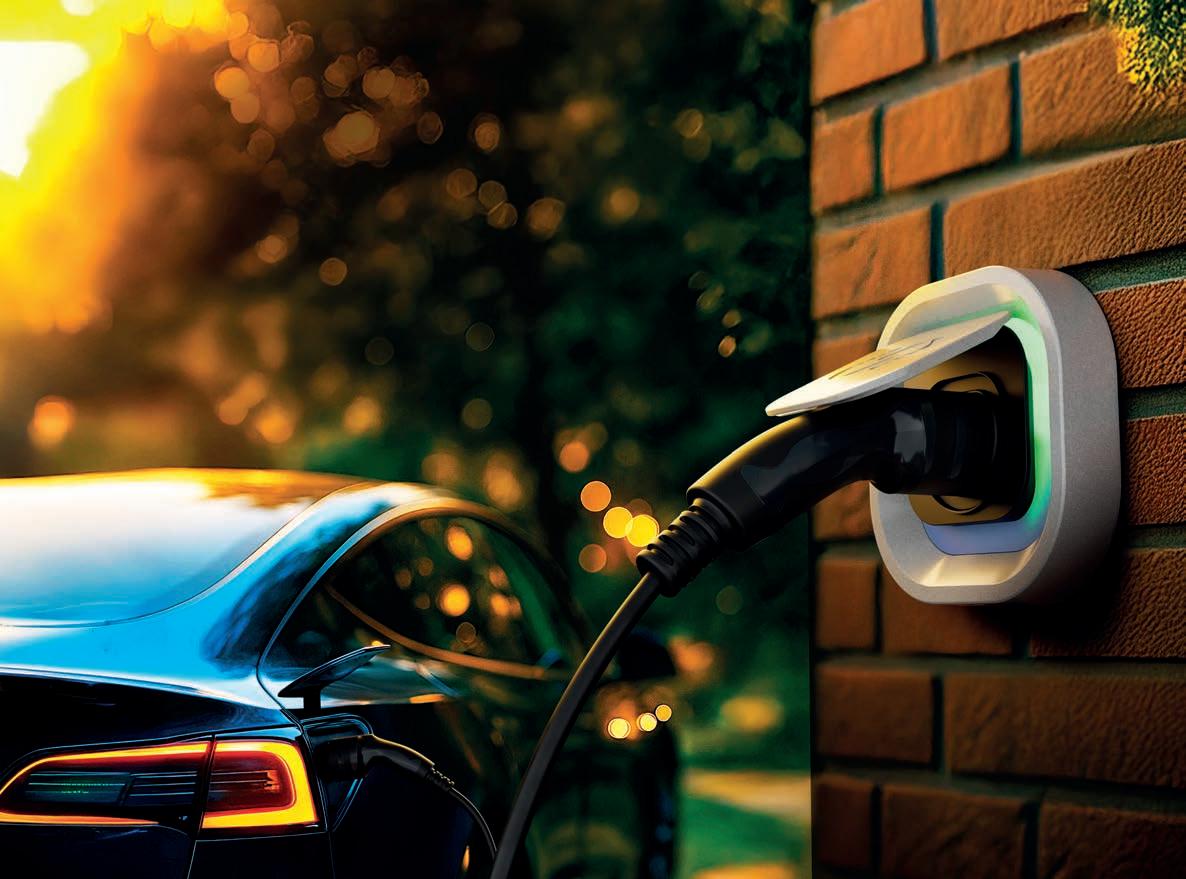
Scan the QR code to view the complete range
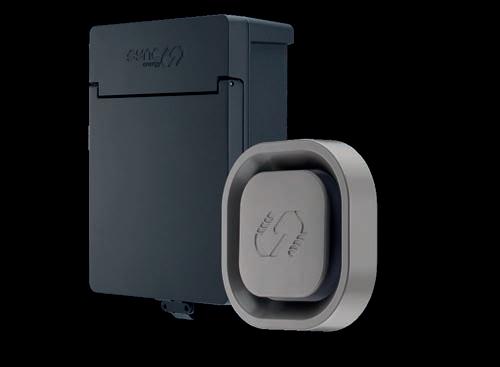
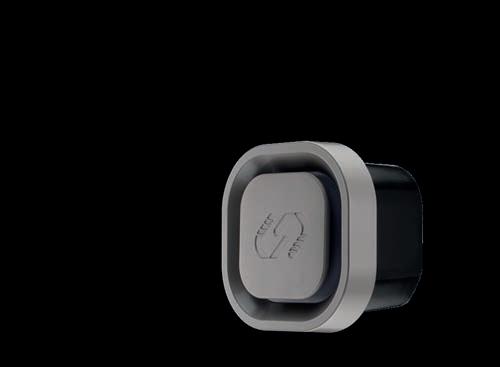

Sync Energy, part of the Luceco Group, has officially launched Sync Energy Link, its smallest, most design-forward EV charger to date.
Engineered to blend seamlessly into modern living environments, Link features a unique, patent-approved two-part design, combining smart connectivity, ease of installation, and sleek aesthetics into one intelligent charging solution.
With the continued shift towards home EV charging and increased demand for discreet, high-performance solutions, Sync Energy Link arrives as a game-changing addition to the installer’s toolkit.
Building on the brand’s mission to make sustainable technologies smarter and more accessible, Sync Energy Link represents a new benchmark in design-led EV charging, delivering a premium, minimalist finish without compromising on performance.
“Less is more,” says Gareth Yeomans, Product Manager at Sync Energy. “The Link takes AC chargers to the next level. The innovative design combines both
charger and EV consumer unit into one, which in turn, means the outlet can blend seamlessly into the fabric of the building. Whether as recessed or surface mounted, the Sync Energy Link is the perfect blend of technology and looks, providing a stunning architectural finish to your EV charging solution.”
Available in both Wi-Fi and 4G variants, Link is engineered for durability with IP65 and IK10 ratings ideal for exposed installations. At just 37mm deep when recessed, it delivers a clean, low-profile finish perfect for new builds and design-conscious retrofits. Its modular, two-part design allows the socket outlet and control unit to be installed separately, yet supplied together as one complete kit. This gives installers the flexibility to choose between recessed (in-wall) installation for an ultra-minimalist appearance or surface (on-wall) mounting for faster, retrofit-friendly applications.
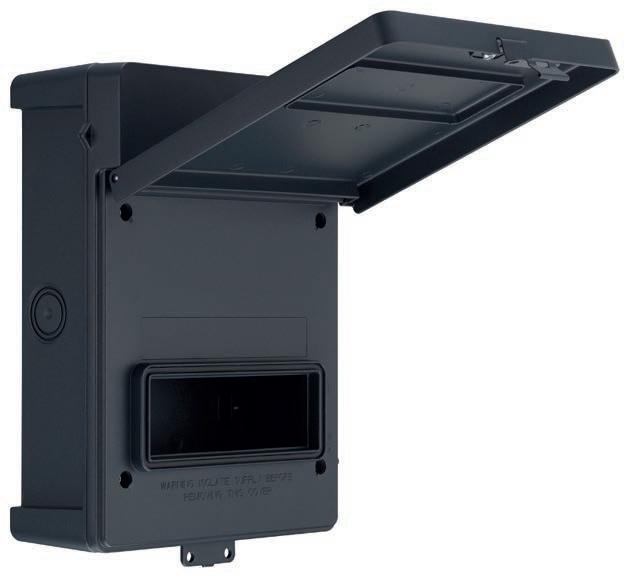
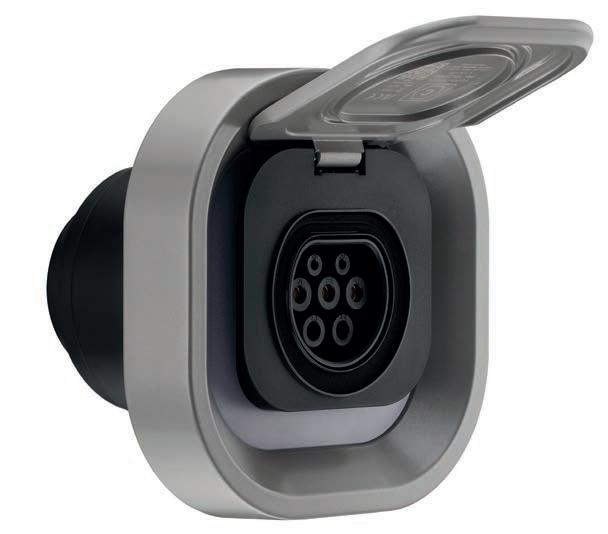

Sync Energy Link delivers on more than just looks; it’s packed with features to meet today’s technical expectations. Delivering 7.4kW dynamic charging via a Type 2 socket, Link is fully compatible with the Sync Energy app and supports OCPP 1.6J for seamless monitoring and control.
Onboard safety features include a built-in Type A RCD and integrated SPD, ensuring compliance with the latest regulations, without the need for upstream devices or additional earth rods, resulting in a simplified installation that saves time and reduces material costs, all backed by a three-year warranty and Sync Energy’s UK-based technical support team.
Launching alongside the new Sync Energy Flow range, which includes hybrid inverters, modular stackable battery storage, and solar power diverters, Link fits seamlessly into Sync Energy’s growing suite of home energy management solutions. Whether specified as a standalone unit or part of a complete system, Link offers a future-ready, installer-friendly EV charging solution.
Sync Energy, sync.energy
Sync Energy is dedicated to making sustainable living simpler. With a mission to design connected, user-friendly energy systems that reduce carbon emissions and put control back in the hands of homeowners, Sync Energy is empowering a new era of smarter, greener living.
For more information on the Sync Energy Link EV Charger, visit sync.energy/link.
Sync Energy is part of the Luceco Group, which is internationally recognised as one of the market leaders across all the key electrical categories.



C.K Tools, a leading industry name in professional hand tools, has unveiled the relaunch of its best-selling flagship range of pliers and cutters, Redline VDE, featuring a brand-new cutting-edge handle design to improve comfort and usability.
Following extensive research into ergonomics, comfort, safety and feedback from users, the new-look pliers and cutters range has been re-developed with expert German manufacturing to deliver the highest-class, VDE-compliant tools, offering quality, precision and comfort –now with additional tool tether for added safety when working at height.
Work at height safety is becoming more of a focus due to corporate responsibility and duty of care, but also because of lost time and injury reasons. There is now a much more comprehensive understanding of the dangers of working at height.
With C.K Tools supplying the electrician or electrical engineer and the focus on renewables, whether that be solar or wind for example, it was logical for the company
to develop a range that not only provided VDE approved safety, but also had working at height solutions integrated into it.
The new Redline VDE range features 19 SKUs including side cutters, cable cutters, snipe nose pliers, combination pliers and the best-selling Combicutter – available in a variety of sizes to accommodate different user preferences.
Brinley Buckley-Roberts, Head of Marketing at C.K Tools, comments, “We’re thrilled to bring this relaunched range to market, after years of expert research and development. We’ve remastered our best-selling range to ensure long-life performance, complete with induction hardened jaws, optimised geometry and a two-component handle with improved ergonomics.
“The addition of a tool tether point ups-the-ante when it comes to safety and convenience; crucial factors for us when launching products to market. The relaunch of the Redline VDR has also given us the opportunity to push harder into industrial
Click Scolmore continues to expand its Elucian consumer units and protective devices ranges, and now offers three different RCBO devices – a 25A RCBO, a compact 1 Pole and switched Neutral (Type A) RCBO and a bidirectional RCBO.
The Elucian Bidirectional RCBO is crucial for ensuring user protection in the event of a fault during a loss of supply.
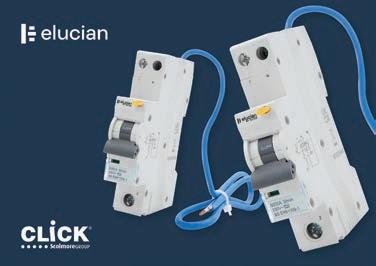
These devices are commonly used with generating sets, where the current can flow in both directions, ensuring that the installer is still protected under fault conditions.
There are three RCBO types available:
• Standard RCBOs, known as 1 pole plus unswitched Neutral, were the norm, and their uses ranged from socket circuits and lighting circuits across the board.
• The second iteration was similar, but included a switch Neutral, and this version is quickly becoming the new norm for contractors.
• The latest device is the bidirectional RCBO which includes a switched Neutral. These would be used where energy flow is possible in both directions from a generating set.
Elucian, elucianuk.com
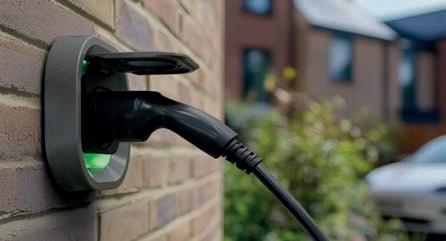

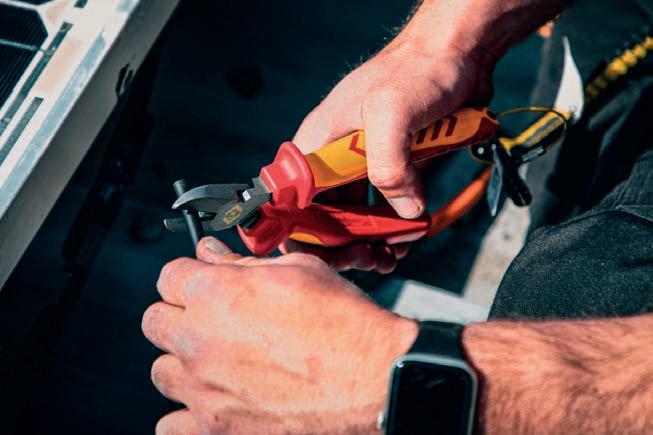
and renewables sectors, where we’ve seen a real demand for this type of feature.”
Expanding on the BG Single Phase Circuit Protection range introduced earlier this year, British General has announced the launch of new BG Dual Row Circuit Protection, designed for larger domestic and light commercial applications, bringing more choice and flexibility to the range.
Available in two size options – a 36 module and a 48 module – both come supplied with a 100A main switch as standard, delivering the same trusted performance and reliability that professionals have come to expect from all of BG’s products.
The improved Type 2 single module SPD eliminates the need for extra MCB protection, freeing up an additional circuit way, whilst the new MCB-style blanks, a rear clip-in cable protector, and an updated grommet strip contribute to a neater and more organised installation.
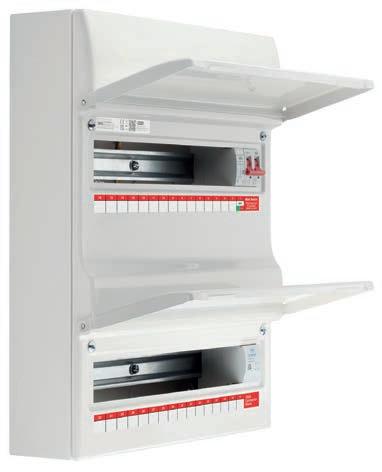
An elongated lifting section on the lid visor for strength and easier access, as well as an innovative lid retainer, makes accessing devices and labelling easier than ever. BG, bgelectrical.uk
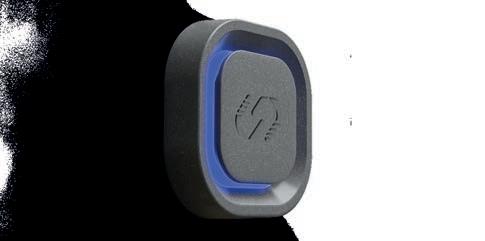

Samac Fixings has released its new Viper Power Tool Accessories range, full of high-performance drilling solutions built to match the top trade-quality levels required for demanding installer work.
From SDS+ hammer drill bits and masonry sets to bi-metal holesaws and arbor bits, the Viper range covers every drilling need across timber, metal, tile, masonry and more – with every product engineered to perform in the toughest and most challenging site conditions.
Highlights include the HSS Cobalt Drill Bits, which are crafted for high-performance bolts and fittings drilling in tough ferrous and non-ferrous metals, offering increased heat resistance and longer tool life.
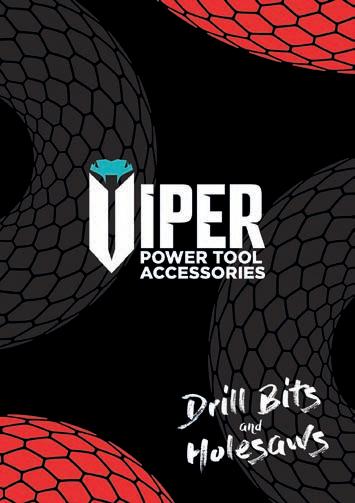
The V-Tooth Hard Tile Bits, meanwhile, are engineered for speed and precision and feature a patented tungsten carbide tip that delivers up to 20 times faster performance than a standard hard tile drill bit. The sharp-angled design enables fast starts and clean cuts through tile, marble, and stone, and they’re perfect for roof tiles, anchors and into masonry. Samac Fixings, samacfixings.co.uk
British General (BG), a leader in reliable safety solutions, proudly introduces the Combination Smoke & Heat Alarm; a purpose-built device designed to protect homes in critical areas such as attics and lofts, especially where PV inverters are installed.
Developed with installer convenience and designed for end-user peace of mind, this alarm offers dual detection and advanced functionality through its wireless RF remote capability. Paired with the BG SDMREM Remote (sold separately), users can test and silence alarms remotely, eliminating the need to access hard-to-reach areas such as loft spaces. This makes it an ideal solution for modern homes with solar energy systems or limited access zones.

The unit features a sealed-in 10-year lithium backup battery, ensuring protection even during mains power outages, with no battery changes required throughout the product’s life. Designed to be hardwired into the mains supply, the alarm seamlessly interconnects with BG’s full range of smoke, heat, and CO alarms – delivering whole-home fire safety coverage. BG, bgelectrical.uk
Click Scolmore is further enhancing its New Media range with the launch of new CAT-6A modules, delivering high-speed data connectivity for today’s increasingly demanding media and network installations.
The new CAT-6A modules are engineered for ultra-fast performance, supporting data speeds of up to 10 Gbps over cable lengths of up to 100 metres. With a high-frequency operation at 500 MHz, they are designed to ensure dependable, high-speed data transfer, even across extended distances.

Ideal for both residential and commercial projects, these modules offer installers a flexible and efficient solution for integrating data, audio, and visual connections.
A single New Media faceplate can be configured with multiple interchangeable modules to suit various media requirements. The clip-fit design allows quick, tool-free installation into blank mounting plates.
The new CAT-6A modules are offered in three colour options – black, white, and grey.
Click Scolmore, scolmore.com
Unicrimp, part of the Scolmore Group of companies, offers a range of IP66-rated, weatherproof junction boxes with semi-transparent lids. The addition of the semi-transparent lid takes the IP Box to the next level, allowing you to see the inside connections without compromising the integrity of the enclosure.
The Q-Nect IP66 junction box is designed to make installations more efficient. It can house four of the 3 Port Lever Connectors using the 360° detachable cradle and with a curved lid, it provides additional space for wires. The lid is locked using quarter turn fasteners. The semi-transparent lids are available on the IP66 Weatherproof Enclosure that is furnished with four 3 Way Lever Connectors.
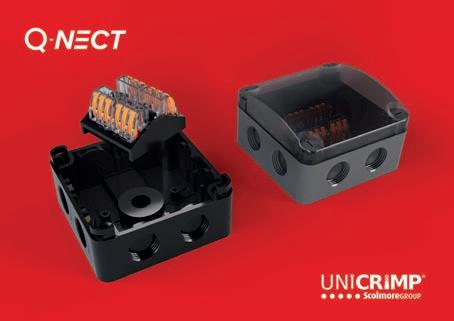
The junction box features 10 membrane entry points. Protection against moisture and dust is enhanced with the self-sealing membranes which provide a faster and more secure cable entry, whilst at the same time maintaining the IP66 rating. Installers have the option of using up to eight M20 cable glands with the junction box.
Unicrimp, unicrimp.com
The Sync Energy App
From setup to daily use, the Sync Energy App unifies the entire home energy system in one intuitive platform




Leading cables distributor, Batt Cables , has announced a major new logistics centre acquisition in South Yorkshire as part of its long-term growth strategy and to maximise the growing demand for cable solutions in the UK. The 250,000ft 2 new-build facility in Doncaster is creating 50 new jobs in the area, to help run the operation.
Batt is the longest established cables distributor in the UK, with operations across Europe and the USA. The new
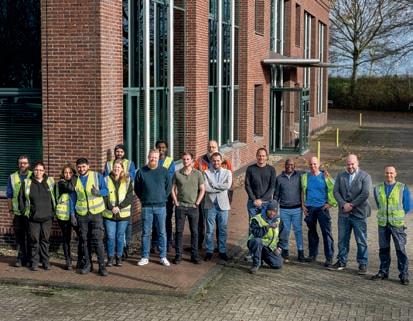
site is a key part of its ambitious growth plans to increase the company’s nationwide distribution capabilities and enable further improvements in customer service. The Doncaster site complements existing Batt facilities in Edinburgh, Manchester, Bristol and Erith.
Among the new roles being created are managerial positions in operations planning, transport and site management. Beyond the management roles, Batt will also be seeking to recruit warehouse team managers and operatives who will work together to ensure this new distribution site is sector leading.
Strategically located near major motorways including the M1, M18, and M62, the Doncaster hub will enable efficient delivery across the UK. The facility will house an expanded inventory of over 3,200 essential cables and accessories, enabling Batt Cables to meet increasing customer demand with improved stock availability and reduced transit times.
Equipped with advanced stock management and order processing systems, the new centre is designed to streamline operations, offering quicker response times and greater reliability for clients across industries such as construction, infrastructure, and energy.
Rob Barclay, CEO of Batt Cables, comments, “The significant investment we’re making in the brand new, state-of-the-art warehouse facility represents a
Arctic Hayes, a leading supplier of specialist heating and plumbing consumables and tools, has launched its most advanced product catalogue yet – along with a fully interactive digital edition for 2025, designed to better support installers and merchant partners.
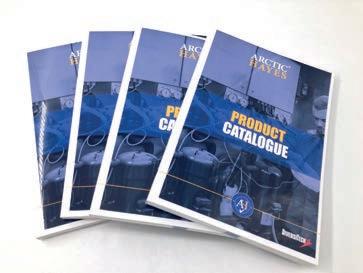
The new catalogue reflects a significant leap forwards in how product information is delivered and accessed. Available as a responsive digital flipbook, the catalogue is packed with user-friendly features that make it quicker and easier for installers and merchants to find the right tools quickly and use them with confidence.
With dozens of new product lines, the updated catalogue showcases Arctic Hayes’ growing portfolio of smart, reliable solutions for every stage of the job. But it’s the digital enhancements that really set it apart – transforming a static catalogue into a hands-on resource for busy professionals.
From intuitive navigation and instant-access video guides to improved FAQs and detailed product imagery, every element of the catalogue has been designed to support the real-world needs of the trade.
Arctic Hayes, arctic-hayes.com


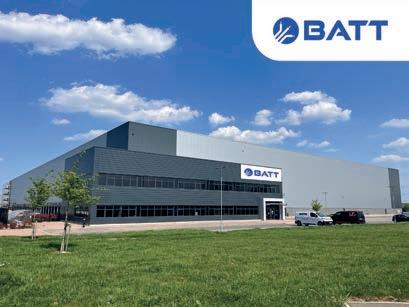
major milestone on our growth journey. The Doncaster site offers first-class working environments for our colleagues, as well as more capacity for future growth, which is fantastic.”
The new facility is expected to become fully operational in the coming months, with a phased introduction programme currently underway.
Batt Cables, battcables.com
Following the successful launch of its Espire collection of domestic fire and CO alarms earlier this year, ESP has bolstered the Espire accessories range with the addition of a new Sounder Strobe with Clear Lens.
This high-visibility warning device features a transparent diffuser and white LED, and it will sit alongside the existing red lens option, providing installers with more choice when it comes to providing dependable fire alarm components that are compliant with industry standards.

Designed for reliability and performance, the IP65-rated Sounder Strobe is powered by a mains supply and offers four selectable tones. Its white LED strobe provides a clear visual alert when a property’s alarm system is activated, with an optional audible sounder for enhanced notification.
Its IP65 ingress protection rating makes it ideal for both indoor and outdoor applications, including industrial, commercial, and harsh environmental settings.
The unit is engineered for flexible installation, featuring 2x20mm side-entry and 2x10mm rear-entry knockouts for easy wiring.
ESP, espireuk.com


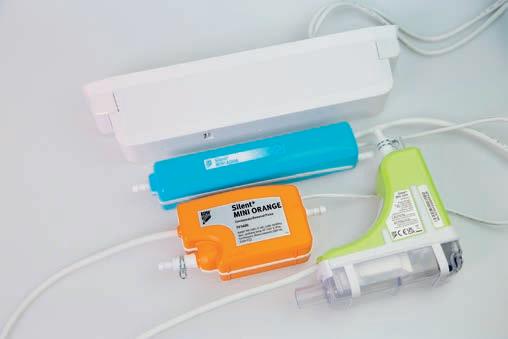
Aspen Pumps, a global market leader in condensate removal pumps, has announced the launch of the next generation of its popular Silent+ Mini Orange and Silent+ Mini Aqua pumps. These new additions complete Aspen’s 5th generation of its mini condensate removal pump range, joining the Silent+ Mini White and Silent+ Mini Lime pumps. Now offering a full sweep of ‘Quietly Brilliant’ mini pumps, Aspen gives installers and end-users the quietest, smartest, easiest to install, most reliable, and versatile mini pumps on the market. Ticking all the right boxes, Aspen has a Silent+ mini pump to suit every domestic and commercial mini-split application. Up to 90% quieter than its competitors, the 5th Gen Silent+ range operates at just 16dB(A), making it quieter than the quietest AC mini-split units, which run at 18dB(A). As the world’s quietest mini pumps, the Silent+ range offers end-users comfort without compromise, so they will be unaware the pumps are even there. Aspen Pumps, aspenpumps.com
Ovia has expanded its Inceptor Slate Backlit LED panels range with the addition of a new version that offers an energy-saving PIR motion detector function.
Designed to offer improved specification on the existing Inceptor Slate Backlit range, the new panel with integrated PIR Sensor delivers an impressive 140Lm/w efficacy and is power selectable between 22W and 30W, and CCT selectable between 4000K, 50000K, and 6500K.
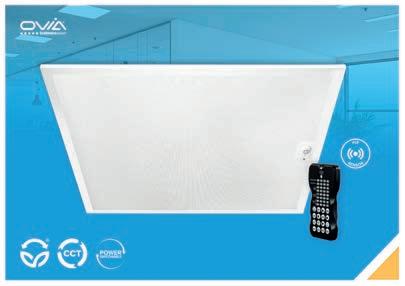
Ideal for commercial environments, these panels offer a UGR rating of <19 for reduced glare, making them suitable for offices, schools, and healthcare facilities. The built-in PIR sensor (optimal up to 4m install height) ensures that lights are only activated when motion is detected – reducing energy use and operating costs, as well as boosting sustainability.
Available separately is an advanced remote control, with a 15m range, which allows users to tailor every aspect of the lighting configuration – adjusting lumen output, motion detection range, hold time and stand-by settings. Ovia, oviauk.com
British General (BG), a trusted name in electrical accessories, has launched its latest innovation – the Fire Rated Back Box. It is designed specifically for plasterboard, cavity walls, and partitions in both domestic and commercial applications, with fire resistance tested up to an impressive 120 minutes.
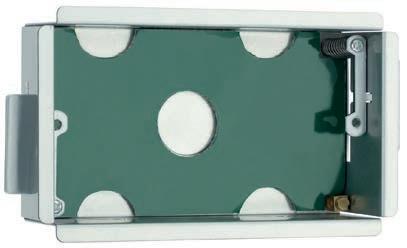
The box features a built-in intumescent pad that expands under extreme heat to seal the installation aperture and prevent fire spread – a crucial factor for new builds, particularly multi-storey residential projects. Compliant with Part B (Fire) and Part E (Sound) Building Regulations, the back box has also been sound tested to 54dB airborne insulation (ISO 10140-2:2021), ensuring it supports both fire safety and acoustic performance.
Designed with the installer in mind, BG’s Fire Rated Back Boxes include spring-loaded side clips for fast and secure fitting, along with multiple knockouts for flexible wiring access. With single and double gang options, and box depths of 35mm and 47mm, it’s versatile and fits a wide range of wall types and electrical configurations.
BG, bgelectrical.uk
Designed to withstand tough conditions, the Axiom IP66 Weatherproof range provides a safe and reliable outdoor power solution, whether this be for garden tools, lighting, pond pumps, lawn mowers or any other outdoor electrical equipment.
Protection against moisture comes with rubber gaskets over screw mounting holes, whilst corrosion is prevented via weather-resistant UV stable housing. Installation is easy with tool-less in-to-out push knockouts and quick pinch-to-open mechanisms. Finally, for extra security, the range comes designed with a padlock option.
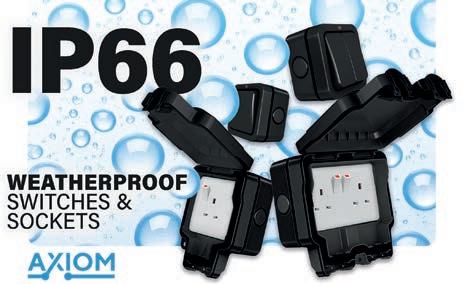
The Axiom IP66 Weatherproof range is finished in practical and attractive black enclosures and aims to cover all day to day outdoor space electrical requirements. Starting with Outdoor Switches, there are 1 and 2 gang 2 way with neon options, followed by Single and Twin Switched sockets, as well as a Twin unswitched version. Finally, suitable for use with RCD Sockets, the Axiom range includes Single and Twin Empty Enclosures.
Backed with a 25-year warranty, this IP66 range has all BS/EN and Intertek approvals.
CED Electrical, cedelectrical.co.uk
The Sync Energy App
From setup to daily use, the Sync Energy App unifies the entire home energy system in one intuitive platform




• Connect with 900+ brands
• Participate in live content sessions in the InstallerELECTRIC theatre
• The ideal place to showcase and launch new products
• Network with your industry peers
Book now to catch the early bird rate!
InstallerSHOW will return to the NEC, Birmingham on 23-25 June 2026 and is the prime opportunity to connect with our electrical community. Find out what electricians really think about the industry. Download InstallerELECTRIC’s ‘State of the Industry’ report
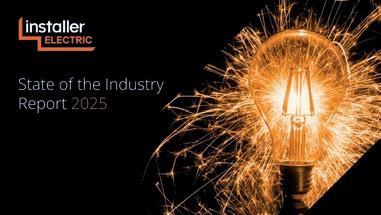

Scan the QR code to request the InstallerSHOW 2026 floorplan
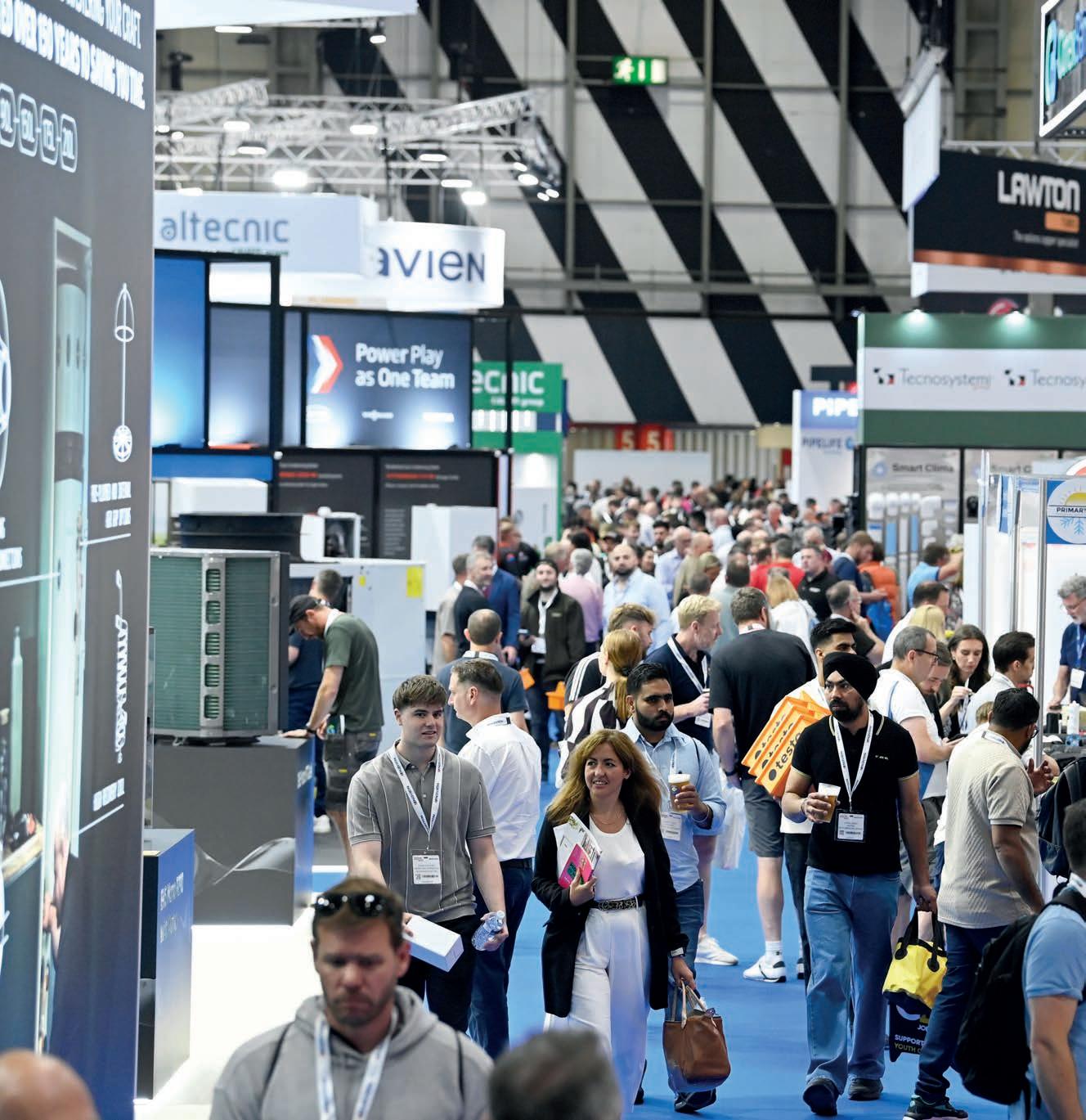
Numbers were up by 73% in the electrical contracting sector at InstallerSHOW 2025!
23-25 June 26
NEC Birmingham
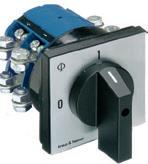
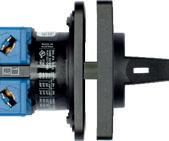
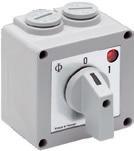

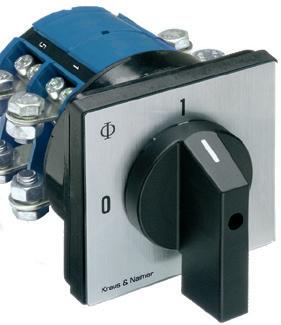

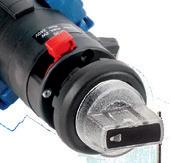
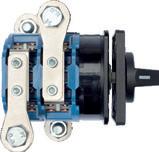
Kompaktes Aluminium-Funktionsgehäuse mit elektrischer
(illuminable) push buttons and emergency stop
Werkstoff und Oberfläche:
Gehäuse aus Aluminium AlMgSi 0,5; gleitgeschliffen und naturfarben oder schwarz eloxiert.
Befestigungsarten:

frontseitige Befestigung
rückseitige Befestigung
Rohre mit Durchmesser 30 oder 40 mm
Funktionselemente ab Werk:
Drucktaster mit grüner LED (Schließer)
Drucktaster mit roter LED (Schließer)
Drucktaster mit LED (Schließer)
Anschluss:
Anschlussleitung 5 m aus dem Funktionsgehäuse herausgeführt
Schutzart:
Anfrage:
Andere Längen, Ausführungen und Beschriftung


